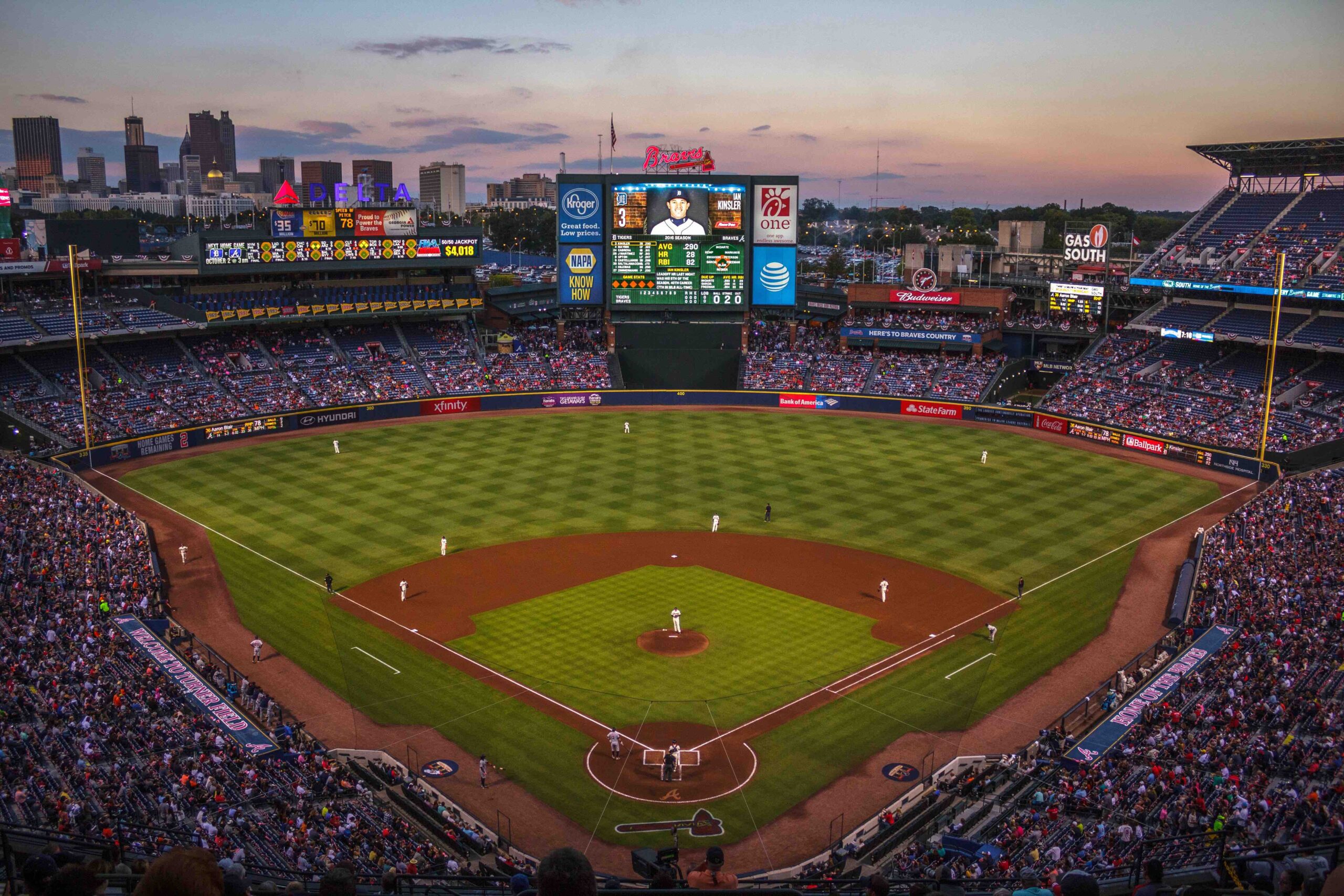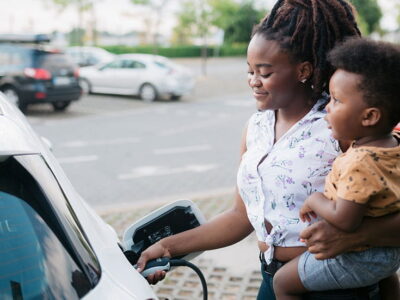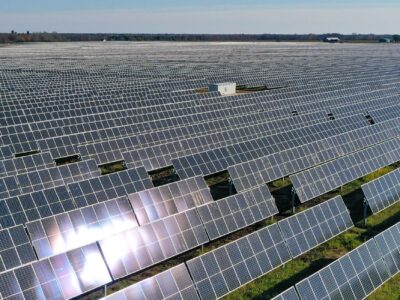Why do we love sports? Well, because they’re awesome! Professional or amateur, the U.S. is full of sports leagues with some incredible talent. These athletic feats occur in some of the most modern, goofy, or historic venues.
As sports organizations take up more sustainability initiatives, carbon emissions are dropping. The stadiums are at the forefront of this movement as teams continue to update systems to make them cleaner. This listicle provides all the eco-friendly arenas covered at The Business Download. It’s organized state by state for your convenience.
Alabama
You already know about Alabama’s sporting culture. You’re on one side of the divide: The Alabama Crimson Tide or the Auburn Tigers. This rivalry is one of the wildest in college football; it divides a state in half. The teams have a lot of bad blood, especially as the Crimson Tide continues to dominate the national space and win championships. But are they divided on their sustainability initiatives?
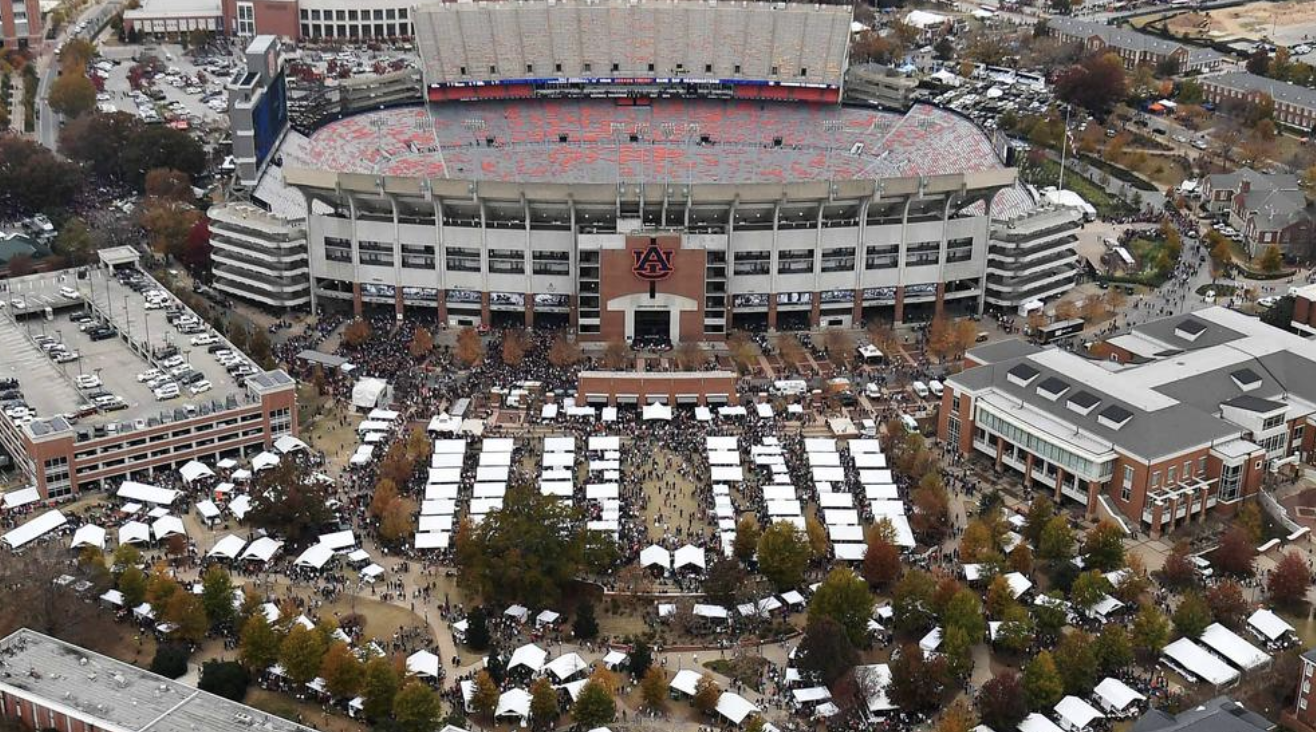
Photo Courtesy Auburn Tigers
Jordan-Hare Stadium (Auburn University Tigers): Having such a massive fanbase, Auburn University is known for its football. Jordan-Hare Stadium has been serving as the school’s token of sustainability.
First came the recycling program, where the school placed 100 bins around the stadium and more than 200 at tailgating areas. Student volunteers passed out recycling bags, and aluminum and plastic dumpsters were put in RV lots. The athletic department sponsored some fun initiatives like Get Caught Recycling, where people recycling were put up on the stadium jumbotron and could receive prizes for recycling.
By 2019, Auburn successfully recycled around 47 tons of materials, 7 tons higher than the campaign’s first year (2010).
In 2015, the Tigers joined the Green Sports Alliance to continue the efforts, and water stations were set up so fans could fill up their bottles to cut down on plastic bottles.
Two solar arrays were installed as well, one above the parking deck, as well as LED lighting. Athletes also traveled to places like the Dominican Republic, where they distributed solar light packets and water filters to families.
Back in Alabama, Auburn and U-Alabama come together to run the Beat Bama Food Drive (Beat Auburn, Beat Hunger on the Crimson Tide side). Around 8 million pounds has been donated, and Auburn edged out Bama in 2021. The school has earned a STARS Silver Rating for its sustainability achievements.
Arizona
Arizona’s climate is perfect for year-round sports. The desert state is home to collegiate and professional basketball, baseball, hockey (although this is indoors), and golf. The sunshine and warm temperature require a lot of water to keep operations like fan concessions, course maintenance, ice layering, and so on. Thus, water conservation and renewable energy projects are at the forefront of Arizona’s sustainable stadium measures.
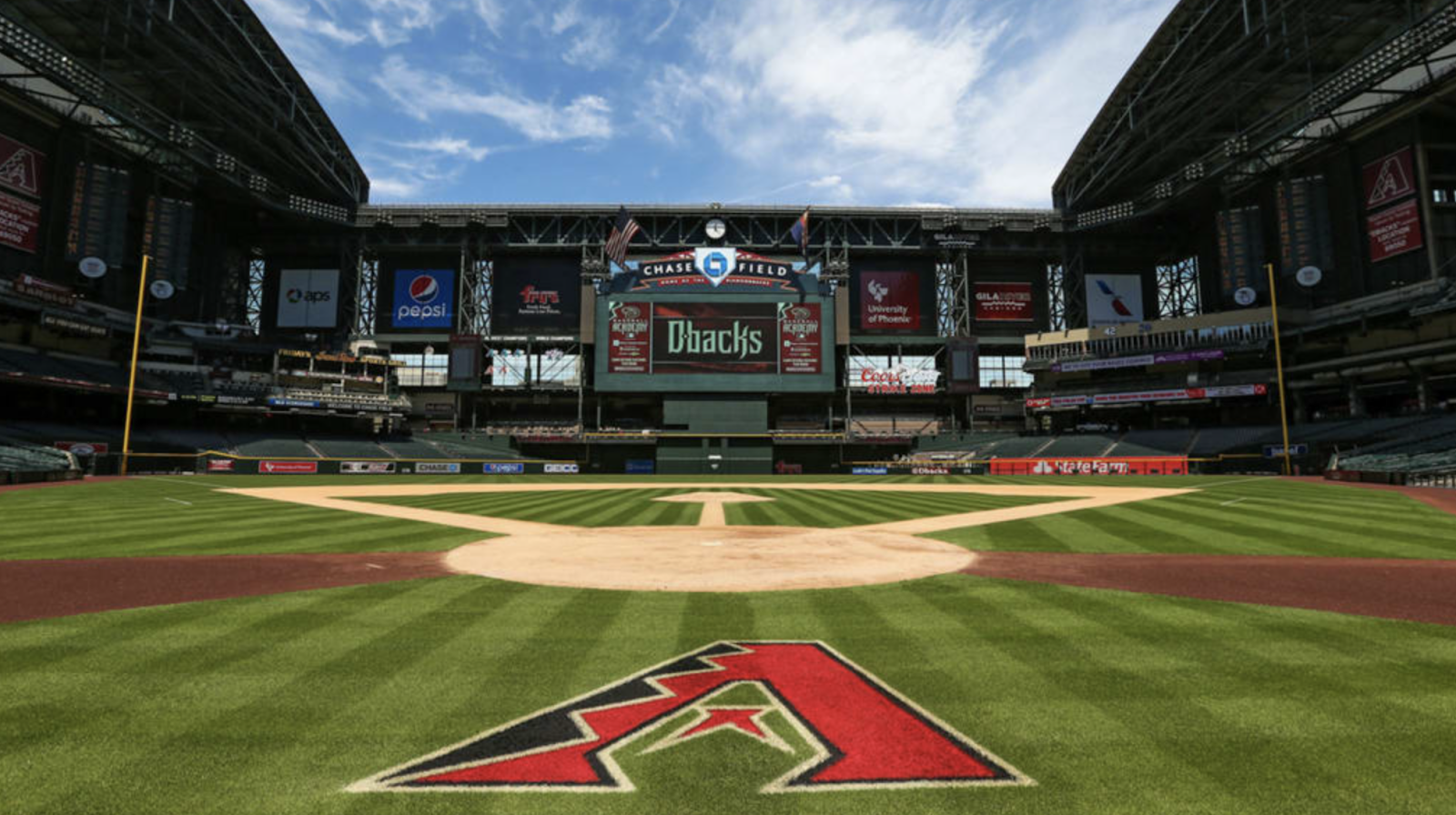
Photo Courtesy MLB/Diamondbacks
Chase Field (Arizona Diamondbacks): One of the youngest Major League Baseball (MLB) franchises, the Diamondbacks (D-backs) have been a leader in sustainable baseball venues. Chase Field installed a Solar Pavilion in 2011, which shades the main entrance while generating around 100,000 kWh of solar energy, which can power the stadium for 12 games.
A switch to energy-efficient lighting cut power consumption in the concourse by 60% and 40% in the parking lot per year. Low-flush toilets and low-flow faucets cut water use in half. Hand dryers eliminated 350 miles of paper towel trash.
In 2016, Chase Field’s recycling bins were replaced with dual ones that accommodate trash and food waste. They were made from 1,300 recycled milk jugs. The team reported a 200% increase in recycling tonnage. Concessions now use recyclable plates and cutlery. Kitchen grease is recycled into biodegradable diesel. Recycled paper and soy ink are used to make tickets and game programs.
Coors Lights and the D-backs partnered up for a collective art project made from beer cans to boost recycling. In 2022, the team participated in Anheuser-Busch’s National Recycling League to reduce gameday waste. Uneaten food gets donated, and the stadium also has a vertical farm.
The field grass is synthetic and made from eco-friendly renewable materials. It saves around 4.5 million gallons of water, and no fertilizer is needed. The D-Backs’ spring training facility is also green, becoming the first ground to earn Leadership in Energy and Environmental Design (LEED) status. It’s also the first spring training facility built on Native American lands — with local materials.

Photo Courtesy Phoenix Suns
Footprint Center (Phoenix Suns): The 2020s have been good to the Phoenix Suns and their home arena, Footprint Center. With a strong roster containing players like Devin Booker, Chris Paul, and Kevin Durant, they are looking like a force to be reckoned with in the NBA.
In July 2021, Suns’ ownership made headlines when they announced a strategic partnership with the green science firm. Footprint introduced plant-based alternatives for single-use plastic items. Composting bins with educational signage have been placed in the arena. They’re selling more reusable water bottles at the fan store.
During games, the jumbotron displays messages about sustainability, encouraging people to practice it more often. The arena is part of Footprint’s Pledge2050 campaign to reach carbon neutrality. In 2012, 966 solar panels were installed in the parking garage, generating 378,000 kWh. That’s enough clean energy to power 20 home games annually and eliminate 440,000 pounds of carbon dioxide (CO2).
During a renovation before the stadium’s renaming to Footprint Center, the Suns had low-flow and water fixtures installed to save over a million gallons of water a year. Electricity use was cut by 5.5 million kWh through LED lighting, high-efficiency mechanical systems, and air conditioning upgrades, cutting emissions by 3,800 tons.
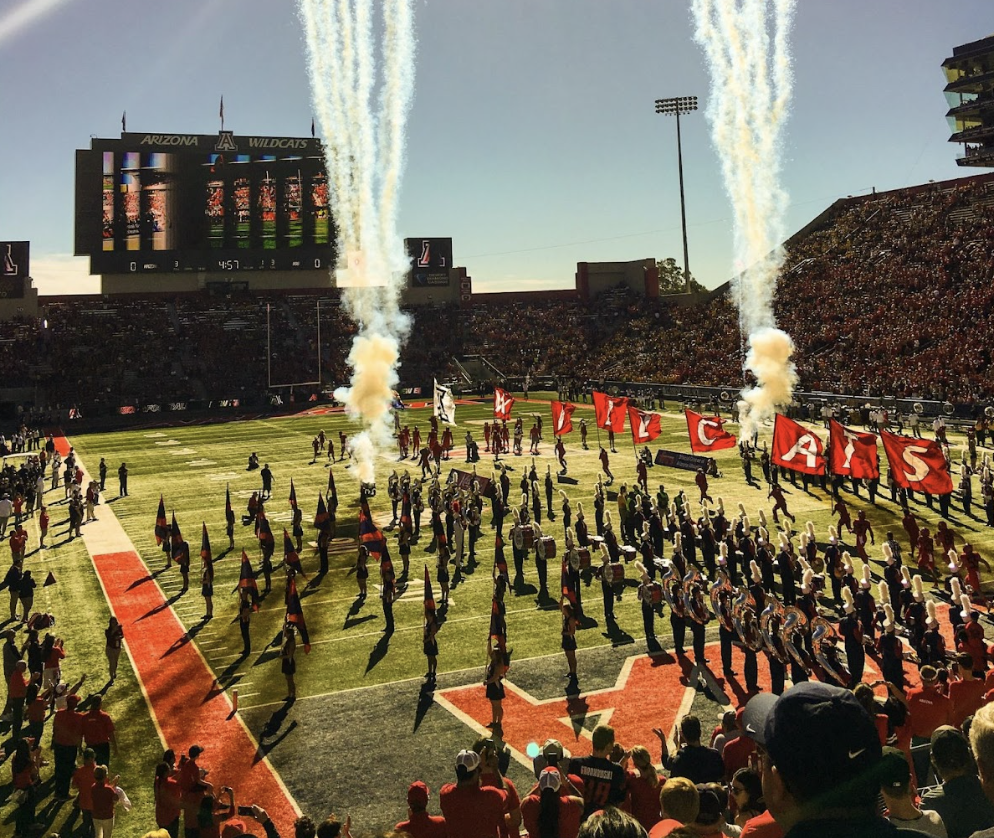
Photo Courtesy Frankie Lopez
Arizona Stadium (University of Arizona Wildcats): The University of Arizona’s (UA) athletics have operated sustainably since 2003. The first project was using reclaimed water for sports field watering.
In 2007, it was taken a step further when UA signed the American College and University Presidents’ Climate Commitment. That spearheaded renovations to Arizona Stadium in 2010, including new outdoor lighting fixtures that reduced light pollution by 75%. Synthetic turf was added later on to lower water usage and on-field temperatures.
At the Lowell-Stevens Football Facility, recycled and low-VOC materials were used to build the complex, and 75% were recycled. It has high-efficiency lighting, water conservation, and efficient HVAC systems. It has won a LEED certification thanks to these measures.
UA also became the ninth college to join the Green Sports Alliance. The Wildcats took part in the Zero Waste Game Challenge in 2015, posting a 70% waste diversion rate, third in the PAC-12’s rankings. In 2018, the school earned “most improved” honors at the Football Challenge. The college donated 267 prepared meals to reduce food insecurity.
Students have been involved in UA’s environmentalist movement, launching programs like Greening the Game in 2012 to promote recycling at gameday. They also advocate for composting. A tennis player even created sleeping mats and blankets from unused plastic bags.
Even the Student Recreation Center’s renovation in 2009 saw it use more than 25% recycled materials and high-efficiency systems to cut water usage. The Aquatic Center’s pool and showers are heated by solar energy collected from a 346 ft vacuum tube.
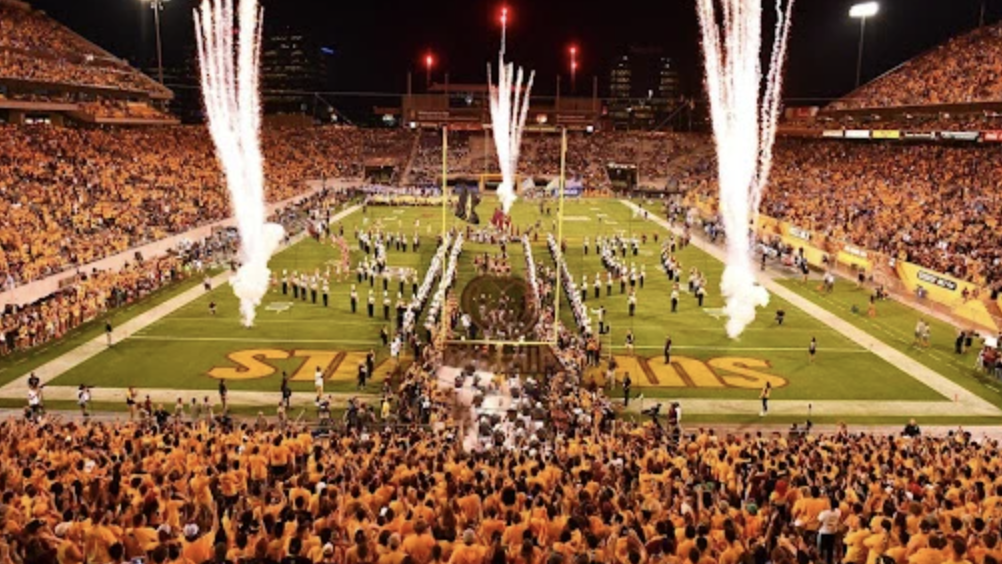
Photo Courtesy Sun Devils Facilities
Sun Devil Stadium (Arizona State University Sun Devils): Arizona State University’s (ASU) Sun Devil Stadium is a LEED gold football stadium. It underwent a $300 million renovation in 2019, making it more sustainable. Builders diverted 98% of on-site construction waste from landfills. A quarter of building materials had recycled content — 15% of the materials came from within 500 miles of ASU’s campus.
Low-flow plumbing and LED lighting were installed in nearby complexes. Thermal comfort controls improved energy and water conservation. The roofs were painted with a white reflective coat to stop the heat island effect, and trees were planted outside the stadium to shade attendants. The architecture allows for winds to cool down the venue. Low-water-use plants filter rainwater runoff and lower the need for irrigation.
Expanded bicycle parking was added to promote alternative transportation, decreasing pollution from cars traveling to the Stadium. Inside, there are more than 250 compost and recycling bins. Plastic straws were also phased out, and zero reusable waste cups were introduced. Digital ticketing eliminated paper ones, easing attendance issues and enhancing the fan experience.
In 2013, ASU hosted its first zero-waste football game. The athletic department is involved in e-waste recycling and food donation campaigns.
The college joined the Green Sports Alliance in 2014, and in 2016, ASU won the National Association of Collegiate Directors of Athletics’ Sustainability Award.
The university participated in the GameDay Challenge and the PAC-12 Zero Waste Bowl Challenge. The Sun Devils diverted 93% of 5 tons of waste produced on game day. They placed second in the challenge. Adidas recently supplied ASU with its Primegreen Ultraboost 4D shoe, made from 60% recycled materials.
California
The Golden State is one of the country’s sports hotbeds. California’s cities have some of the most decorated and rising professional sports teams and athletes. The state also has some prestigious academic institutions with decent athletic records. As California battles drought and other climate-related problems, the sports scene has adapted to be more resourceful.
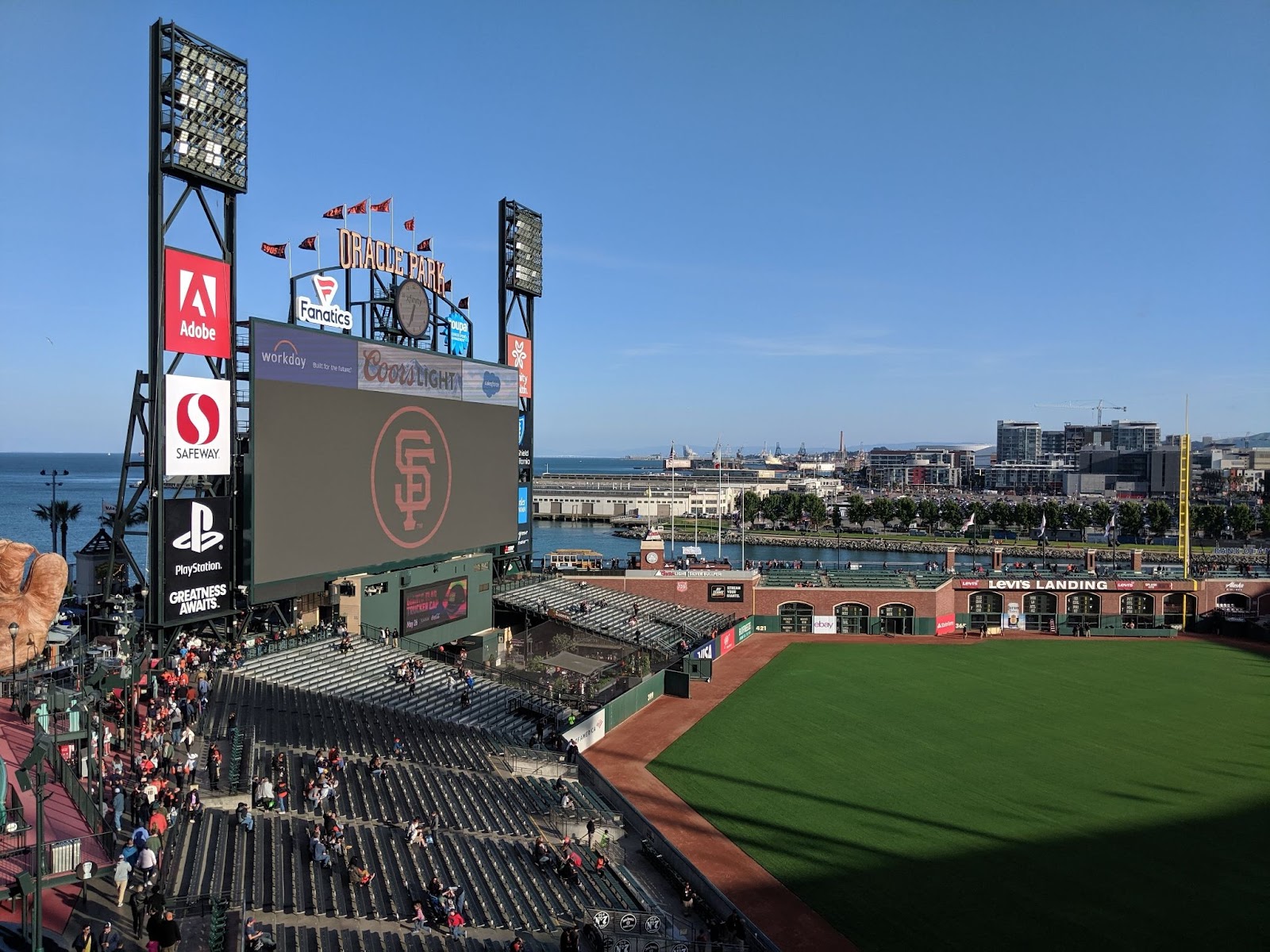
Photo Courtesy Galaand Aerilys
Oracle Park (San Francisco Giants): Oracle Park is home to the San Francisco Giants. It has been ranked second for Best Stadium Food by Ballparkratings.com. It has organic cuisine unseen at other ballparks.
In 2014, The Garden at Oracle Par opened as part of a collaboration between the Giants and Bon Appétit Management Co., right behind center field. The Garden grows 90 different types of crops like berries, avocados, tomatoes, and peppers. The produce is used at two bistros in the stadium. Ticket holders can enjoy meals before and during the game. The Garden has a nice patio to watch the game with views directly into the bullpen. It’s also an education center that teaches children how to cook.
When it comes to crop cultivation, The Garden has raised garden beds and aeroponic growing towers that reduce water usage by 95% over conventional growth. Coffee grounds have been used to fertilize the beds. An on-site sod farm supplies Oracle Park with turf and doubles as a picnic lawn.
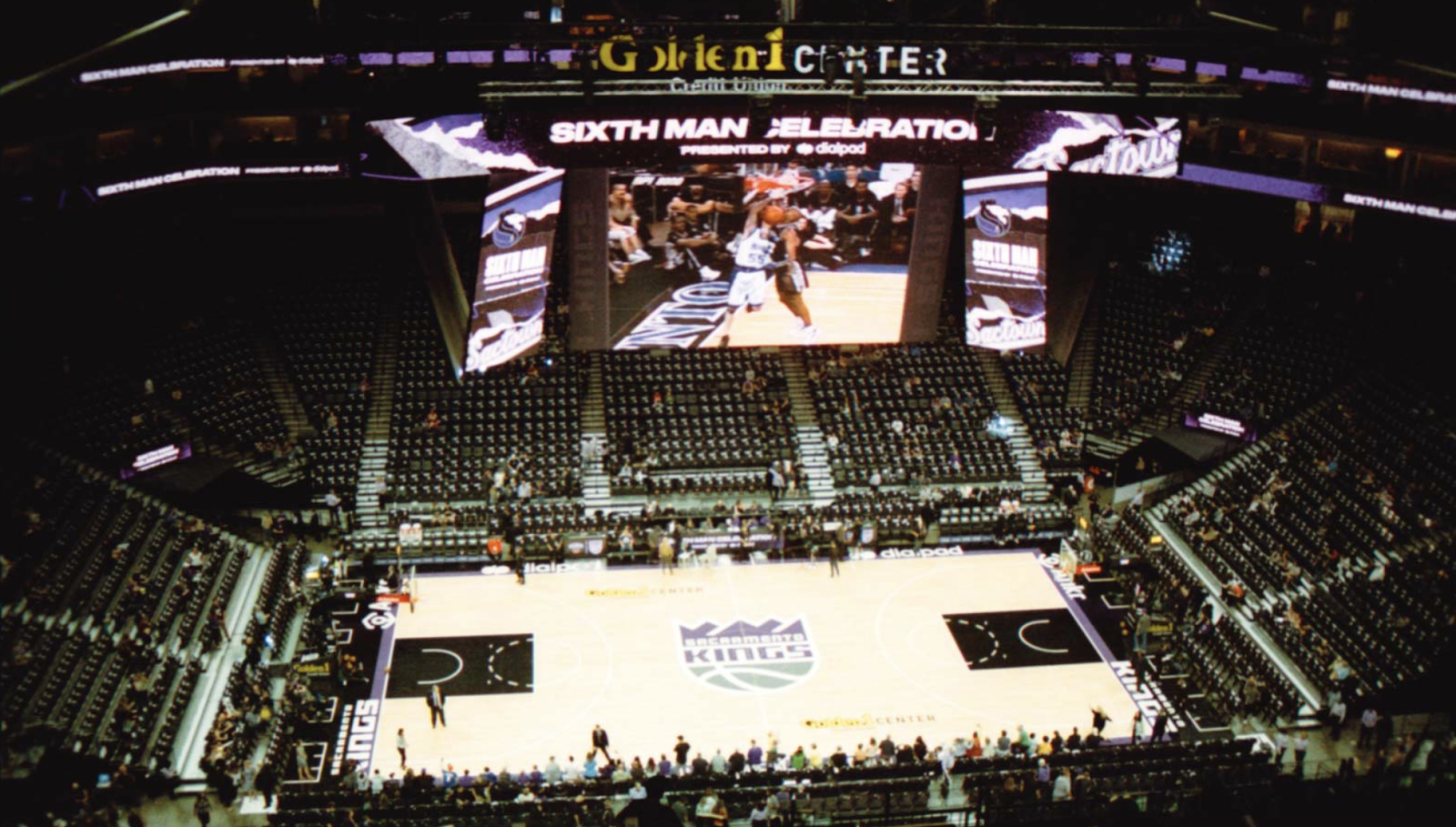
Photo Courtesy Sacramento Kings
Golden 1 Center (Sacramento Kings): Golden 1 Center was the first sports facility to earn LEED Platinum status in 2016. It also won the Beyond Sports’ Sport for Climate Action award in 2017 and was named “Project of the Year” by Green Project Management. It’s one of the most technologically advanced arenas in the U.S. It took home Best Elite Sports Facility at the Sports Technology Award.
The Kings were listed on “Fast Company’s” 2017 list of Most Innovative Companies, earning first place just above its in-state rivals, the Golden State Warriors. Golden 1 was designed to be green and have a low environmental impact. Being located in downtown Sacramento has eliminated travel-based greenhouse gases (GHGs) by 2,000 tons. It’s accessible by bike, bus, foot, light rail, and Amtrak.
The Kings take advantage of the farmland around the city, sourcing 90% of its food and drinks from within 150 miles of the venue. They only serve the best produce at Golden 1. The Loca Eats program has reduced emissions to the equivalent of 221 cars. Unserved food is donated to local food banks and those in need through the Second That program, and 13,000 meals were donated in the first 18 months of the program.
The arena has launched a new California Safe Soil program. Green waste is processed into organic fertilizer, and leftover fryer oil is turned into biodiesel that can fuel 70 cars a year. Half of the on-site waste is recycled.
Golden 1 was even constructed with recycled construction materials, with 99% of the demolition materials being recycled and 95% of waste diverted from landfills. Low-flow plumbing structures capture gray water for cleaning. Roof-water runoff irrigates living wall gardens on the arena’s exterior.
A 1.2 MW solar array sits on the roof to provide 15% renewable energy, and a solar farm nearby supplies the rest for 100% solar power. The Kings let natural winds from the rivers cool down the arena with a displaced ventilation system. These sustainable measures have increased attendance by 22% at Kings games.
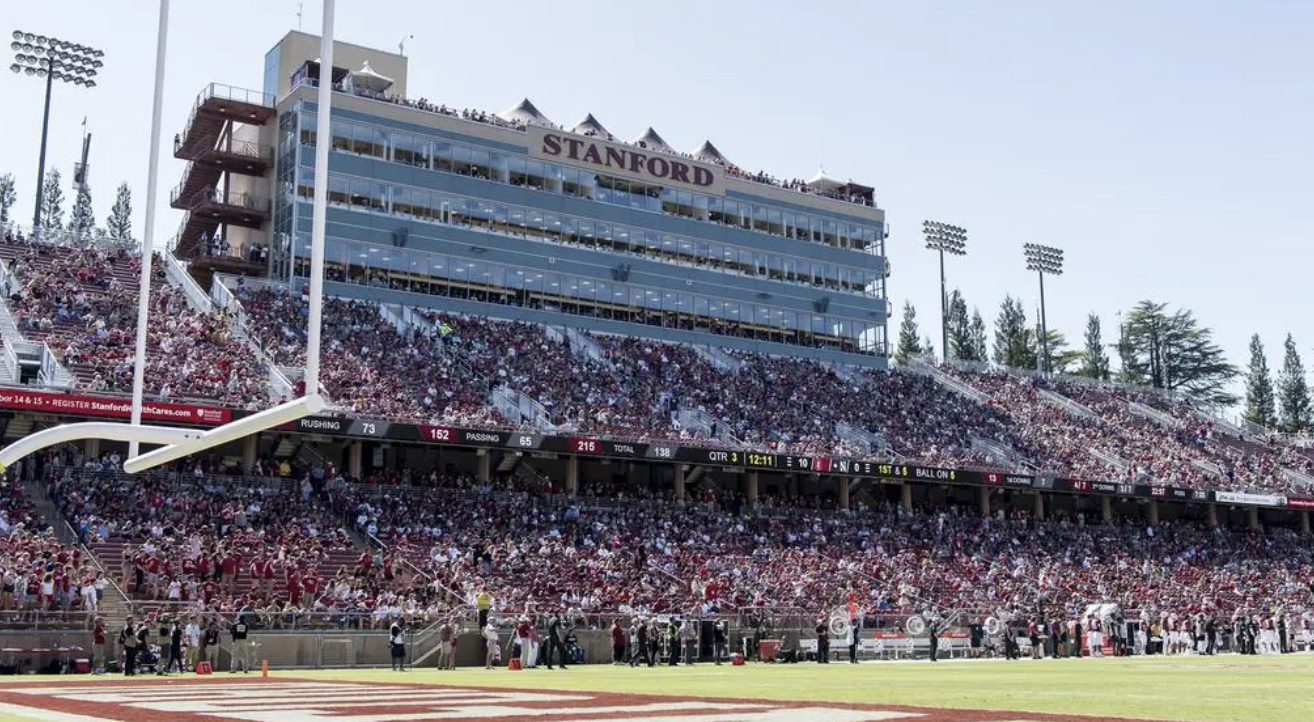
Photo Courtesy Stanford Athletics Media Center
Stanford Stadium (Stanford University Cardinals): Stanford’s sustainability measures began in 2004 with a few recycling bins at soccer, softball, and baseball fields. In 2009, a CalRecycle grant was awarded to the athletic department for increased recycling presence and awareness. The college joined the Green Sports Alliance in 2013.
Early initiatives included creating a custom compost mixture, using green cleaning products, and carbon offsets for travel emissions in 2015. Recycling collected more than 3,000 pounds and then grew to 25 tons in 2015. Compost bins were added in 2016, helping Stanford reach a 31% diversion rate during the Game Day Zero Waste Challenge.
By 2017, the Cardinals won PAC-12’s Most Improved award for the Challenge. The food recovery program collected 2,777 pounds of food to donate, bumping the school up to a 43% diversion rate, including 16% from tailgating spots. Students made kits with proper waste disposal instructions to aid the effort and distributed them to fans, increasing fan sustainability participation. Tailgating areas also got solar-powered lights to replace the diesel light towers.
At other athletic complexes, LED Lighting was added. The Maples Pavilion even has a 636 kW solar array on the roof. Even more waste was diverted, with a 68% diversion rate during the 2017 women’s basketball Game Day Challenge. For water conservation, 6.7 million gallons of domestic waste and 15 gallons of lake water were reduced by 40%. Improved irrigation lowered water usage by 20% at Stanford Golf Course.
All these efforts earned Stanford the Fan and Athlete/Player Engagement Awards. The university also opened a new climate change and sustainability program, the first new school at Stanford in 70 years.
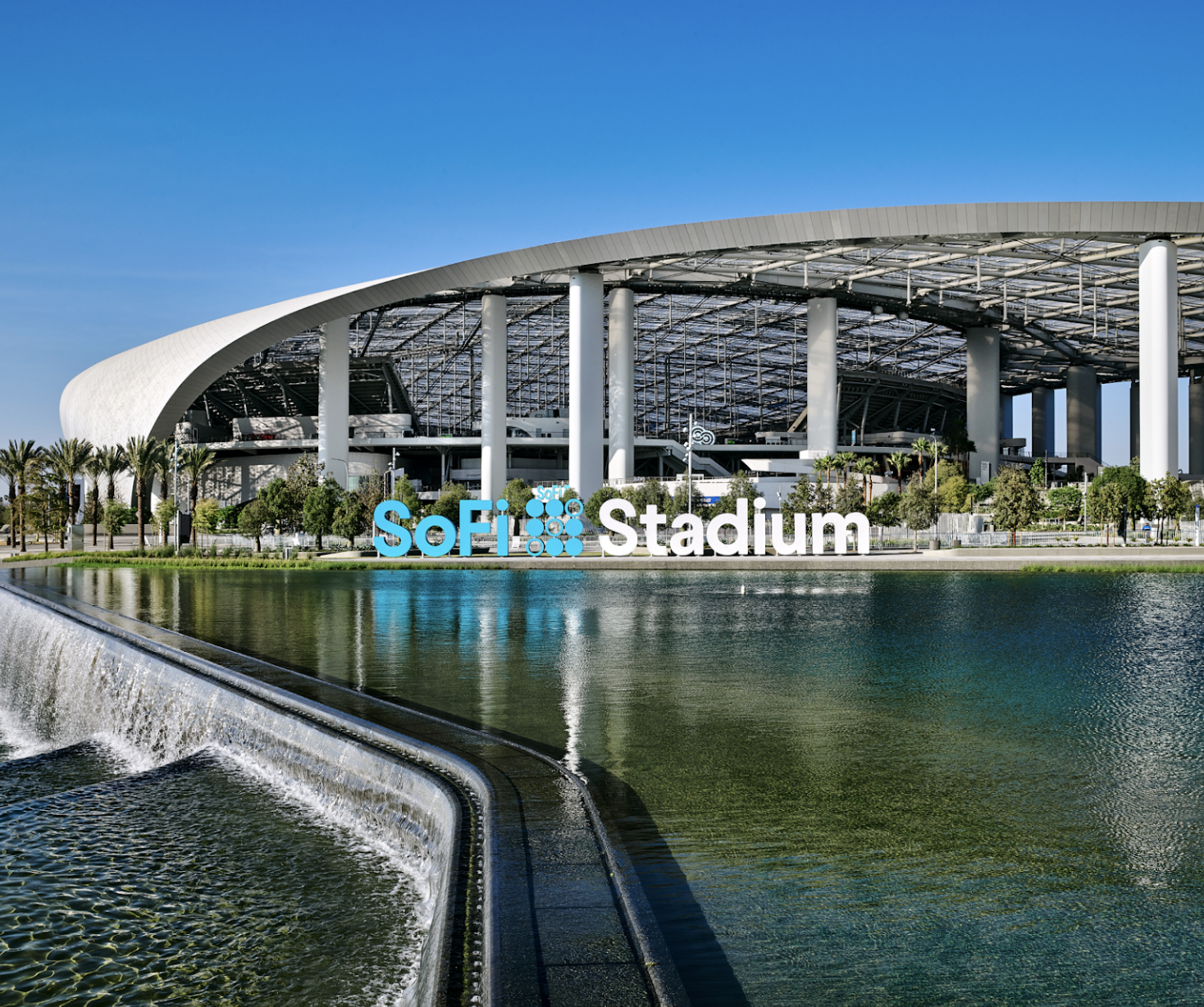
Photo Courtesy SoFi Stadium Press Kit
SoFi Stadium (Los Angeles Rams and Los Angeles Chargers):
One of the newest stadiums in California, SoFi Stadium is home to the Los Angeles Rams and Los Angeles Chargers. It hosted Super Bowl LVI, with the Rams winning their first championship since relocating from St. Louis.
SoFi was built with sustainability in mind. The plot of land was the home to the old Hollywood Park racetrack. Water-conserving fixtures and energy-efficient lighting were added during construction. Waste management got a total facelift as more comprehensive recycling, composting, food waste bio-digestion, donations, and reuse programs were rolled out.
The carbon footprints of SoFi and its corresponding venues — YouTube Theater and American Airlines Plaza — are tracked. The lighting fixtures were dimmed to comply with FAA regulations since the stadium is only a few miles from LAX airport. It decreased light pollution significantly.
Inside is an open-air concourse and pathways for walking that eliminate the need for escalators, saving more electricity. The open-air concept acts as a type of ventilation, letting the Pacific breeze cool the stadium at night. Panels in the roof control airflow. It also allows in natural light thanks to a specific chemical that reduces solar glare.
SoFi’s exterior landscaping allowed for more trees to be planted, reducing CO2 emissions for surrounding areas. The rainwater capture system is massive, collecting it from all parts of the stadium. The Lake Park in front of the stadium is 100% recycled water, saving 11.4 million gallons. The lake collects stormwater, which is used to irrigate plants in Hollywood Park.
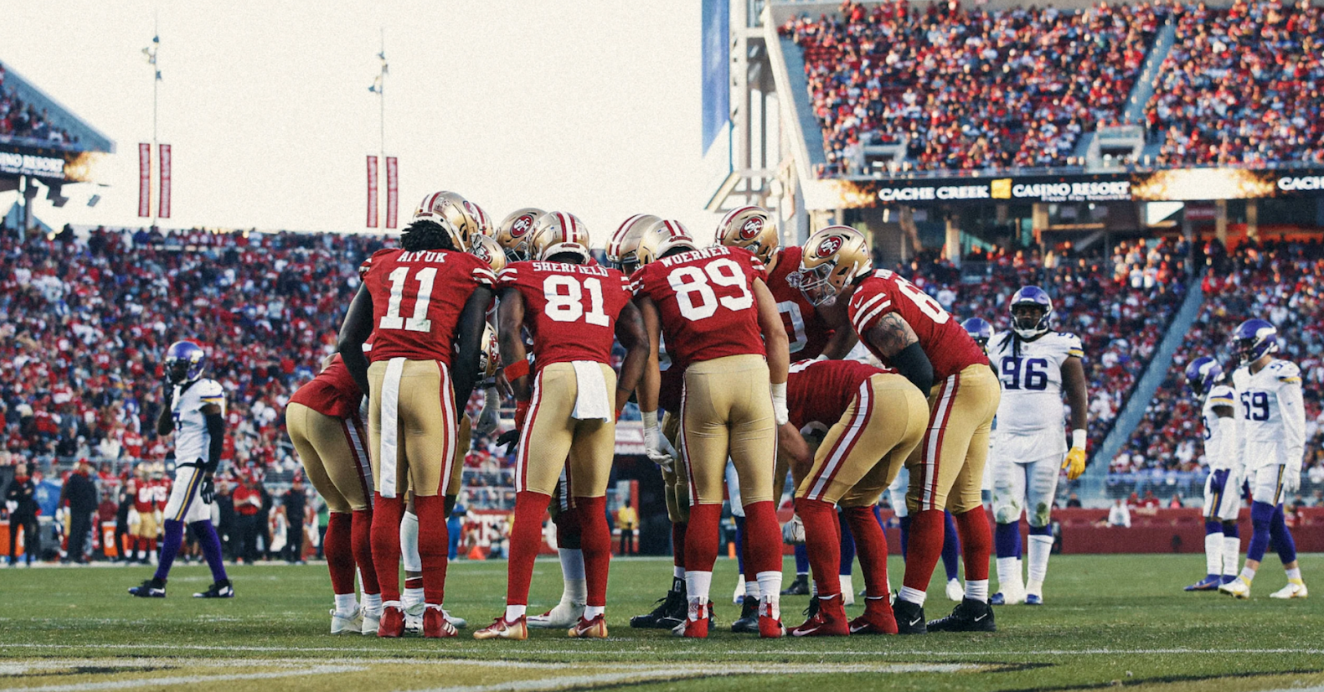
Photo Courtesy San Francisco 49ers
Levi’s Stadium (San Francisco 49ers): Opened in 2014 and home to the San Francisco 49ers, Levi’s Stadium was the first U.S. pro football stadium to earn LEED Gold status. The design, construction, and energy efficiency were top priorities during the building process.
It’s within walking distance of light rails, buses, trains, and other modes of mobility, and a public bike path is available to the stadium. Electric vehicle (EV) charging stations are in some parking lots. These options have reduced the commute to Santa Clara by 11%.
The stadium’s steel was 95% recycled, while the wood was 100% sourced from an old airfield.
At games, tailgaters were given recycling kits, which helped Levi’s recycle up to 90% of the stadium’s durable goods, and more than 60% of consumer waste was recycled.
There’s a green roof with 16 species of drought-tolerant plants to regulate temperatures in suites below it. Part of the roof was repurposed into a farm, which has grown 10 tons of vegetables and fruits, with more than 40 crops grown on the Faithful Farm.
Levi’s also has 1,100 solar panels, generating 470 MWh of renewable energy. Water runoff is collected and recycled for irrigation and landscaping, and 85% of Levi’s water is recycled. Low-flow plumbing saved water even further, and a water softener allowed 100 million gallons of drinking water to be diverted from waste streams.
Energy efficiency is top-notch, with LEDs saving 150,000 watts of electricity — 20% more energy than in previous years. All concession food is sourced within a 150-mile radius, 85% of which comes from within California. The 49ers have earned Sports Business Journal’s Sports Facility of the Year and Stadium Business Awards’ Venue of the Year. Even the White House Office of Science and Technology Policy hailed it.
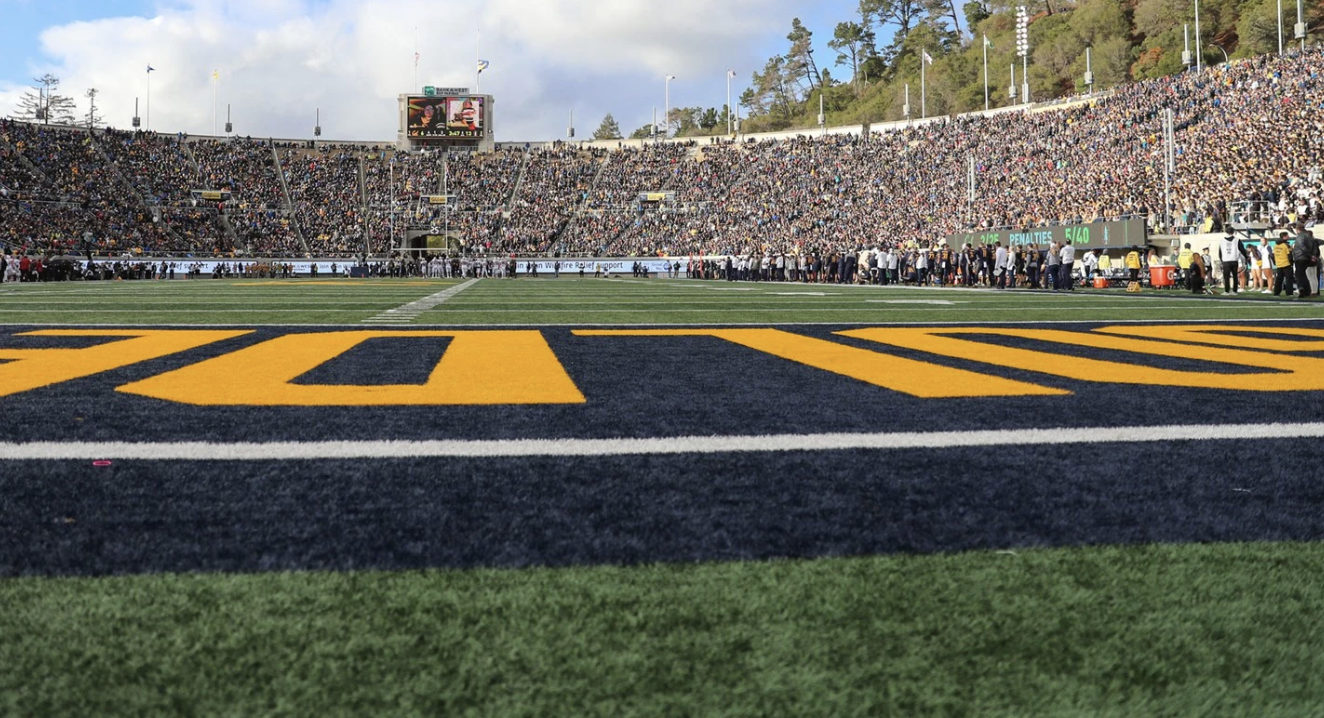
Photo Courtesy Cal Bear News
Memorial Stadium (University of California, Berkeley Golden Bears): Located in Berkeley, CA, the University of California, Berkeley’s (Cal) Memorial Stadium has been registered as a historic landmark, as well as being LEED Gold-certified. It’s come a long way since it opened in 1923. However, being located on the Hayward Fault line made it susceptible to earthquake damage. It was renovated and reopened in 2012, making it more modern and resilient.
During renovations, 75% of demolition and debris was diverted from landfills. Baseline water used dropped by 35%. Green power increased by 35%; overall performance ratings went by 18%. Cal’s Memorial ranks second in the green college football stadium rankings and also third in energy efficiency. A parking lot was added to reduce vehicle traffic by the stadium while promoting public transportation. There are shuttles people can take on game days.
The recycling program has expanded to composting, and concessions use reusable or compostable kitchenware. The Golden Bears are also active participants in the PAC-12 Zero Waste Challenge. They won the Most Improved award for diverting more than 20% of waste from its Zero Waste football game. However, they have some big shoes to fill, as the basketball team won the Challenge four years in a row.
Colorado
Watching pro sports with the Rocky Mountains in the background seems like a scene out of a video game. But take a little trip to Denver; it’s more than a reality. Colorado is known for its outdoor culture, with lots of skiing and snowboarding, but conventional sports like football, baseball, basketball, and soccer have thrived, too.
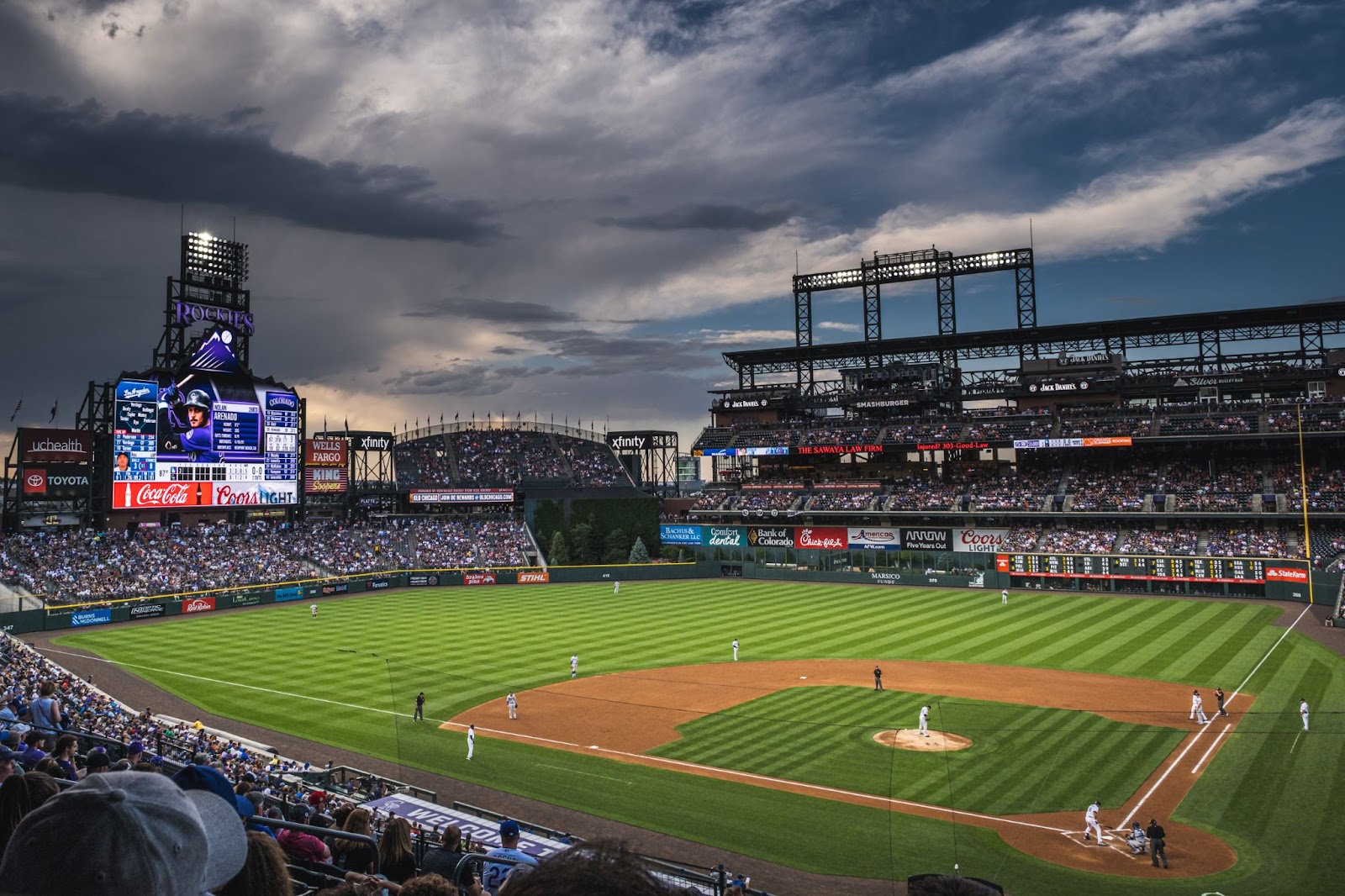
Photo Courtesy Owen Lystrup
Coors Field (Colorado Rockies): Named after a Colorado icon, Coors Field opened in 1995 and is one of the most innovative stadiums in the West. It combines modern convenience with a retro brickyard design. The outfield stands are lowered so you can see the mountains. There’s even a marker from when you’re at the mile-above-sea-level point.
It’s the first stadium to house a brewery and the first National League ball club to offer gluten-free food. Coors has an on-site sustainable GaRden, named after the Rockies. The team worked with food provider ARAMARK and Colorado State University to promote sustainable activities like food purchasing, green cleaning, and water conservation.
The GaRden was a project they helped fund, built with sustainable wood and recycled materials. Worm castings were brought in to enrich soil growth, and Miracle-Gro donated its Nature’s Care products for organic gardening.
Three different plantings grow in the garden, and they rotate every season. Plenty of vegetables and herbs have been harvested in the gardens. Team chefs use some at the stadium’s restaurant. They’ve even grown Purple Viking potatoes to make purple potato chips for concessions.
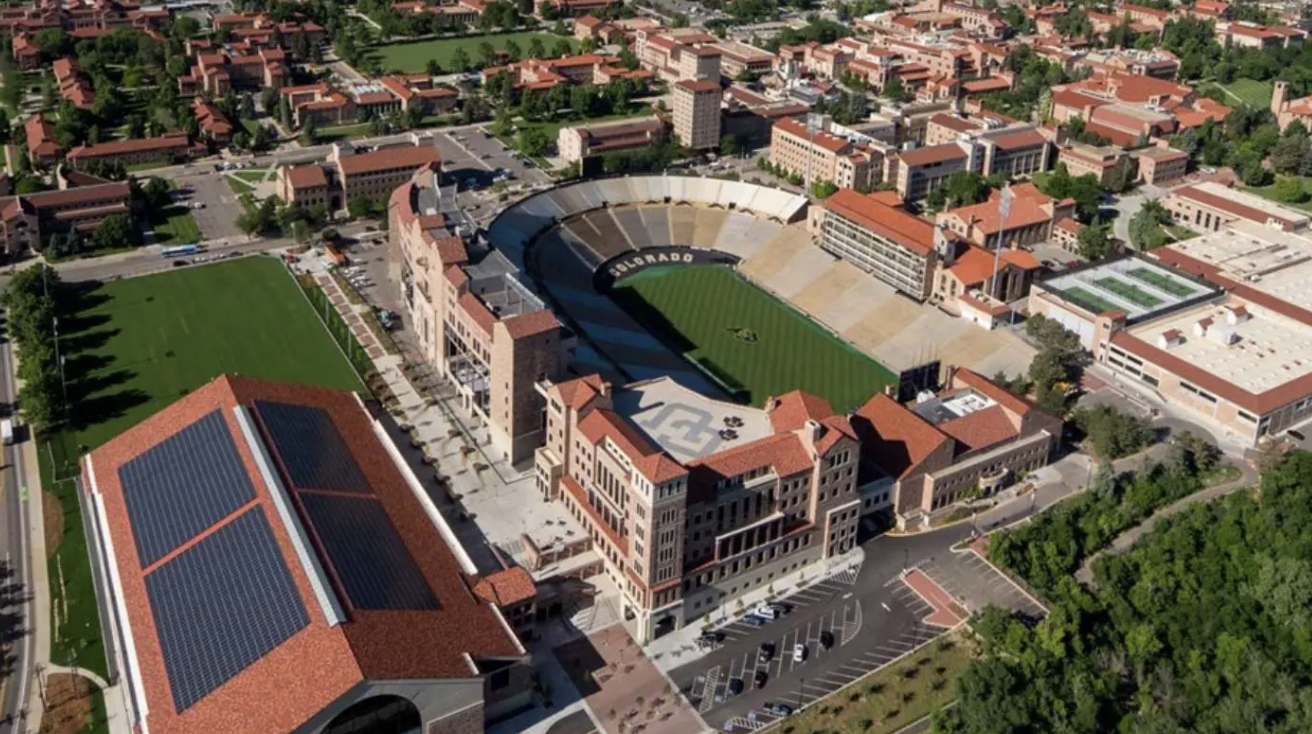
Photo Courtesy Ralphie’s Green Stampede
Folsom Field (University of Colorado Buffaloes): Ralphie’s Green Stampede is the University of Colorado Boulder’s (CU Boulder) sustainability initiative, named after the college’s live bison mascot. At the time, Folsom Field was the first football stadium in the U.S. with a zero-waste campaign.
Recycling has improved greatly. Composting bins replaced translate bins lined with plant-based bags. Plastic cookware and packaging were replaced with refillable, recyclable, or compostable ones. The stadium went from 30% diversion to 78.5% in Year 4 of Ralphie’s Green Stampede.
At tailgates, Zero Waste Goalies monitor waste disposal from patrons and help them make better choices. There were prizes on the line. During the 2011 Game Day Challenge, Folsom finished first among Division 1-FBS schools in two categories: highest per capita composting rate and highest diversion rate. In 2018 and 2019, the Buffaloes topped the PAC-12 Zero Waste Challenge rankings for diversion.
Local carbon-reduction projects sequestered emissions caused by football operations. Now, all CU Boulder sports take part in Ralphie’s Green Stampede. The athletics department won its first LEED award when the new basketball and volleyball practice complex opened. There are now three more buildings certified Platinum by LEED, and CU Boulder is a founding member of the Green Sports Alliance.
Folsom’s turf is fertilized by compost tea, an organic liquid fertilizer that cut pesticide use by 93% by 2012. The university even joined the UN Sports for Climate Action Framework and the UN Race to Zero Campaign.
Connecticut
Connecticut doesn’t have major professional sports teams, but it doesn’t need them. Not when the colleges scattered across the Constitution State are killing it on the national stage. The University of Connecticut (UConn) just won its fifth NCAA Basketball title, and Quinnipiac University has competed for the NCAA Hockey championship on numerous occasions.
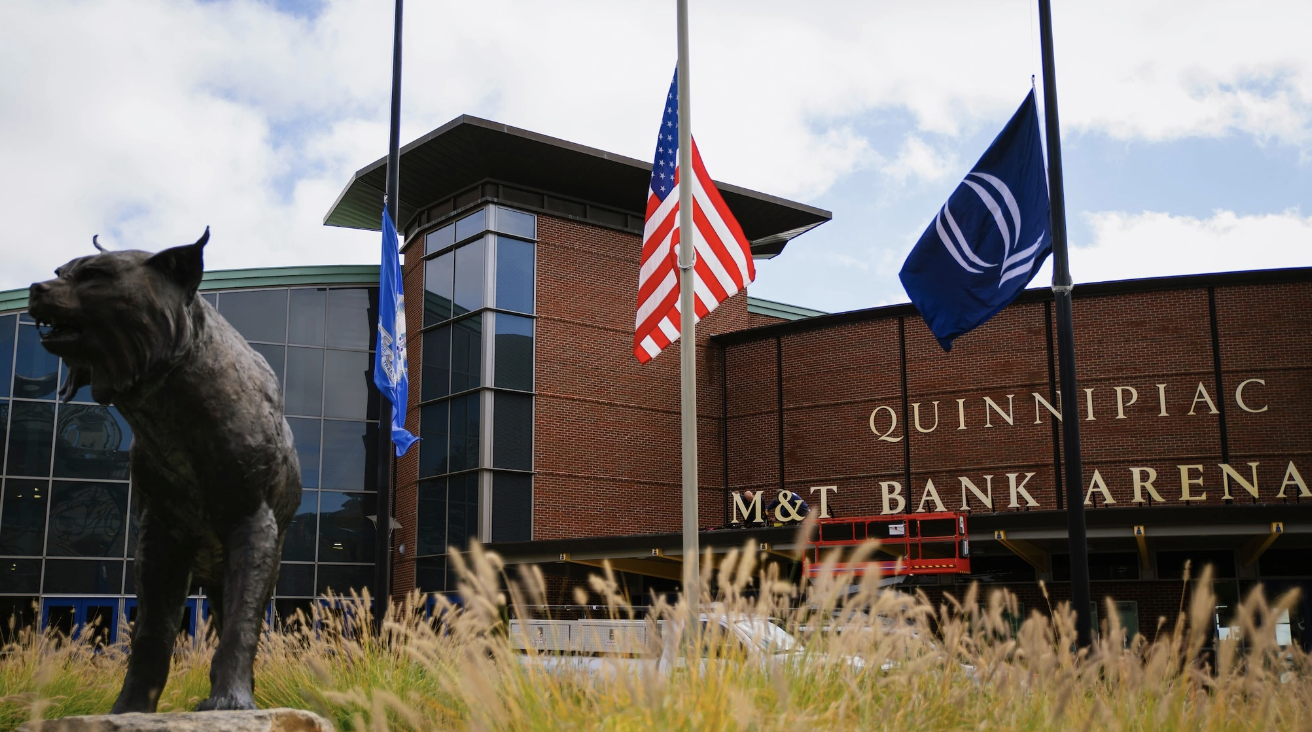
Photo Courtesy Quinnipiac University Athletics
M&T Bank Arena (Quinnipiac University Bobcats): The Bobcats use a dual-sports venue, one of four twin sports structures in New England. When constructing this arena, 615,000 tons of rock and dirt remained onsite rather than be disposed of. The water system changed to an Intellihot system consisting of two consolidated units to save energy and space. The new system saves up to 40% more energy when heating water. That leads to lower carbon emissions.
In 2022, LED lighting replaced the older fixtures, saving up to $65,000 on energy costs. Quinnipiac paid for this switch with utility rebates. The athletic department also made sustainable improvements to the soccer and lacrosse fields in 2022. A Versatile Pad was added underneath the turf for better drainage. More than 4,000 cubic feet of stormwater pass through before it’s processed into groundwater. The pad also limits field freezing.
Quinnipiac has added environmental bachelor’s degree programs. These sustainability measures earned the college a Bronze STARS rating. Even better, Quinnipiac achieved Gold LEED status for a new student recreation and wellness center. The facility was built with sustainable materials and features a green roof and rain gardens — it opened in January 2023.
Washington, D.C.
The nation’s capital has been one of the underdog stories of the modern sports age. With the Capitals finally hoisting the Stanley Cup in 2018 and the Nationals winning their first World Series in 2019, there’s a lot to like about the District’s sports scene. They are also becoming as eco-friendly as possible.
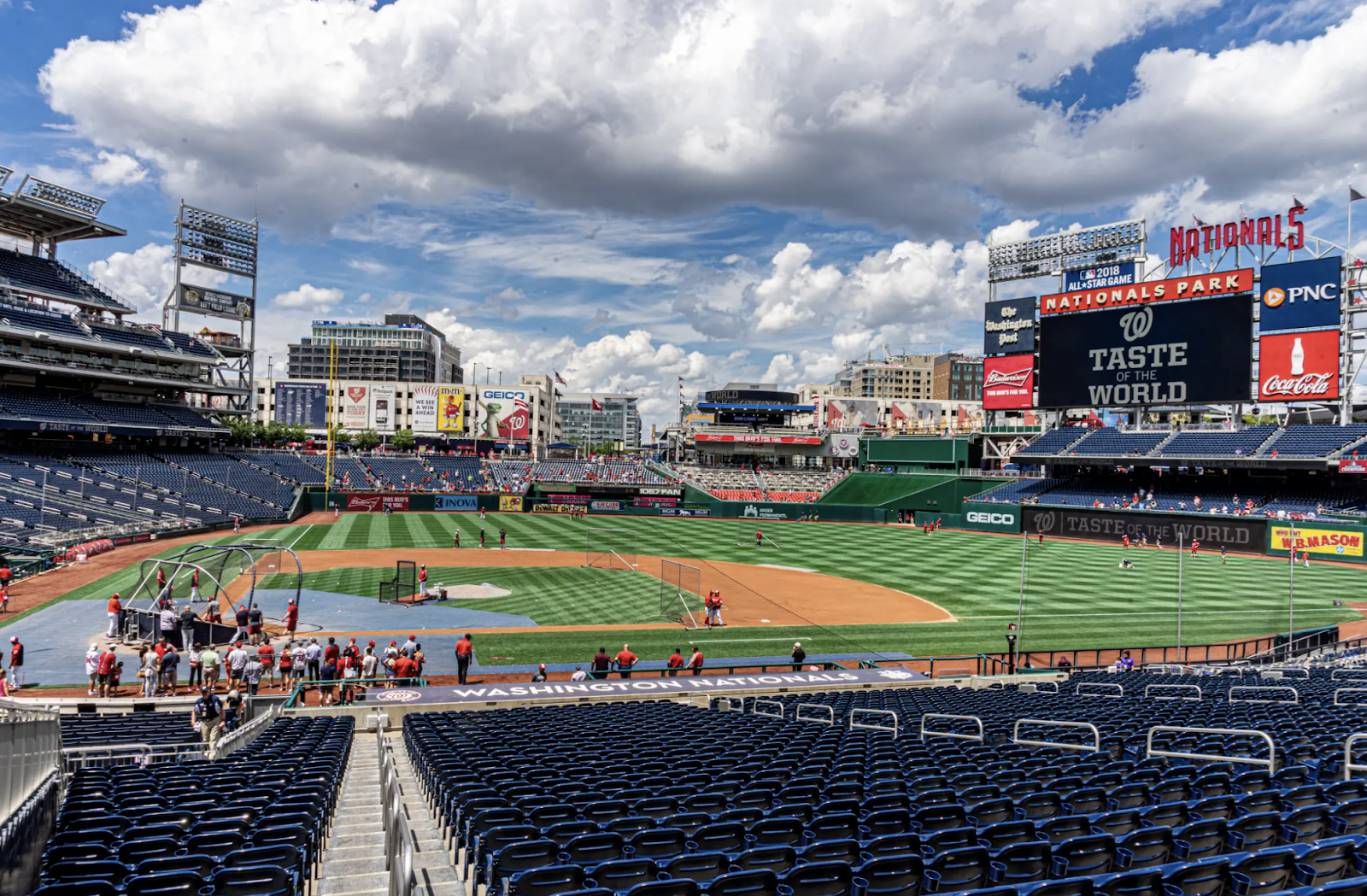
Photo Courtesy Sung Shin
Nationals Park (Washington Nationals):
Nats Park has revitalized the Navy Yard and Capitol Riverfront since it opened in 2008. It created 4,000 temporary construction jobs and 400 permanent roles, boosting the local economy. The area is now a bustling, modern promenade full of bars and restaurants.
The ballpark earned Silver LEED status thanks to several sustainability measures. The Nationals participated in the Voluntary Cleanup Program, which improved the environmental conditions near the stadium. Crew recycled 6,500 tons of construction waste during the cleanup. The building’s materials were a mix of regionally sourced supplies. Recyclable materials were also used in 20% of the stadium construction, including 95% recycled steel.
With metro stations and bus routes located nearby, public transportation is the most effective way to get to the stadium. Parking spaces are intentionally limited. Nats Park’s water filtration system separates rainwater from wash water, treating both before they enter sanitary and stormwater systems, protecting the Anacostia River. Low-flow plumbing has saved around 3.6 million gallons of water, and air-colled chillers protected even more water.
The energy-conservation plan uses a lot of ways to reduce the heat island effect with external shading and high-performance glazing. LED Lighting was placed in all parts of the stadium, including the jumbotron. In 2019, the ball club installed 5,000 solar panels on stadium parking garages to generate 1,900 MWh of solar energy, satisfying 10% of the park’s demand.
This effort wasn’t even the Nationals’ first environmental roof project. There’s a green roof garden with drought-resistant plants that minimize heat absorption. It also produces crops that are donated to the community.
In terms of recycling, the playing field is made up of 670 tons of recycled topsoil. Some furniture is made from recycled milk jugs. The single-stream recycling program diverts 75% of waste from landfills. Single-use plastic has been phased out for compostable kitchenware.
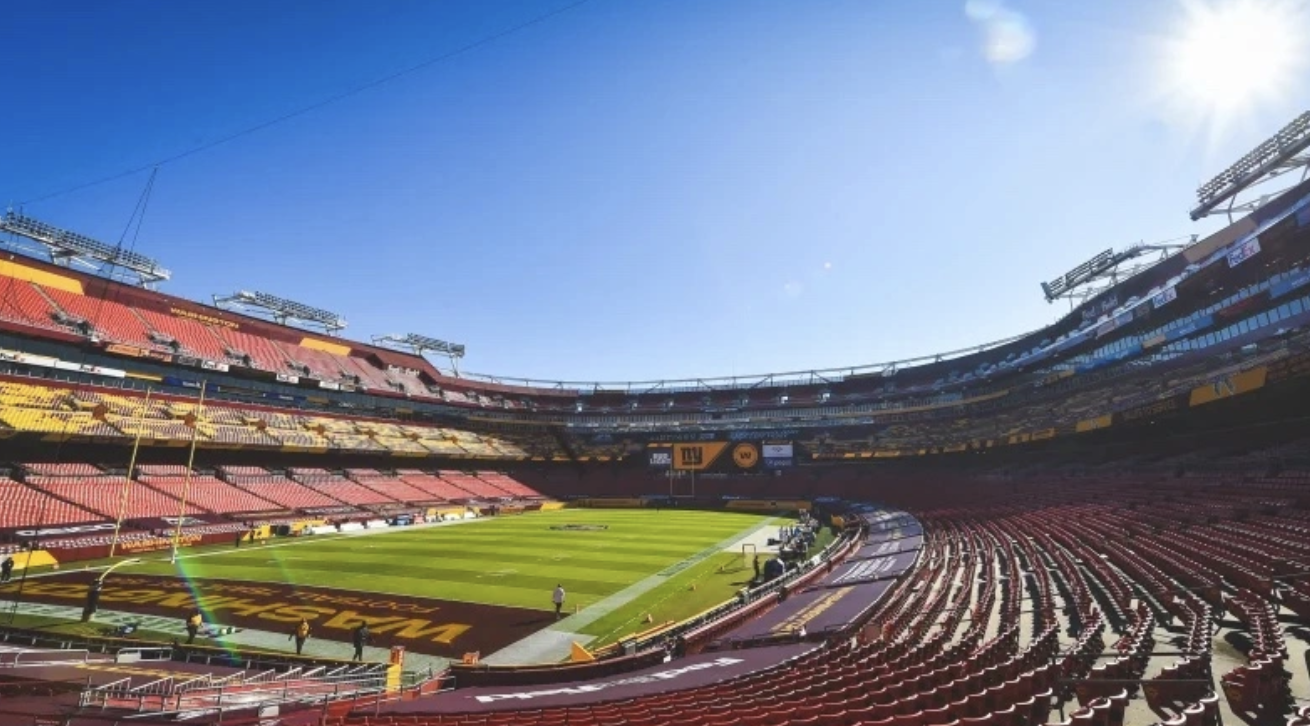
Photo Courtesy Washington Commanders
Fedex Field (Washington Commanders): Fedex Field has been one of the first NFL stadiums to start a clean energy program. It began in the 2000s and has expanded every decade since. In 2009 alone, the stadium saved 100 million kWh of electricity.
The team recycled 100 tons of waste annually. Each game yielded about three tons of plastic and aluminum stats, enough to power one TV set 24 hours a day for 55 years. Even paper is recycled well, with around 450 cubic feet recycled, enough to keep 13.5 tons of CO2 out of the atmosphere and 550 trees saved. The bathrooms and kitchens also use recycled paper or plant-based products.
In 2011, FedEx Field partnered with NRG Energy for the Burgundy and Gold Go Solar plan. Around 8,000 solar panels were installed around the venue, most covering a parking structure and others scattered around the stadium. It’s the largest solar power station in the surrounding area. The panels generate 2 MW of electricity, which can power 20% of gameday demands, saving the team a lot of money.
A monument to solar power is near FedEx Field’s entrance, called Solar Man. He’s a 30-foot-tall quarterback statue powered by the sun.
In addition to renewable energy, there are 10 EV charging stations in the parking lot. These initiatives led to the Commanders winning the 2012 Green Business of the Year award.
More recently, the team partnered with Recycle Track Systems to improve the recycling methods in the field. Team leadership hopes more waste is recycled correctly and will work to get fans involved. When the team changed its name from Redskins to Commanders, they worked with Refried Apparel to upcycle the old team apparel into new fashion.
Delaware
While there aren’t any major sports teams in Delaware, it has its fair share of minor league teams. The smaller venues are more family-oriented, offering a similar but less pricey experience to those at the big stadiums. Even minor league arenas are being operated sustainably.
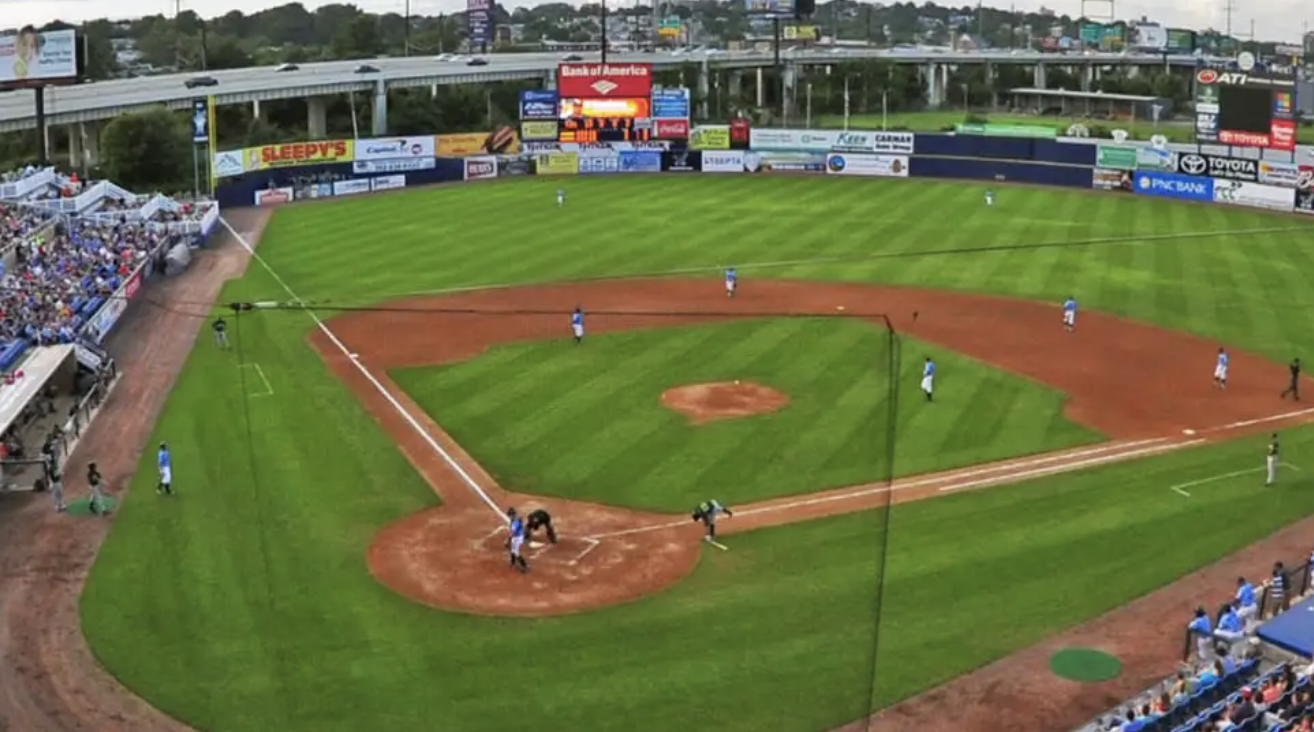
Photo Courtesy MiLB
Frawley Stadium (Wilmington Blue Rocks): Home to Washington Nationals’ affiliate, the Wilmington Blue Rocks, Frawley Stadium is known for its wacky mascots and being a green venue. The ball club has had Going Green Night since 2009, usually on Earth Day.
Ironically, the team is named after Delaware’s blue granite. The Blue Rocks have used less fungicides and pesticides, switching to organic fertilizer for the playing field. Since the early 2010s, the team has worked with Wilmington-based Holganix, a soil enrichment firm that supplies them with organic plant probiotics.
To save energy, Frawley Stadium redid its lighting installations with 250 Retrofit Kits, a highly efficient bulb. It decreased energy costs by 60%. In 2018, the Blue Rocks became the first High-A baseball team to install LED floodlights, saving even more energy. The parking area also uses LEDs.
These sustainable measures earned Frawley the honor of best ballpark in the High-A baseball leagues. Even cooler, the playing field is named after the Hall of Fame player Judy Johnson, the first Delaware-born player to be voted in.
The club is also very active in the Wilmington community. It carries out multiple projects like donating money to children’s programs every time a strikeout happens and donating 500 meals to the Food Bank of Delaware every time they win a game.
Florida
The Sunshine State is similar to California in that it’s a sports paradise. From the panhandle to the Everglades, you’d be hard-pressed not to find some kind of competition in Florida. Between its multiple college and professional sports teams and the warm weather, who wouldn’t want to spend an afternoon at the stadium?
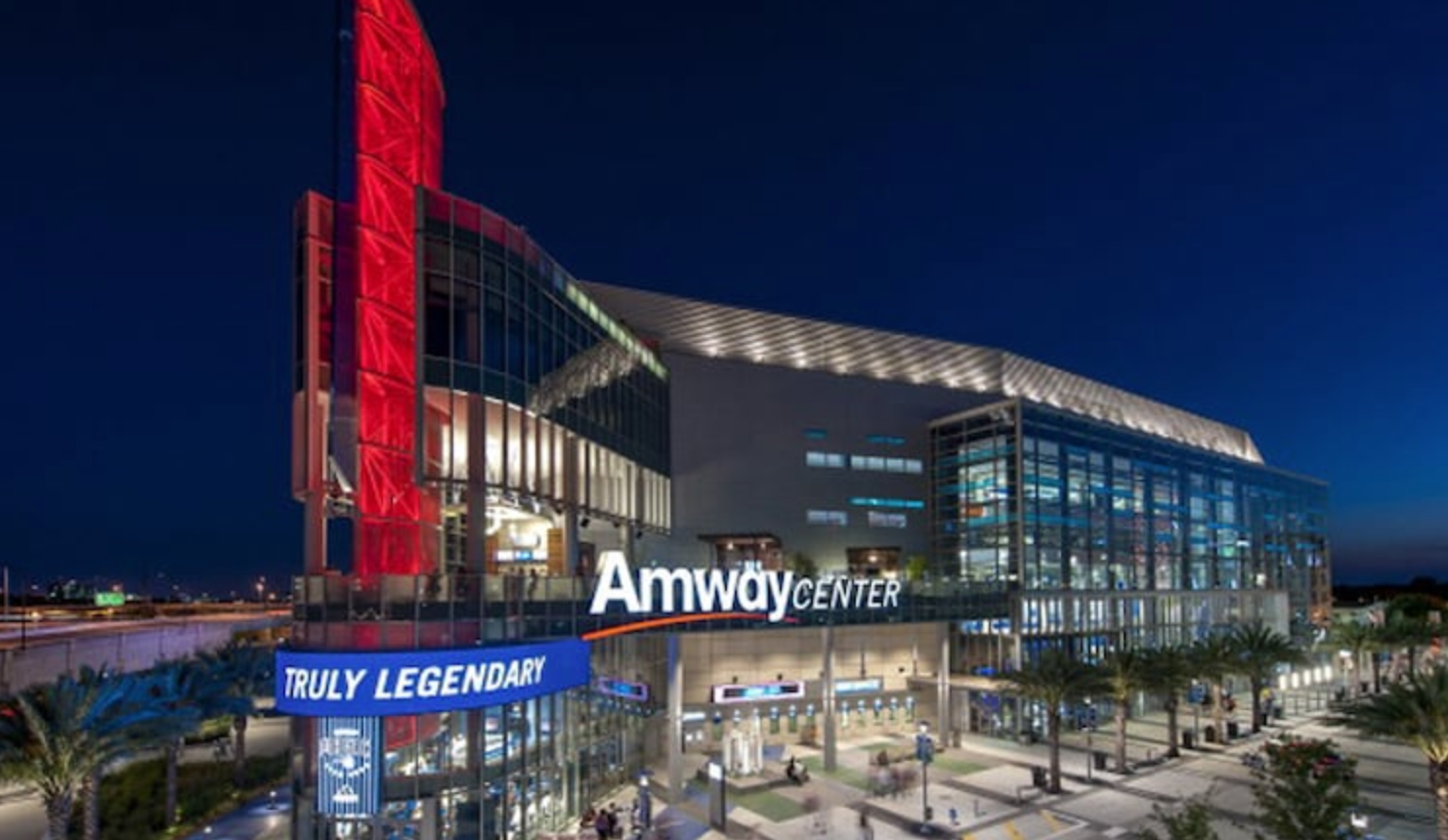
Photo Courtesy Orlando Magic News
Amway Center (Orlando Magic): Amway Center was the first and only professional basketball arena to earn Gold LEED status in 2010, just six months after it opened. The decision came quickly thanks to the team’s sustainability team planning the new facility to be as eco-friendly as possible. They only believed they would get a Silver rating, so earning Gold was a huge achievement.
Amway was built out of an existing building in downtown Orlando, so no land had to be leveled for a new site. Construction materials were 20% recycled — 30% from local sources — and 83% of waste was recycled.
The arena uses 40% less water than similar-sized buildings. The interior has dual-flush toilets, high-efficiency urinals, and faucets with decreased water use. That’s led to 1.3 gallons of water saved. A cistern houses rainwater and air-conditioning condensation to be used for irrigation, and storm runoff is always treated.
Less glass in the building’s exterior has enhanced energy efficiency. The Magic have reduced their energy bill by 20%. The roof has reflective paint to keep heat off it. There’s also a high-tech monitoring system plus eco-smart heating and cooling, saving around $960,000 on energy costs.
Working with the Department of Energy and the Orlando Greenworks Programs, the arena regularly audits energy use, making decisions to decrease consumption further. LED lighting has helped save even more energy.
The Magic’s recycling plan is also top-notch. The team worked with the nonprofit Rock and Wrap It Up! to deliver leftover concession food to homeless shelters. They put a Pepsi Dream Machine in the center to encourage more recycling, and the team offers public incentives for supporting sustainability.
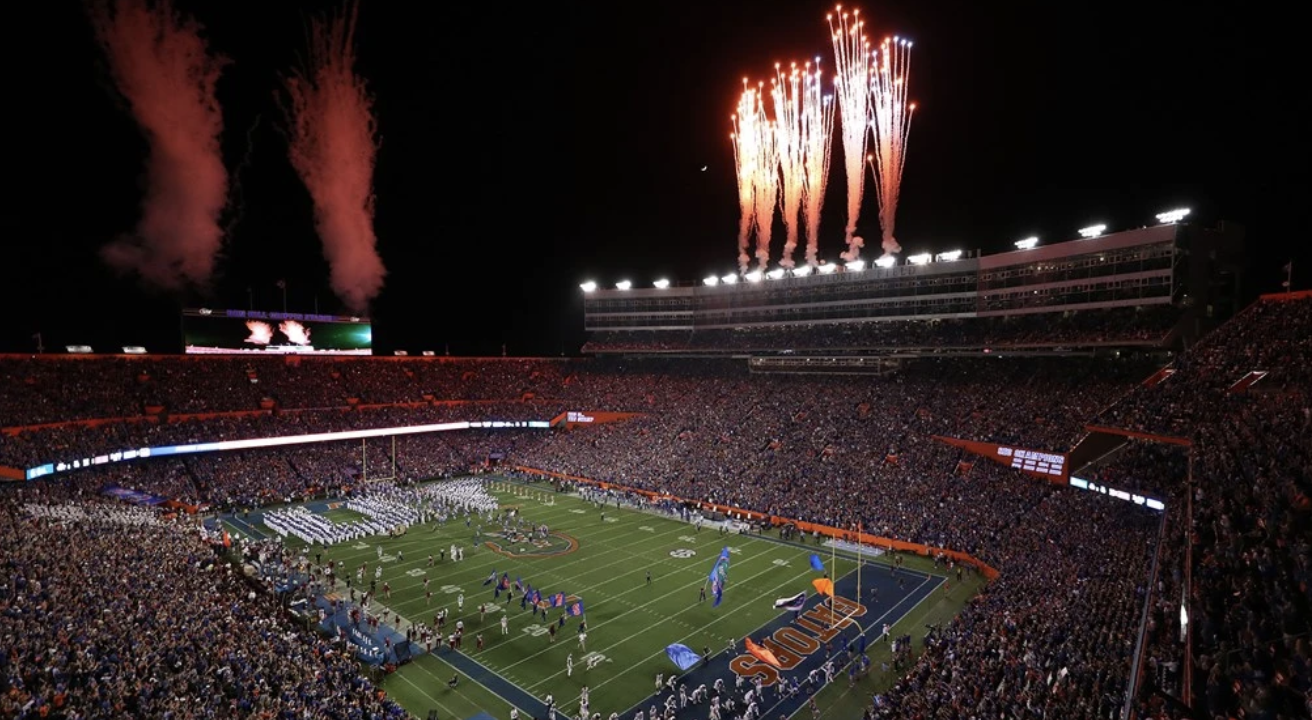
Photo Courtesy Florida Gator News
Steve Spurrier Field (University of Florida Gators): Nicknamed The Swamp, Steve Spurrier Field was the site of the NCAA’s first-ever carbon-neutral football game. The stadium is Platinum LEED status as the University of Florida (UF) continues to switch to sustainability. When the stadium was renovated in 2009, it won its Platinum status. It was the first American athletic facility to achieve the highest LEED certification.
Water usage dropped when waterless urinals, dual-flush toilets, water-saving showerheads, and faucet sensors trimmed back consumption by 40%. For irrigation, native grass and installing non-evaporating sprinklers saved more water. UF also uses 100% reclaimed water for field maintenance.
The exterior lighting is 100% LED, and HVAC efficiency has improved with better insulation and low e-glazing on glass windows. EnergyStar reflective coatings on the roof keep the heat off the top of the structure. Light-colored concrete helps control temperatures, too. Spurrier Field saves around 35% on energy costs.
During renovations, construction materials were sourced from local suppliers. The waste was diverted from landfills, and 53% of the wood used was Forest Stewardship Council-certified. Even furniture in the Heavener Football Complex was made from recycled material — none of the construction materials contained VOCs. Air filters were installed to remove 98% of air pollutants.
Since 2006, the Office of Sustainability has sponsored events like Tailgator Green Team Recycling to encourage fans to recycle. The Athletic Department ran a Zero Waste Campaign in 2013, diverting 80% of the waste from gameday. All leftover food is donated to Gainesville-area nonprofits.
Georgia
“I’ve got Georgia on mind …” and honestly, who wouldn’t after the excellent college football seasons the UGA Bulldogs have had? Of course, the Peach State is home to many sports organizations, including a decorated MLS franchise. The stadiums are quite sustainable and modern, with some getting a huge revamp in the past five years.
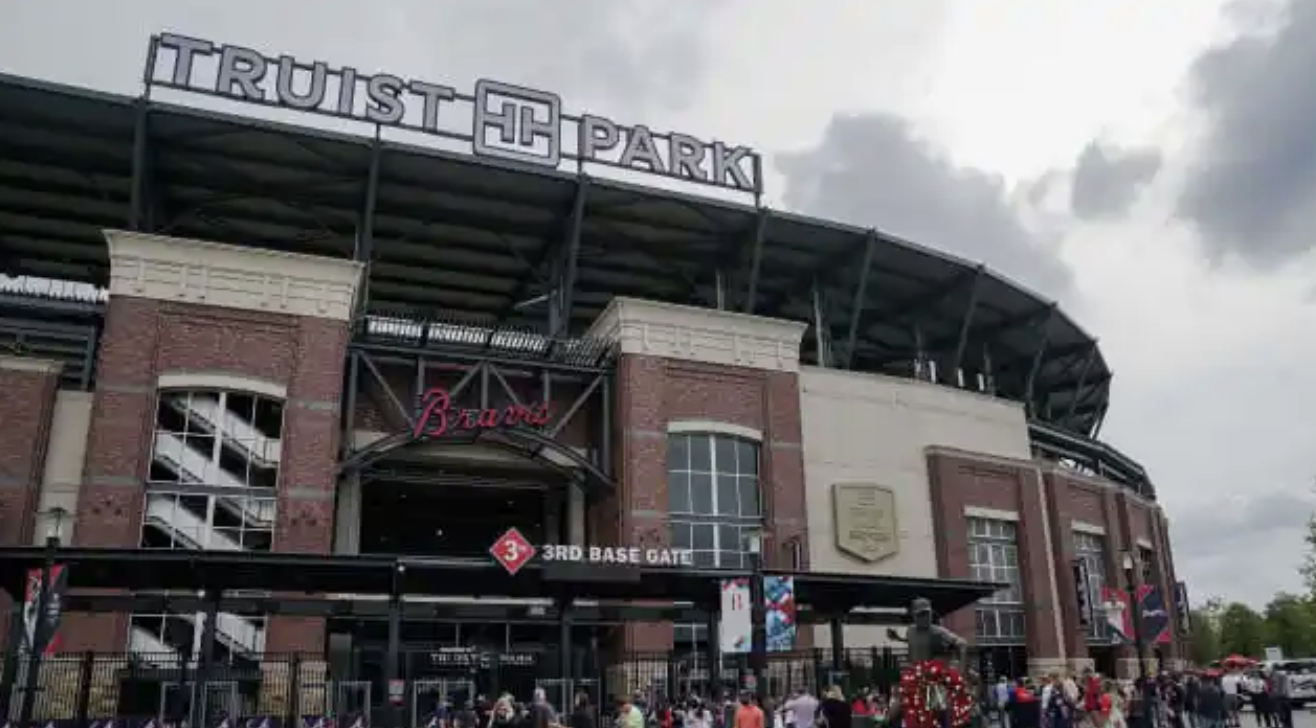
Photo Courtesy MLB
Truist Park (Atlanta Braves): Formerly SunTrust Park, Truist Park has created more than a new atmosphere for the Braves; they’ve created a whole neighborhood. The Battery in Cobb County is home to restaurants, bars, and residential buildings right next to the ballpark.
When Truist opened in 2017, its sustainable nature won its Silver LEED certification. LED lighting has provided 50% more efficiency. High-end HVAC systems were installed inside that don’t emit many ozone-harming chemicals. Another contributor to cooling the inside of Truist is the massive fans that are energy-efficient and do the same job as air conditioners.
For water conservation, the Braves installed a field water reclamation system, along with a 40,000-gallon water resiliency tank at The Battery. 50% of Truist’s water is recycled. In 2019, a partnership with WestRock Company helped to improve the team’s recycling program. More bins are scattered around the stadium. All recyclables get sent to a recovery facility, where they are processed into paper-based packaging and even youth sports jerseys.
When the Braves made the run to the 2021 World Series, stadium staff collected more than 200 recycled items. Moving into a suburban section of Atlanta has made commutes to Truist much greener. The parking lot has 60 EV charging stations, and The Battery is a highly walkable area.
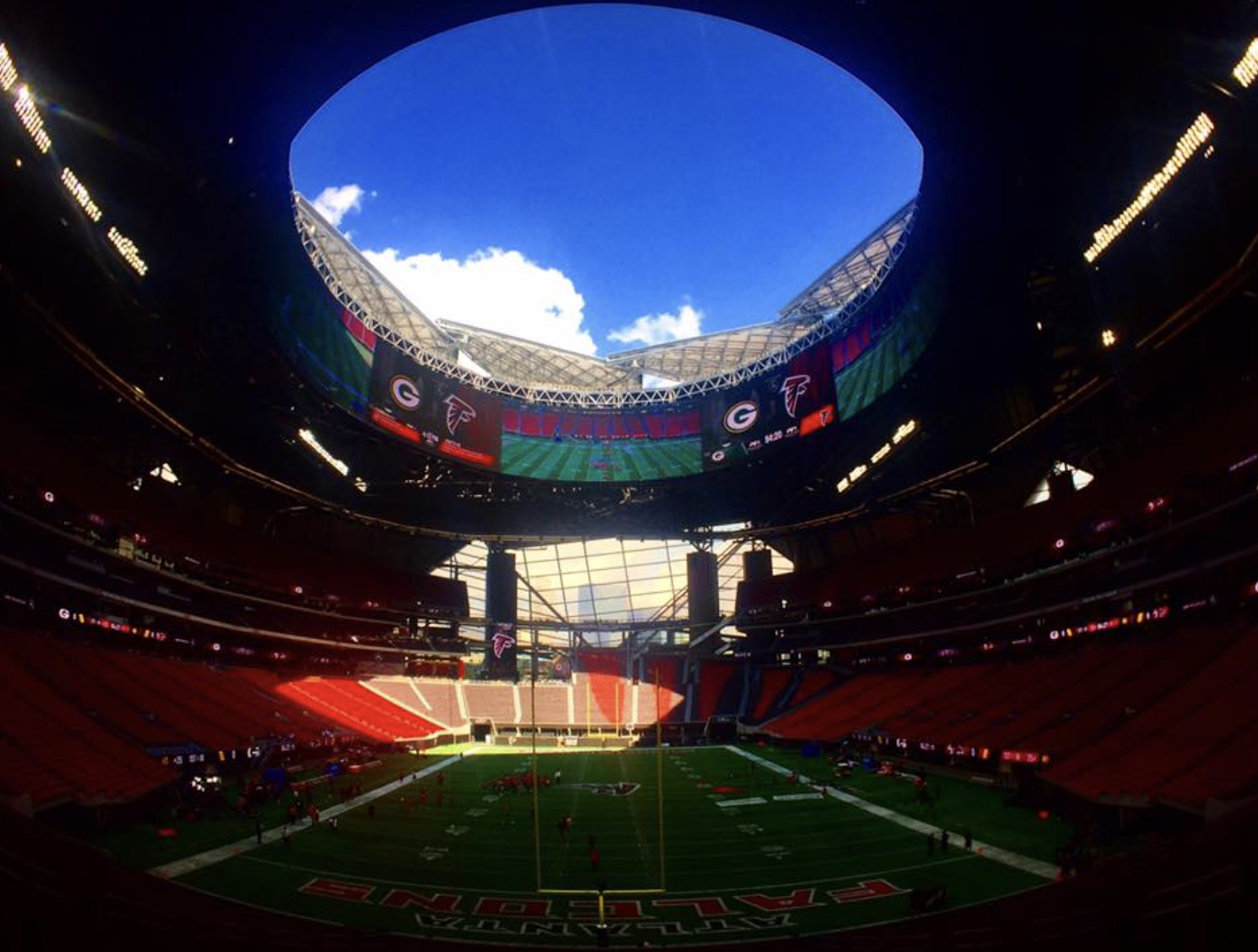
Photo Courtesy Mercedes-Benz Stadium
Mercedes-Benz Stadium (Atlanta Falcons and Atlanta United): Still a young stadium, only opening in 2017, Mercedes-Benz Stadium (MBS) is already a highly sustainable venue. It’s achieved Platinum LEED status, plus 88 LEED points — the most for a sports complex. It’s also near three public transportation spots, so fewer cars are needed. There are still 48 EV charging stations, 250 bike racks, and an off-road trail for walking and biking.
The water management system is one of the most advanced in all sports venues. The stormwater management has a 2.1 million-gallon water vault and a 680,000-gallon cistern. The irrigation system uses that supply, as does the cooling system. There’s also a low-flow plumbing situation, which contributed to the 47% reduction rate.
With a ton of windows letting in natural sunlight, less electricity is needed for certain game days. MBS also has 4,000 solar panels that create 1.5 million kWh of renewable energy. The panels were placed at eye level so fans could see how they operated. The stadium also has a garden onsite, which teaches elementary students about sustainable farming.
MBS is a zero-waste facility, partnering with the Resource Recovery Room to sort all bottles and cans. Food waste and organics were sent to Gainesville Waste and Recycling. As of June 2022, 90% of waste from the stadium is diverted from landfills. The Falcons and Atlanta United ownership won a Trailblazer Award from the Green Sports Alliance for its work in sustainability and eco-friendly practices.
Iowa
Iowa is one of the agricultural powerhouses in the Midwest. The state doesn’t have a large professional sports presence, but college athletics are very popular. Two big schools, the University of Iowa and Iowa State University, dominate the sports scene. The schools are actively updating athletic facilities to be more sustainable.
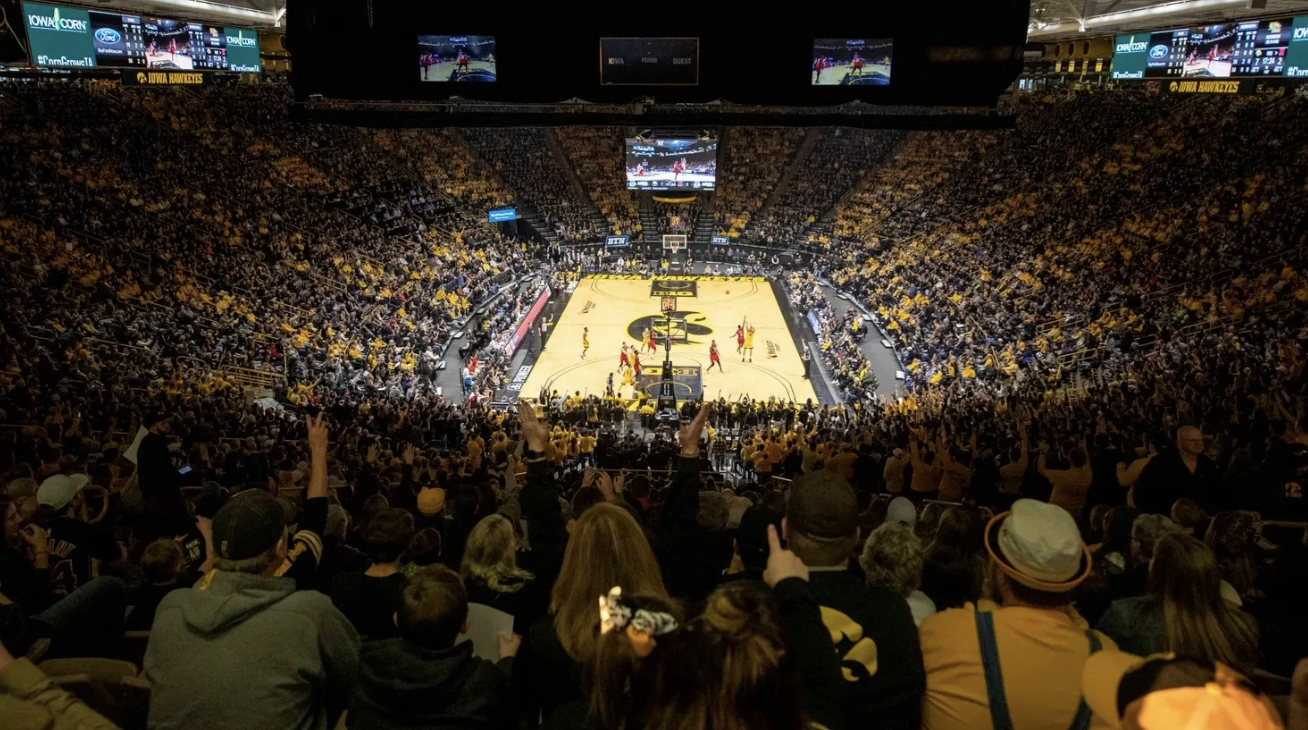
Photo Courtesy Hawkeye Sports
Carver-Hawkeye Arena (University of Iowa Hawkeyes): A Gold LEED-certified basketball venue, Carver-Hawkeye Arena is one of the biggest indoor collegiate stadiums in the country. After nearly 30 years in operation, Carver-Hawkeye received a sustainability upgrade. New, efficient landscaping lowered water usage by over 40%, and energy costs dropped, with around 51% more money saved than in previous years.
One nifty innovation has been a renewable energy project: biomass burning from oats. It powers the arena, acting as the main power plant.
The renovations to the basketball stadium used eco-friendly carpeting, paint, and other materials. The vinyl roofing had to be replaced, but the old version was recycled into new materials. Roof insulation was reused as well.
The lighting systems use LED bulbs, resulting in 55% less electricity use. The university has enjoyed this sustainable remodeling of Carver-Hawkeye, saying the team and venue can be a model for students and fans looking to implement sustainable practices in their lives. The facility has earned praise from the Energy Justice Network, LEED, and Sustainable Roofing Performance.
Idaho
The Potato State is a tough environment for sports. Its mountainous terrain makes it hard to establish big metropolitan centers, and most of the state is made up of farmers. That being said, the people do have an appreciation for sustainability, living in a state with plenty of natural beauty. The college sports scene is implementing eco-friendly practices at their venues.
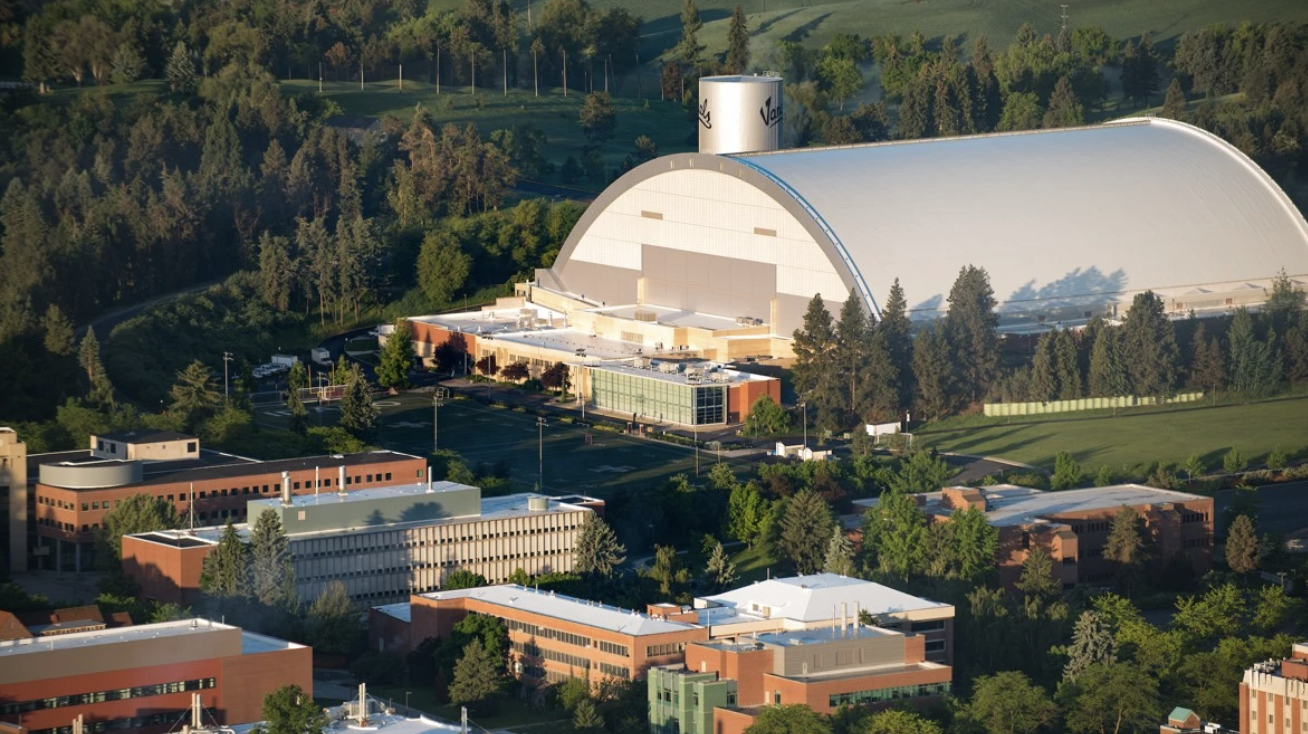
Photo Courtesy ASUI-Kibbie Activity Center
Kibbie Dome (University of Idaho Vandals): Called the “weirdest college football stadium in America,” Kibbie Dome at the University of Idaho looks like a tin can on its side. It’s also the smallest Division 1 FBS football stadium in the nation. However, the dome is needed during the harsh Idaho winters. It’s also a wooden roofed stadium, being constructed in 1975.
Since Idaho is eighth in American lumber production, using wood is not as unsustainable as it sounds. The college even used wood to build a wooden basketball stadium, the nearby Idaho Central Credit Union Arena. Thanks to a Wood Innovation Grant from the U.S. Forest Service, the Vandals were allowed to use mass timber to build athletics facilities. Life Cycle Assessment determined wood is better than fossil fuel-based materials and much more climate-friendly.
The turf at Kibbie Dome can be rolled up and stored away for events like concerts. The recycling program launched the Sustainability Center in 2009, and by 2010, they had recycled 1,500 pounds of materials. In 2013, permanent recycling fixtures were installed at Kibbie. Portable bins were deployed in the parking lot. The amount of plastic and aluminum receptacles dropped by 82.2%.
The domed stadium installed new insulation with translucent panels for natural light and better heating. It saved them $100,000 on energy costs.
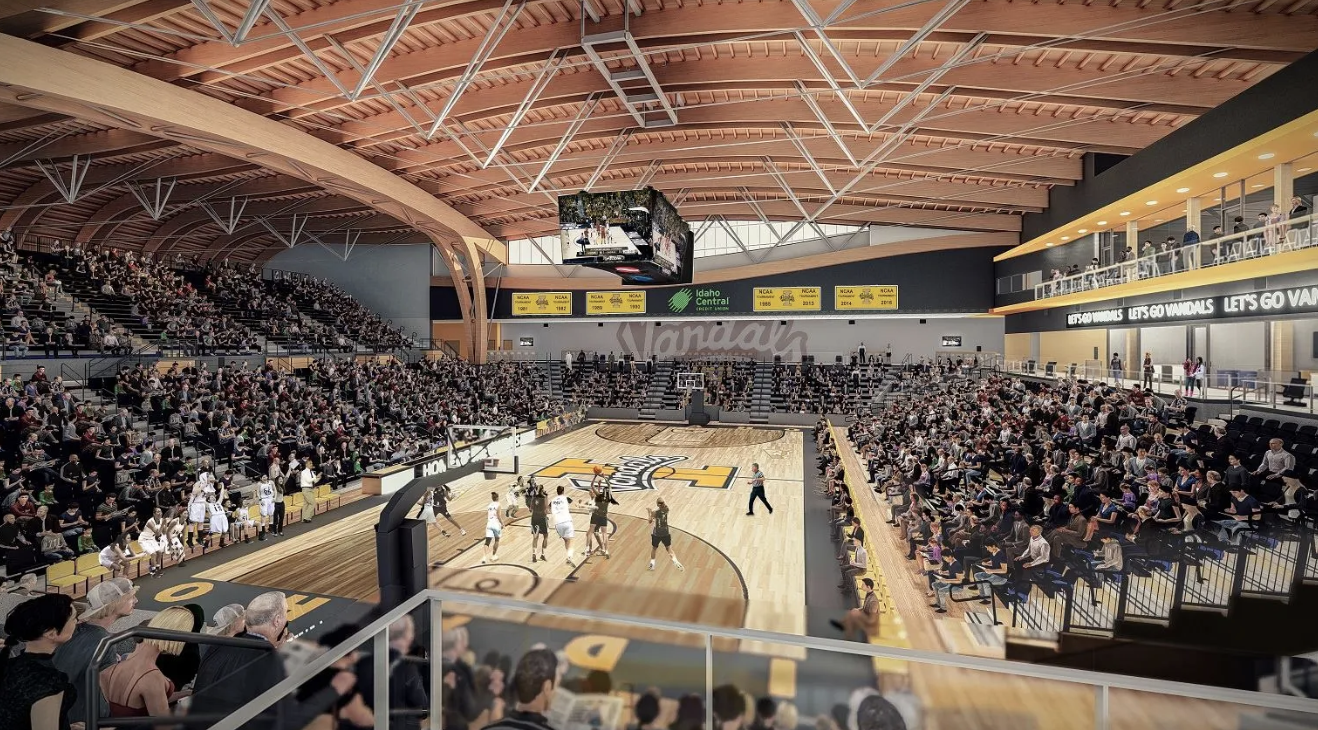
Photo Courtesy University of Idaho
Idaho Central Credit Union Arena (University of Idaho Vandals): The Idaho Central Credit Union (ICCU) Arena is built entirely of Idaho-sourced wood. Opened in 2021, ICCU Arena is the first signature wood facility of its size in Idaho and one of a few to use mass timber.
Mass timber offers many construction benefits — it is stronger than steel or concrete and can store carbon. ICCU’s construction sequestered 1,100 tons of CO2. Thanks to a grant awarded to U of I by the Dept. of Agriculture, the school has used mass timber for sports complexes.
The wood comes from local suppliers, including U of I’s Experimental Forest. Sustainable Forestry Initiative certifies the wood as a climate impact reducer and protects biological habitats. Some local businesses even donated materials for the construction of the arena.
The old entrance was incorporated into the new one inside the venue. There are educational opportunities for fans and students inside, especially those looking for a career in agriculture, engineering, and natural science.
ICCU Arena has won multiple awards for its sustainable design and functionality. It’s certified Silver by LEED. Using mass timber sets an example for other arenas to copy going forward.
Illinois
Illinois is blessed with great professional sports teams in Chicago. The 1980s Bears and 1990s Bulls teams have cemented the city as one of America’s biggest sports towns. Heck, even the White Sox, Cubs, and Blackhawks have all won championships in the past three decades. The teams are also embracing green business operations in their respective venues.
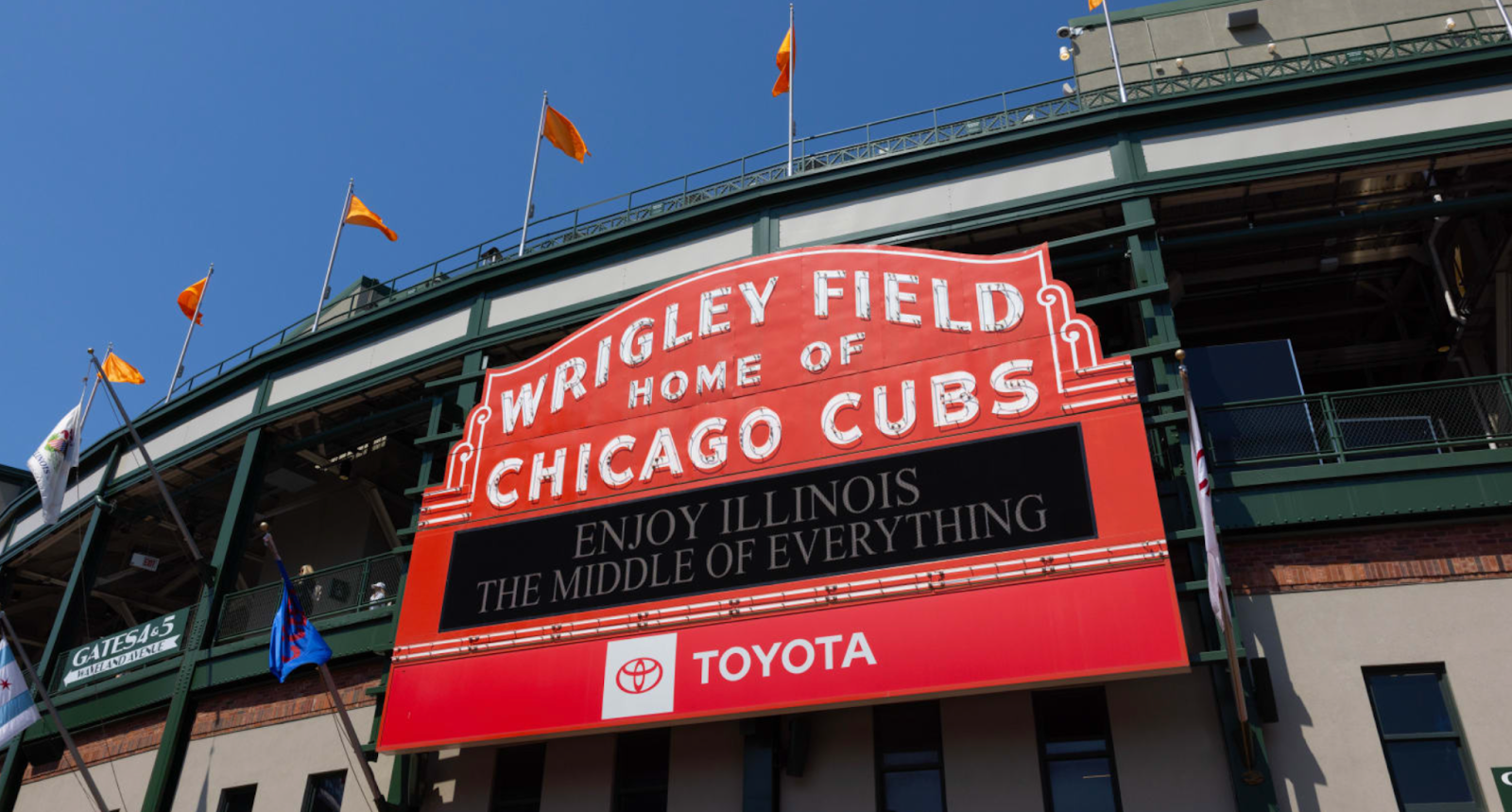
Photo Courtesy MLB
Wrigley Field (Chicago Cubs): When the Ricketts family became the majority owners of the Chicago Cubs in 2009, they got to work making the team and iconic stadium more eco-friendly. The first initiative was the Real Fans Recycle program to encourage fan recycling. Solo Cups introduced more eco-friendly cups, which were recycled by Allied Waste. Some of the cups were made into shirts.
Free Green Can was another program that emphasized recycling. More recycling stations were put around Wrigley, saving nearly 8,400 hours of energy running a TV a year. Recycled napkins and compostable plates have lowered the Cubs’ waste levels, saving up 1,200 yards of landfill space and 2,000 trees. Plastics used for food packaging have been phased out as well. Cooking oil is recycled by Levy Restaurants, the ball club’s food provider.
Being a 106-year-old stadium, Wrigley has undergone significant renovations to make it more sustainable. The 1060 Plan reused parts of the old stadium, around 60% of the outfield wall bricks. The iconic ivy way was removed by preserved and replanted. Debris and rubble were recycled in local facilities.
HVAC systems, lighting, appliances, and renewable energy generators improved energy efficiency. Installing low-flow toilets in bathrooms has saved even more water. Green roofs now lie on top of the broadcast booth, the Hotel Zachery nearby, and Gallagher Way.
Wrigley Field was awarded Silver LEED status in 2019 after improvements to the stadium’s green practices. The ballpark is easily accessible by public transportation, and the Cubs offer free bike valleys for fans.
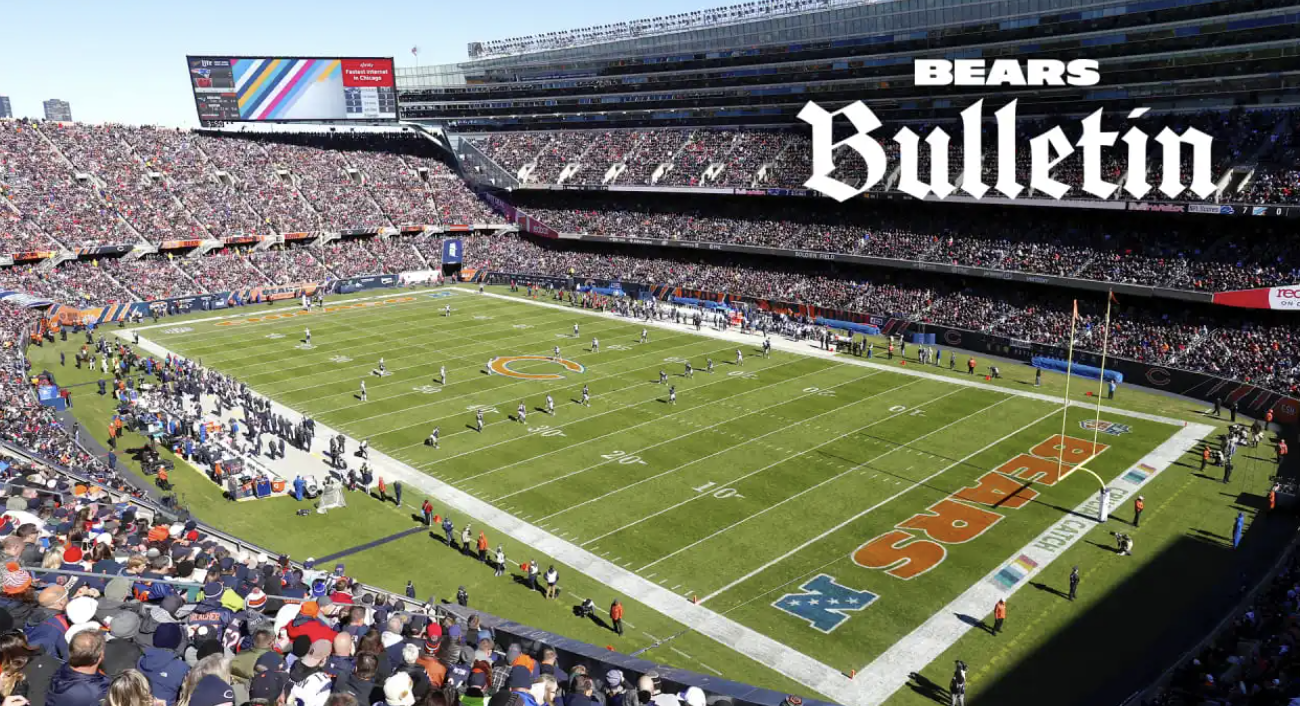
Photo Courtesy Chicago Bear News
Soldier Field (Chicago Bears): Soldier Field is the oldest NFL stadium, opening in 1924. It’s merged into the downtown Chicago area as well. In 2002, an extensive renovation took place, updating the stadium’s sustainable functions. Since then, Soldier Field has earned Silver LEED certification for its environmental design. It was the first NFL stadium to receive such an honor.
The steps to making the Bears’ stadium more green started with switching to LED lighting and installing 1,000 solar panels on the roof for renewable power. Low-flush toilets cut down on water use. Soil and sod were repurposed during the renovation, with healthier turf and heating systems installed under the field.
The district Soldier Field is nestled in underwent a large recycling program, recycling items such as office supplies, eyeglasses, light bulbs, delivery pallets, and lost cell phones on top of traditional materials.
Parking spaces near the stadium were replaced with parklands near the Lake Michigan waterfront. The new North Garage has been outfitted with free EV chargers to promote zero-emission transportation.
There’s even a green roof on top of it, including a Children’s Garden, a 10-mile bike path, and a 33-foot winter sledding hill. The Bears have teamed up with local organizations to teach them about the importance of green space in cities.
Indiana
Another Midwest state with a long sporting heritage, Indiana is home to professional and collegiate teams with tons of history. The modern-day has not been as kind to them in some regards, but they are still just as important to the fabric of America’s devout love of sports. Their venues are becoming more eco-friendly to go along with it.
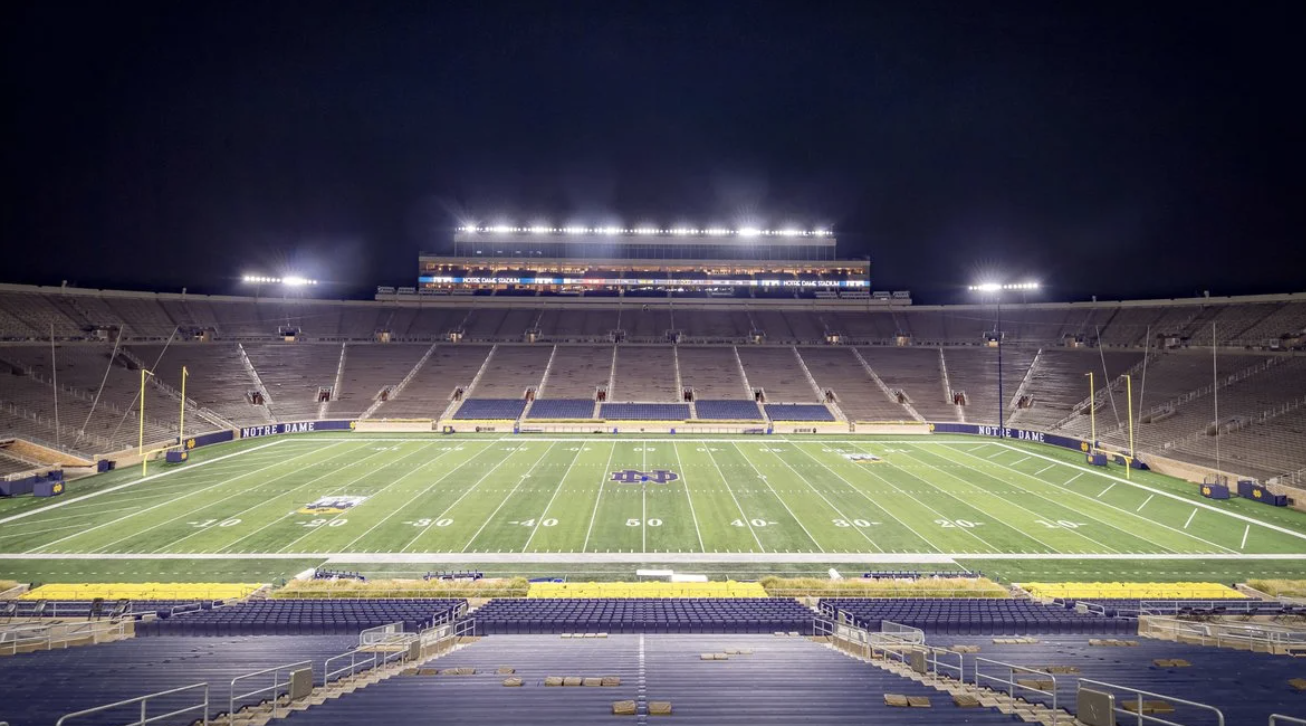
Photo Courtesy University of Notre Dame
Notre Dame Stadium (University of Notre Dame Fighting Irish): Green is more than just Notre Dame’s team colors; it’s in the heart of the college’s business operations. The Fighting Irish unveiled their first green initiative, Recycling Irish, in 1990. By 2006, the program had recycled around 13.7 million pounds of waste.
Game Day Recycling would soon follow, as fans were provided recycling bags for tailgating and was situated around Notre Dame Stadium. In 2008, it became an official Notre Dame initiative, with the college football season producing 24,000 pounds of recyclables.
By 2014, the efforts put Notre Dame 11th in sustainability rankings by SaveOnEnergy.com. These accolades only propelled Notre Dame to go further.
In 2017, three new campus buildings were LEED-certified. Each came with a green roof, the largest living system in Indiana. The vegetation acts as insulation and saves water by decreasing stormwater runoff. The university has won Gold LEED status in 2020.
The stadium’s food provider, Levy, works with a South Bend nonprofit to donate food from game days to those in need. Between 2017 and 2019, more than 70,000 pounds of food were rescued.
Kansas
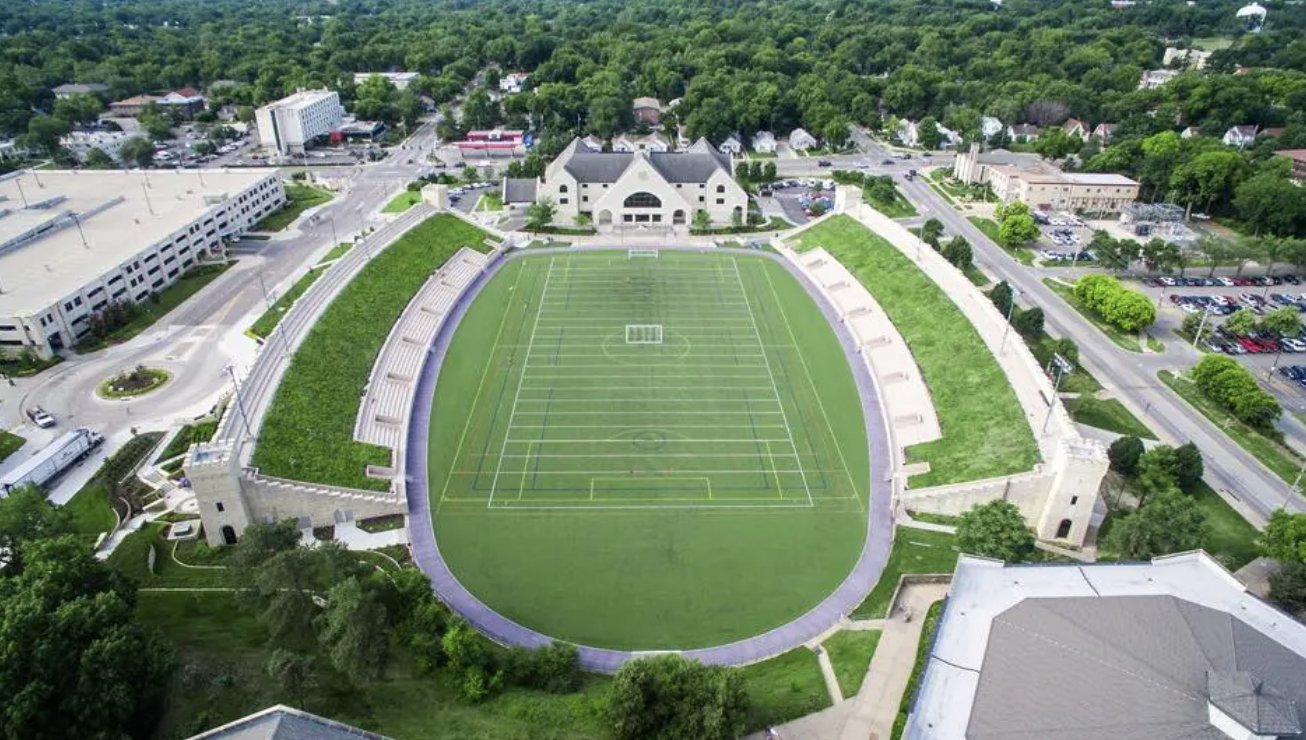
Photo Courtesy Kansas State University
Memorial Stadium (Kansas State University Wildcats): Memorial Stadium has been home to Kansas State University (KSU) Wildcats football since 1920. It was built to honor university students who served in World War I. However, the stadium has been updated constantly throughout its history.
Below the stadium, classrooms, offices, and creative spaces were updated. Green roofs were added to these facilities with help from the landscape architecture department. They cover around 43,000 square feet and serve many purposes — environmental and economic alike.
This project made KSU a leader in state sustainability. People use them as educational tools in the first five years of existence, showing how vegetation and soil design can help a building’s integrity.
The sloping structure limits who can sit on it, allowing more wildflowers to flourish on the roof. It helps the area’s ecological diversity expand. Sensors monitor soil moisture and temperature. This effort gave researchers data that helped save water during field irrigation.
Wildlife now frequents the area, with bees, cotton rats, hawks, and rabbits coming and going. Butterflies are attracted to the various flowers, helping pollination around the college. These green roofs could serve as great tools to attract other pollinating insects.
Students and faculty have volunteered to weed these gardens, saving even more money on landscaping. Some other significant statistics include 100,000 gallons of water saved between 2017 and 2020, 17,000 less kWh of electricity a year used and more efficient infrastructure.
Kentucky
When you think of Kentucky sports, the University of Kentucky basketball team probably comes to mind. But between them and Louisville, it’s a distinct rivalry and battle for state bragging rights. Maybe they can rival each other with sustainability, too.
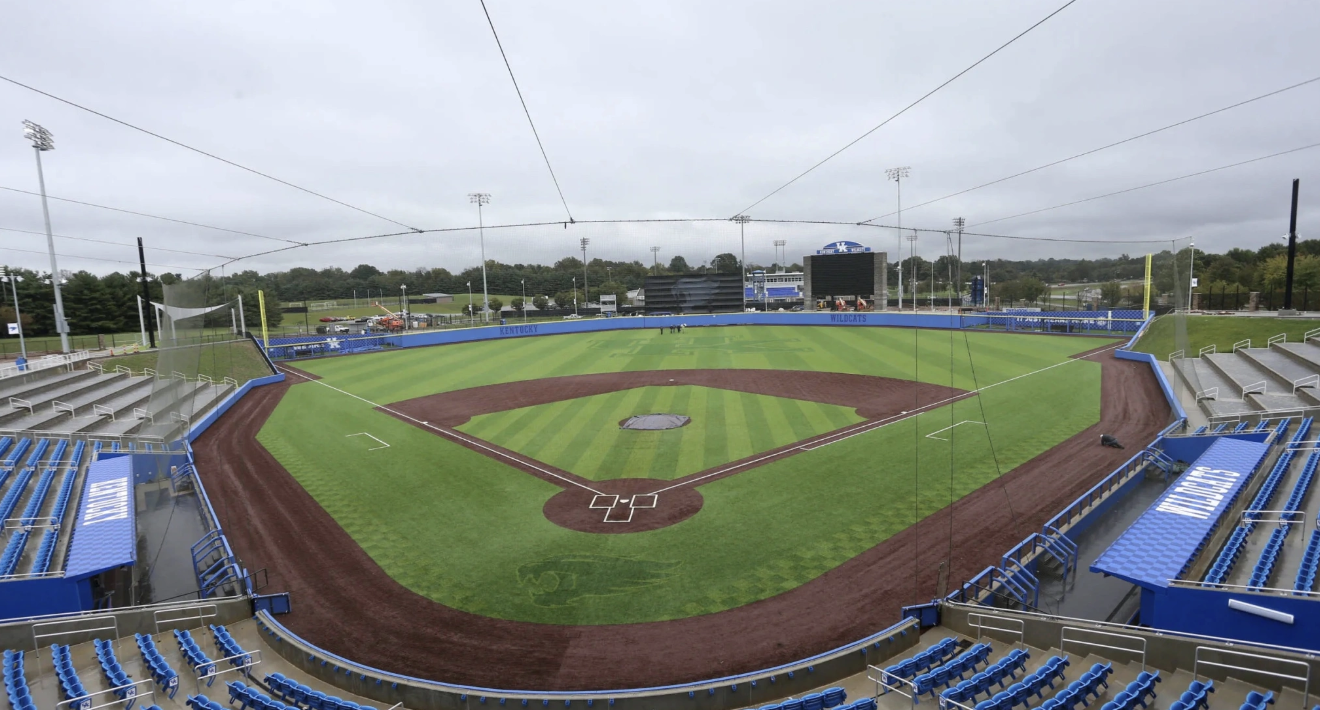
Photo Courtesy UK Athletics
Proud Park (University of Kentucky Wildcats): Proud Park is home to the University of Kentucky’s (UK) baseball team, opening in 2019. A third of the building materials had recycled substances mixed in during construction. More than 40% of the materials came from within 500 miles of Lexington, KY, and 75% of the construction waste was diverted from landfills.
The new baseball field used artificial turf to conserve water and maintenance costs. Lighting and HVAC systems were replaced with energy-efficient appliances, cutting energy consumption by a third.
This new ballpark caught the attention of building councils, eventually earning LEED certification after opening. It’s now the third athletic complex to achieve this status.
The venue’s name even has a sustainable message hidden within it. The Kentucky Department of Agriculture launched a Kentucky Proud program to raise awareness about local farms and produce, a major industry in Kentucky. Even the Kentucky Farm Bureau purchased the stadium naming rights, hoping to remind fans they sell fruits and vegetables and encourage them to buy locally to strengthen the state economy.
Louisiana
Down in the bayou, the football game is on. Louisiana is known for its plethora of college football teams, but the most notable has to be Louisana State University (LSU). The New Orleans Saints are the NFL team of choice, and the New Orleans Pelicans are the NBA franchise for the state. So, several sports teams require a lot of stadiums.
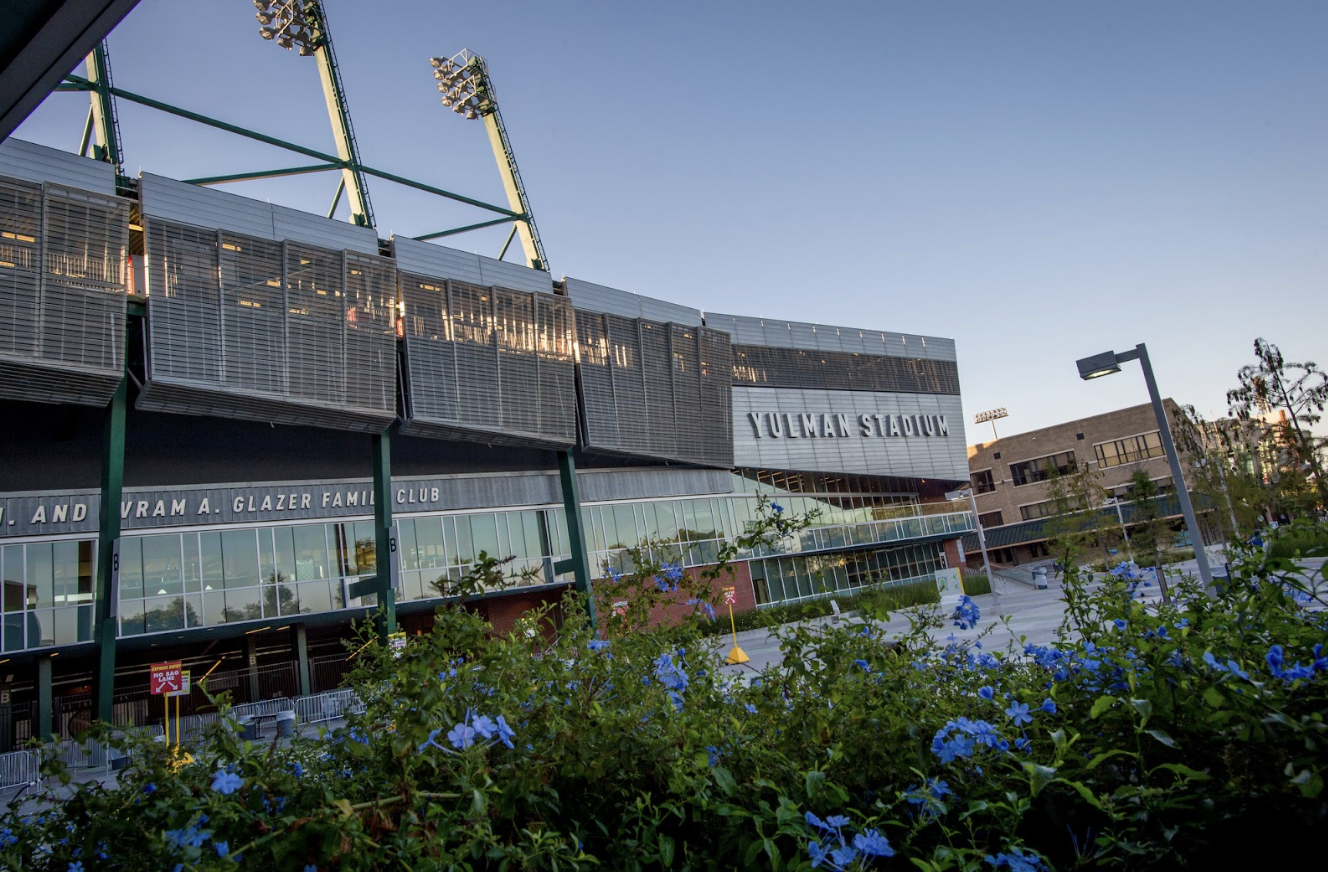
Photo Courtesy Tulane University
Yulman Stadium (Tulane University Green Wave): Yulman Stadium opened its doors in 2014 after the football team relocated from the New Orleans Superdome. The new stadium was mandated to be built as green as possible. In 2015, Yulman achieved Silver LEED Status. The U.S. Green Building Council (USGBC) noted the low-flow toilets and aerated faucets that lowered water usage by 39%.
Rain drainage and storage systems are top-notch as well. Artificial turf eliminates the need to water grass, and gravel under the field stores rainwater for practice fields. The stormwater storage systems have decreased flooding in the New Orleans area. The plaza in front of the stadium has native grasses and Cyprus trees that also reduce flooding threats.
Yulman has an automated HVAC system to control how much energy is used for heating and cooling for energy conservation. LED lights line the stadium, and natural light is encouraged whenever possible and plentiful, but overhangs also keep things cool.
The construction process was very sustainable, using 48% local and 39% recycled materials. As for recycling cans and bottles, the stadium averages 1.2 tons of recyclables each game day. Student volunteer organizations have encouraged fans to keep up the efforts.
Massachusetts
Being the state where the American Revolution began, Massachusetts’s sporting heritage has long been tied to the culture of New England. Boston has transformed from a city of revolution to one of serial winners. The Red Sox, Patriots, Celtics, and Bruins have all won trophies in the 21st century. How are they doing on the environmental front, though?
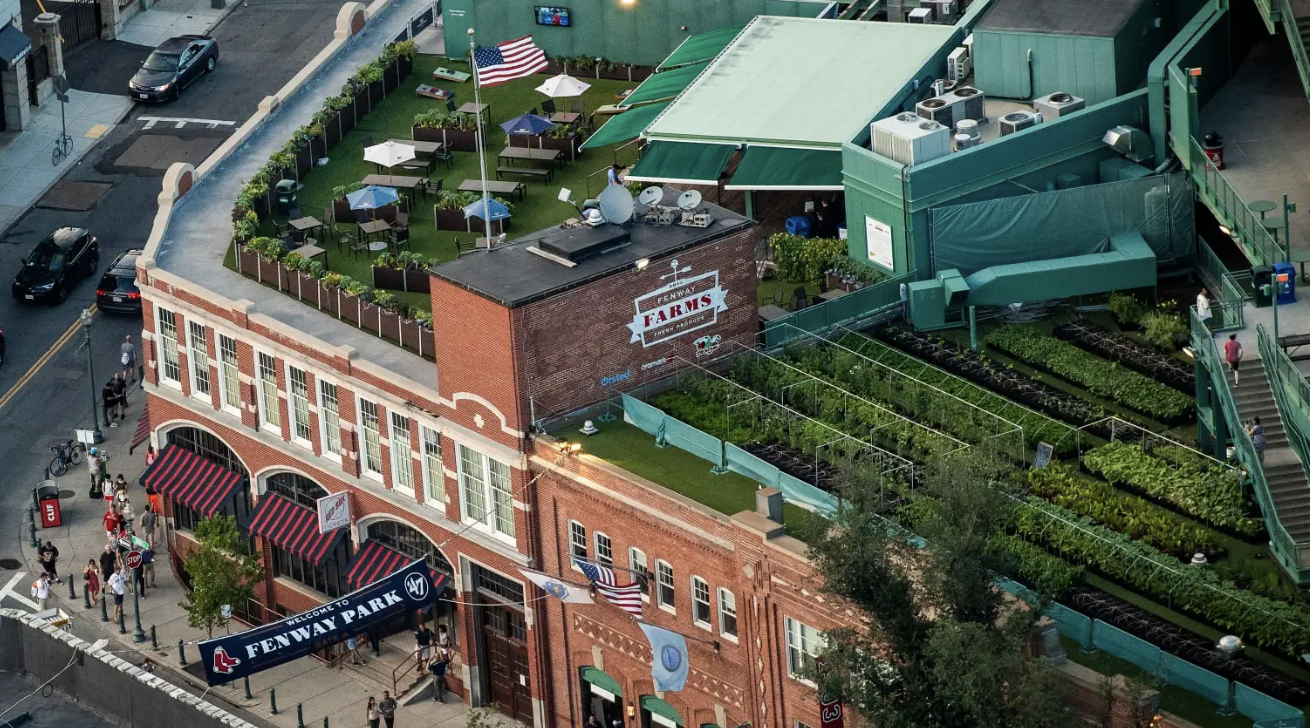
Photo Courtesy MLB
Fenway Park (Boston Red Sox):
Another historic stadium undergoing its sustainable transformation, Fenway Park has been the Red Sox’s home since 1912. It’s home to the Green Monster, the massive warning track that’s almost impossible to hit home runs over.
In 2014, Red Sox co-owner Linda Henry and her husband John began planning a rooftop garden at Fenway. The Red Sox partnered with two local urban garden firms and an engineering company to create an organic rooftop garden. Milk crates and light boxes make up the garden, lined with fabric for better drainage and aeration, supporting root growth.
It only took about eight months before the garden was fully operational. The successful project inspired the Red Sox to install a new event deck near the space. It also won numerous recognition from environmental advocacy groups.
It is now a farm that grows local produce such as carrots, strawberries, snap peas, and sweet potatoes. Baseball season aligns with the growing season, offering plenty of time to educate fans about urban farming and the value of proper nutrition. Some of the crops are used in the Red Sox team kitchen.
The venue also uses discarded items to make sauces or as add-ons in salads, and any leftover harvest gets donated to Boston-area food banks.
Even growing the crops are sustainable, as the team uses smart irrigation to regulate water use. The farm also acts as a carbon sequester and retains rainwater to decrease storm runoff.
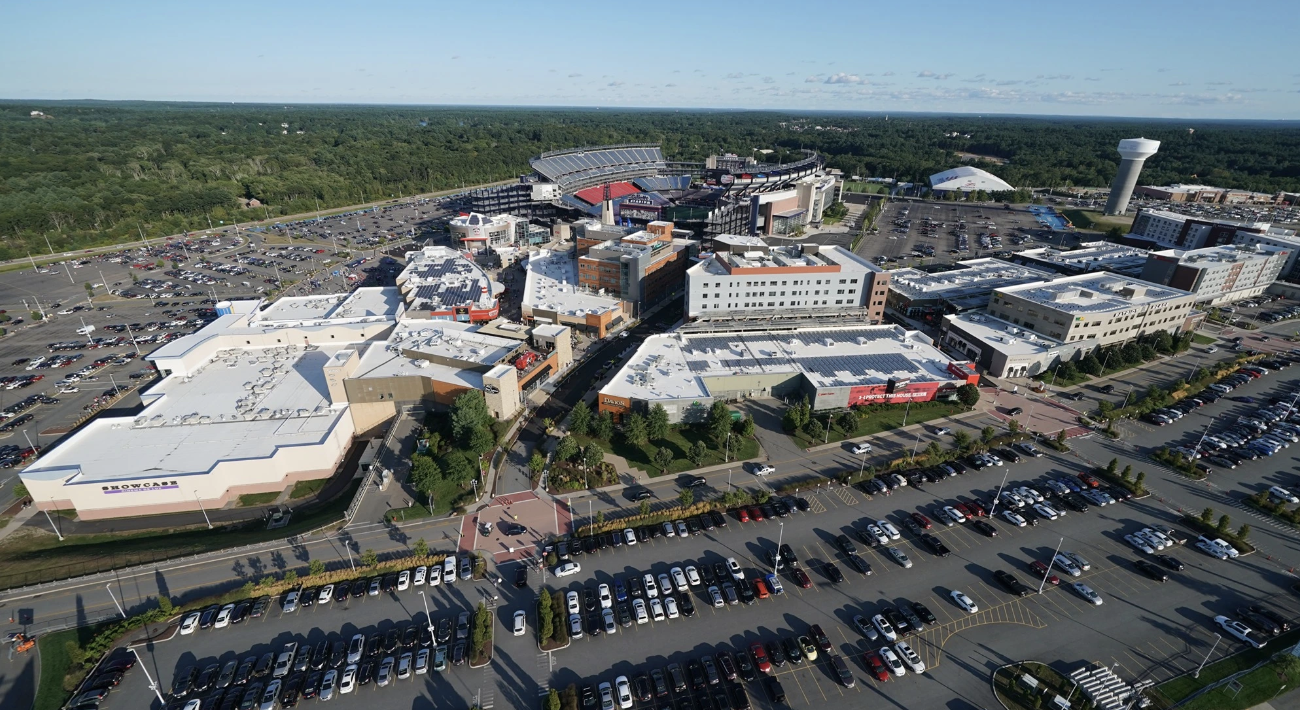
Photo Courtesy Patriot Place
Gillette Stadium (New England Patriots): The owners of the Patriots, the Kraft Group, have been investing heavily in the team’s sustainable future. When Gillette was built, 90% of construction waste was reused and kept out of landfills. Upon opening in 2002, the U.S. Environmental Protection Agency (EPA) awarded ownership with the Environmental Merit Award for sustainable building operations.
Timing devices turn off all non-essential lighting after hours. On-site water treatment facilities save millions of gallons of water by recycling it for sanitary drainage.
Even Patriot Place, the entertainment and retail complex near Gillette, was built with these green measures. EnergyStar appliances and energy-efficient lights were installed throughout the venue. White roofs reflect sunlight and reduce the heat island index. Solar compactors were installed as well to reduce electricity consumption. The Neponset River wetland area was also restored while building Patriot Place.
In 2009, around 2,800 solar panels were installed on seven buildings, supplying up to 30% of Patriot Place’s power. More solar panels and canopies were added in 2012, upping solar power by 60%. Electric hand dryers were placed in bathrooms, consuming less energy than other models. These measures made Gillette one of the most energy-efficient NFL stadiums in 2015. A new partnership with Enel X has seen 50 smart EV charging stations installed to promote zero-emission transportation.
A new food diversion program has seen 200 tons of food waste diverted to food banks. The most recent sustainability program is the WIN Waste Innovations program, where stadium waste is recycled and processed to reduce landfill waste and emissions.
Maryland
Another state important in the development of America as a nation, Maryland is known for a few things: boiled blue crabs and its ambitious sports teams. The Orioles are the old guard, but younger franchises like the Ravens have equally captured fans’ attention. So, too, has the sustainability efforts of the teams.
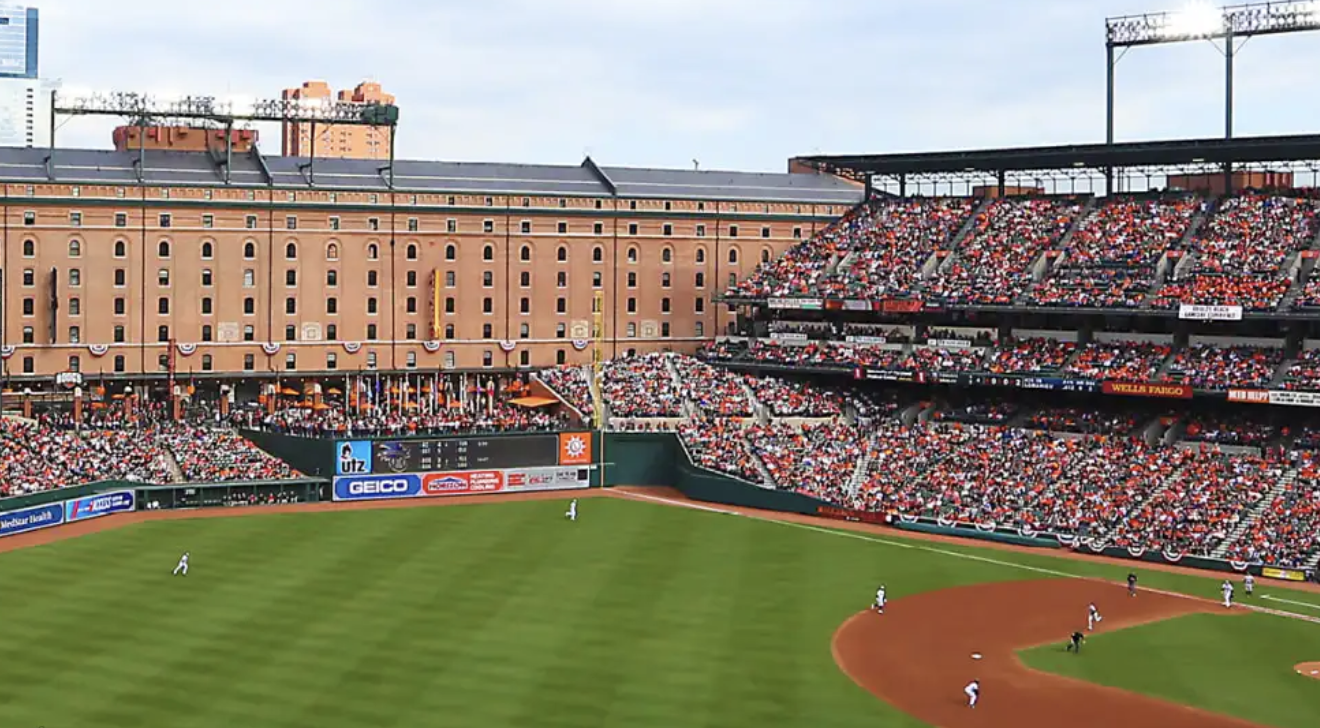
Photo Courtesy MLB
Oriole Park at Camden Yards (Baltimore Orioles): Oriole Park is the newer addition to the historic Camden Yards baseball stadium. The Orioles and the Maryland Stadium Authority (MSA) have worked together to make it as sustainable as possible. The ball club incorporated the old Baltimore & Ohio Railroad warehouse into the right field wall instead of demolishing it.
In 2013, the Orioles and MSA launched the Go Green campaign, involving green cleaning products, paperless ticketing, and making Camden Yards a smoke-free facility. Cigarette butts outside the stadium walls were collected and turned into plastic pellets for manufacturing plastic crates.
A designated bike parking area was built, and EV chargers were installed for the 2017 season. Mass transit is near Camden Yards, so the MSA has promoted its use heavily. Team food provider Delaware North runs composting; they are working to get local produce into the food supply at the ballpark.
In the mid-2010s, the venue underwent a major remodel, with the construction company using 60% sustainable materials, and three-quarters of waste was recycled. Utilities have been switched to energy-efficient options. Low-flow plumbing fixtures have contributed to 25% less water use.
Single-stream recycling diverts 800,000 items from landfills annually. Cooking oil from concessions is processed into biodiesel. Outside the stadium, the Orioles have planted a garden to promote biodiversity for butterflies and native orioles. On Earth Day 2018, Oriole Park officially received its Gold LEED status.
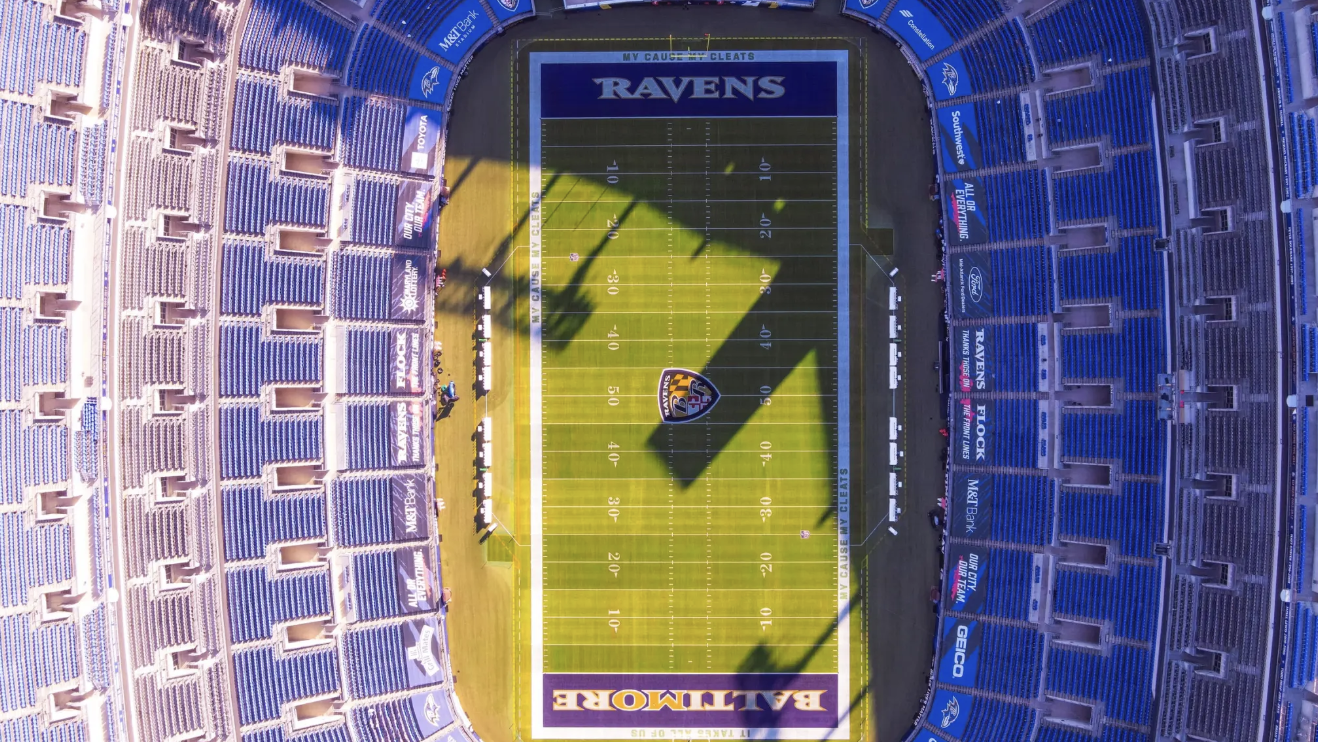
Photo Courtesy Brendan Beale
M&T Bank Stadium (Baltimore Ravens): Earning a Gold LEED certification in 2013, M&T Bank Stadium is considered one of the most sustainable venues in the NFL. As another structure under MSA governance, it opened in 1998 and was recently recertified a Gold LEED by USGBC in 2019.
Ravens executives eyed a balanced eco-stadium plan that tackled water conservation, recycling, transportation, and community engagement. Beginning with recycling, around one-third of waste is recycled, especially the cans and bottles from game day. Cigarette butts are collected and transformed into plastic pellets used in recycled materials.
Moving onto water conservation, the Ravens installed 400 waterless urinals and low-flow faucets to save 3 million gallons of water, 45% less than in previous decades. Irrigation has become 30% more efficient thanks to adaptive vegetation. T
The stadium’s automated energy management system has saved more than 5 million kWh of electricity. Also, Baltimore-based Constellation Energy built a 375 kW solar energy system on team HQ and training facility, generating around 15% of the building’s energy needs. The facilities also purchase recycled, renewable, and EnergyStar products to keep energy consumption low. This effort is part of the Sustainable Purchasing Policy.
In terms of public transportation, 12% of fans take the light rail or Ravens Ride bus to game day, while 40% of staff take alternative transport. The team encourages fans to join the public transportation wave. Some other small initiatives include garden and tree-plant projects around Baltimore and an ongoing program called GamePlanEarth that provides solutions to making Baltimore more sustainable and clean.
Maine
Maine was an extension of the original Massachusetts colony, and it wasn’t until 1820 that it became a state. That doesn’t mean the New England charm hasn’t rubbed off on this woodland state. While the population density isn’t very large, Mainers still love sports. Between Minor League Baseball (MiLB) and college hockey, plenty of high-end and eco-friendly sports exist.
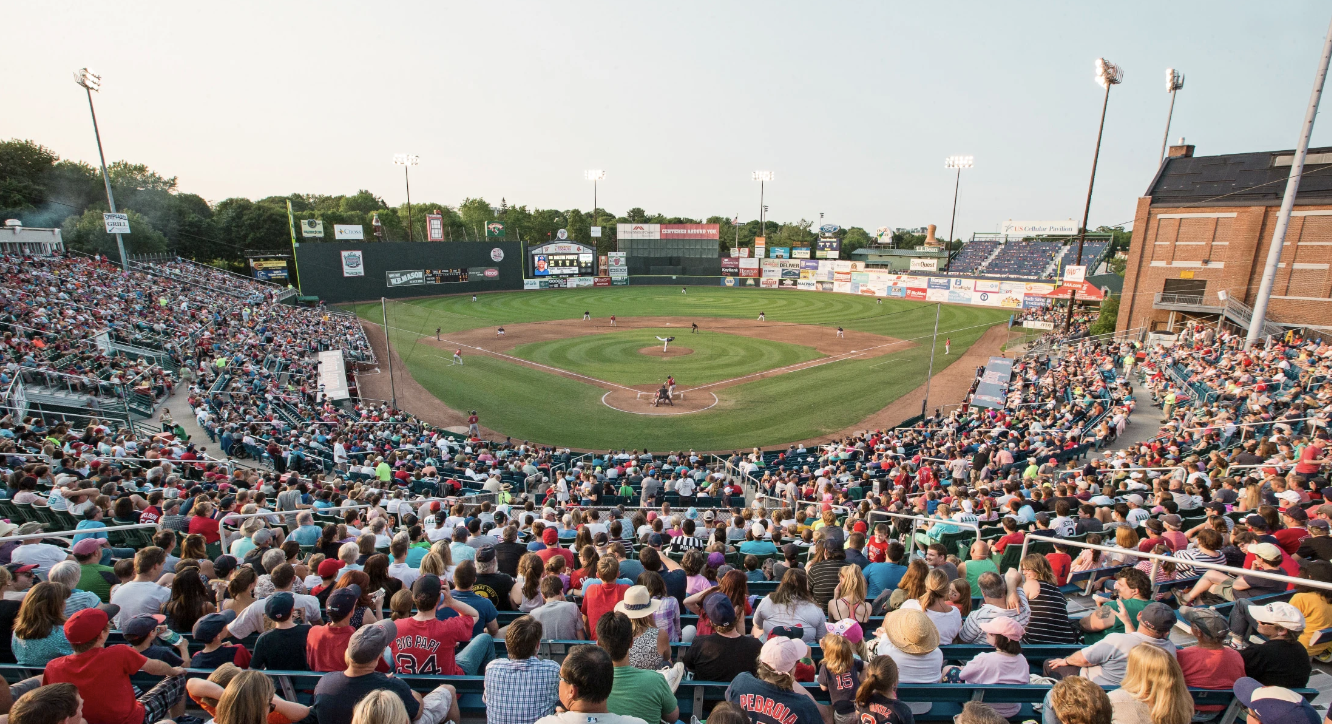
Photo Courtesy MiLB
Hadlock Field (Portland Sea Dogs): The Sea Dogs are the AA affiliate of the Red Sox. As they prepared for the 2022 season, team leadership put sustainability at the forefront of their plans. Partnering with the sustainability firm Arcadia, the Sea Dogs changed a lot of their operations.
The first campaign was Sustainable Sundays, which focused on eco-friendly activities. Organizations take part in the program, encouraging more involvement with sustainability. In 2007, recycling company CLYNK was brought in to run stadium recycling programs.
All the money generated from recyclable donations was donated to Strike Out Cancer in Kids. This philanthropic branch of the Sea Dogs gives funds to the Maine Children’s Cancer Program at Maine Medical Center. It has raised more than $5 million since the fundraiser started in 1995.
Connecting further with the community, outreach programs have included free youth baseball clinics, the Slugger Open golf outing for more children’s hospital donations, and the Mother’s Day 5K for breast cancer research. They’ve even worked with Sea Dog staffers and ground crew to remake an athletic field. Hadlock Field was voted one of the best MiLB venues in the U.S.
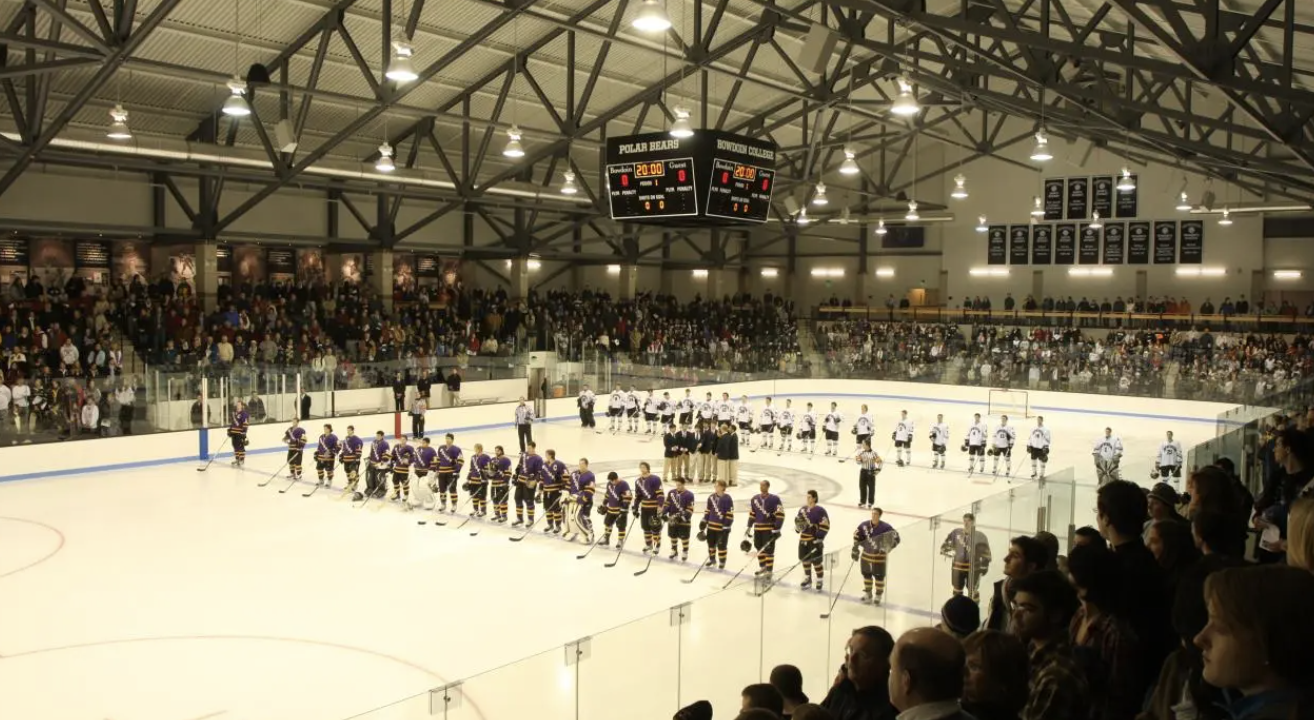
Photo Courtesy Bowdoin Athletics
Sidney J. Watson Arena (Bowdoin College Polar Bears): Only a Division III hockey school, Bowdoin is only half an hour from the capital city of Portland. The Watson Area opened in 2009 with some eco-friendly goals in mind. The college has already reached carbon neutrality, becoming the third U.S. college to do so. Watson Arena was the first college hockey area to earn LEED certification.
During construction, 80% of the debris was reused or recycled. Pre- and post-consumer materials comprised 30% of the building structure, and 40% were sourced from within a 500-mile area near Brunswick, ME, site of the Bowdoin campus. Wood products used in construction were all certified by the Forest Stewardship Council, and all paints, sealants, and carpeting have low levels of VOCs for better air quality.
Priority parking spots are reserved for fuel-efficient and zero-emission vehicles. Low-flow faucets, toilets, showers, and urinals reduced water use by 25%. Indigenous plants around Watson save even more water, not to mention the upgrade to the stormwater management system. The arena roof has reflective shielding to stop the heat island effect, and solar panels generate 10% of Bowdoin’s annual energy.
These sustainable measures have made Watson 17% more efficient than competing arenas. Infrared cameras can pinpoint ice temperatures to maximize energy savings, allowing cooling systems to regulate refrigeration. Renewable Energy Credits offset more than a third of the electricity usage.
Watson Arena is just one example of Bowdoin Athletics’ sustainability mission. They’ve been involved in Green Games and the EPA’s GameDay Challenge to promote environmentalism with spectators.
Michigan
Michigan is the land of America’s automotive industry, but it’s also the land of some of its more formative sports franchises. Between teams like the Lions, the Red Wings, the Tigers, and the Pistons, they have all fought hard to prove that the Motor City is still thriving. Adding sustainable business practices will help prove that notion correct.
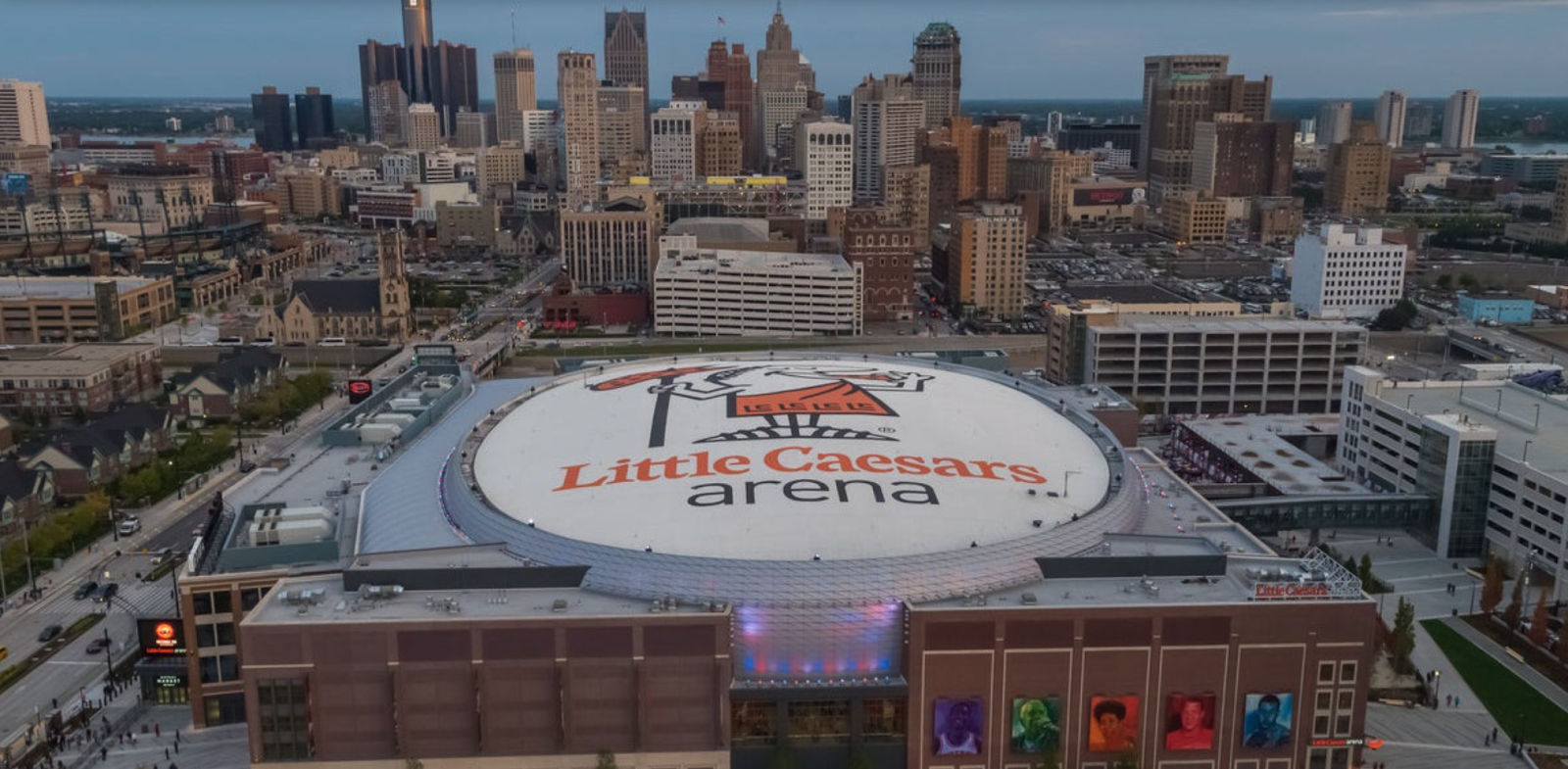
Photo Courtesy 313 Presents
Little Caesars Arena (Detroit Pistons/Detroit Red Wings): A dual-sport stadium, it’s hard enough juggling the long NBA and NHL seasons and the teams’ respective sporting decisions. However, sustainability was a big talking point when Ilitch Holdings moved forward with the new arena design.
During construction, a quarter of the building materials were from recycled materials, with 13% sourced from the Detroit area. New ventilation systems were installed. Water systems were updated to lower water usage by 40% and build a sedimentation and erosion control plan to limit waste. This effort led to Little Caesars earning Silver LEED status.
One of the most notable additions to Little Caesars’ sustainability measures is the heat-resistant coating of paint called Via.
It covers the central exterior concourse and helps regulate temperature, saving on heating and cooling and illuminating structures. It also naturally repels dirt and is fire-resistant.
Storefronts, curtain walls, and entrances are all made from Michigan-based Tubelite’s aluminum formula, which promotes energy efficiency. LED lights reduce energy consumption further. Being located in the downtown area has promoted public transportation use, cutting down on vehicle emissions.
Little Caesars has been designed so safely and sustainably that the Department of Homeland Security said it met the SAFETY Act certification requirements and the National Center for Spectator Sports Safety and Security with the Sport Event Security Aware designation. Even the National Weather Service gave accolades for its ability to prepare for severe weather conditions.
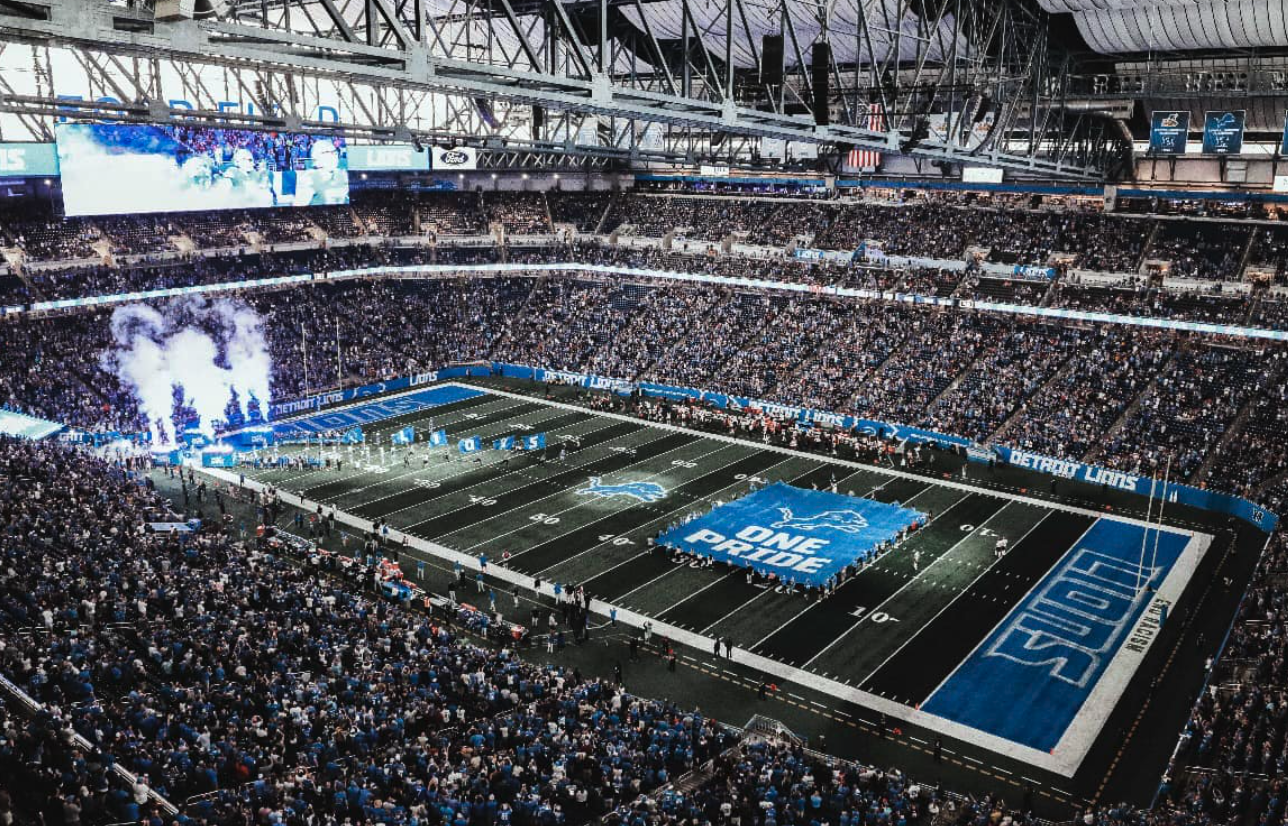
Photo Courtesy Ford Field
Ford Field (Detroit Lions): Standing at the site of the now-demolished Pontiac Silverdome, Ford Field captures the essence of Detroit’s automotive sector but adds a few eco-friendly measures. When it was built, it used 10 million pounds of recycled steel, 20 million pounds of steel in the dome, bamboo, recycled glass in the floors, and 25,000 recycled tires contributed to the FieldTurf.
An old department store was built around and became a section of the main concourse. Being owned by the Ford family, the Lions have been very active in the sustainability aspects of team operations. The Fords sponsored the NFL’s first carbon-neutral game between the Lions and Packers back in 2006. More than 1.8 million pounds of GHGs were offset thanks to 150,000 newly planted trees.
Sustainability was at the forefront of the designs when the stadium underwent huge renovations in 2015. LED lights replaced old halide field lights, saving energy usage by 60%. These lights were installed in parking lots, too. Windows were re-situated to let in more natural light, further lowering energy costs. LED lights also have cooling fans, so they don’t radiate heat and can be turned on or on a whim.
In 2018, the Lions moved toward solar energy, putting panels on team practice complexes and parking garages. Funny enough, Sam Martin, a former punter for the Lions, advocated for them, even though the stadium itself can’t support them yet, but that may be soon fixed.
The water system was updated in 2015, as well. Variable speed controllers lowered the water demand. Water softeners have allowed water to be recycled twice as often as in previous years, saving more than 2 million gallons just in 2016 alone. Gas water heaters were swapped for steam heat exchangers, which are much more carbon-friendly.
The roof was also painted over with a protective coating, with only 5% of the existing roof being replaced. That saved more money and materials. Ford Field has been recognized for its sustainable actions in various building publications and environmental consulting firms.
Minnesota
Minnesota is considered the State of Hockey thanks to its outstanding high school and collegiate hockey programs. That’s not to say professional hockey is terrible in the state; neither is football, basketball, and baseball. As a heavily wooded state, it’s not surprising that Minnesota’s stadiums are eco-friendly and some of the most modern venues in the U.S.
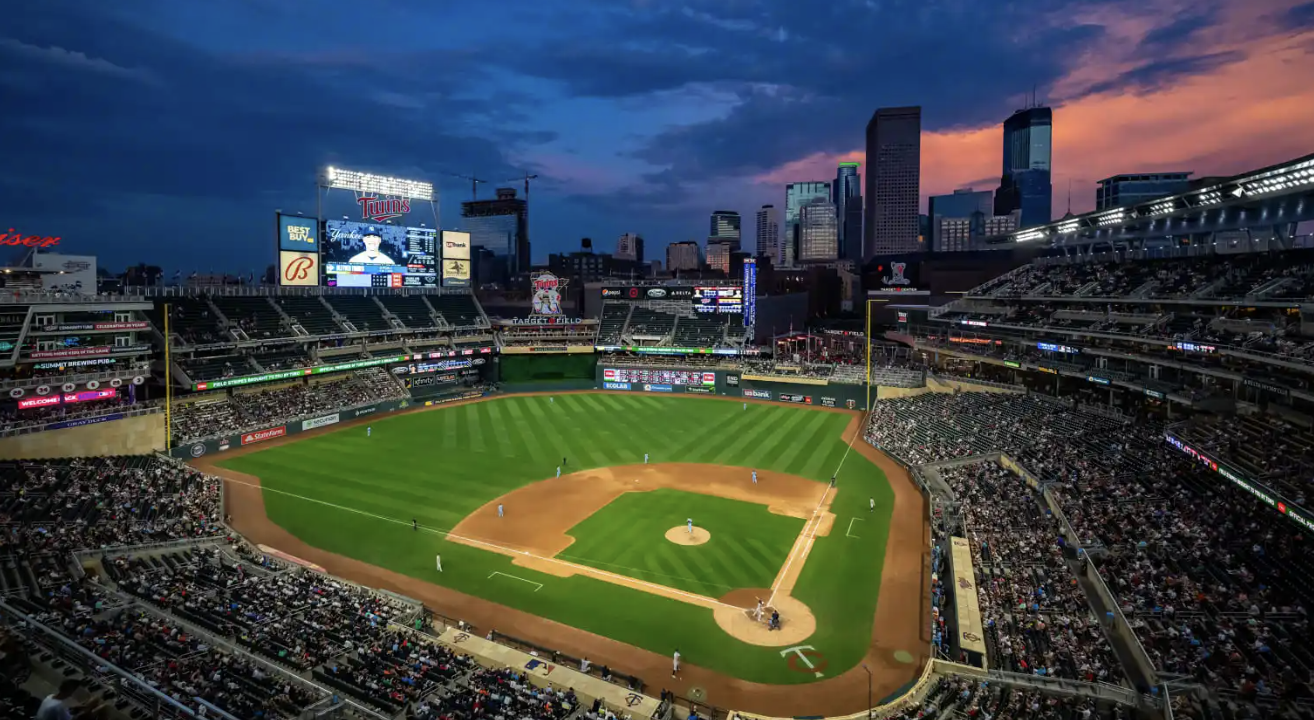
Photo Courtesy MLB
Target Field (Minnesota Twins): Home to the Minnesota Twins, Target Field is hailed as the “greenest ballpark in America” by the USGBC. It is Silver LEED-certified, collecting three other LEED awards for its sustainable operations, one of which was re-certified to Gold.
During Target Field’s construction, a brownfield full of contaminated soil was remediated. This improved water supplies emptying into the Mississippi River and Bassett Creek. Recycled building materials were used to build the structure, with waste being recycled.
Field and interior lighting, ventilation, and HVAC were built with the most energy-efficient methodology. The Twins have spent $38,300 less per year on energy costs. The roof has solar-reflective materials to reduce the heat island effect.
Water was a big focus of Target Field’s sustainable makeover. Bathrooms had low-flow appliances installed to save 4.2 million gallons of water. The Rain Water Recycle System has aided in water conservation by capturing and purifying 19 million gallons of water between 2010–2019. The recycled water is used to irrigate the field, clean stadium seats, and water the Living Wall.
Six thousand juniper plans are located behind the center field, improving air quality and teaching fans the importance of sustainability. The stadium has diverted around 12,000 tons of waste from 2011–2019, and 3,900 tons of trash went to the Hennepin Energy Recovery Center and processed into high-pressure steam. The steam powers buildings’ HVAC systems. Compostable cutlery was added in 2015, along with a waste diversion tool.
The MLB took notice of the Twins’ green policies, awarding the team the Green Glove award in 2021 for substantial waste diversion.
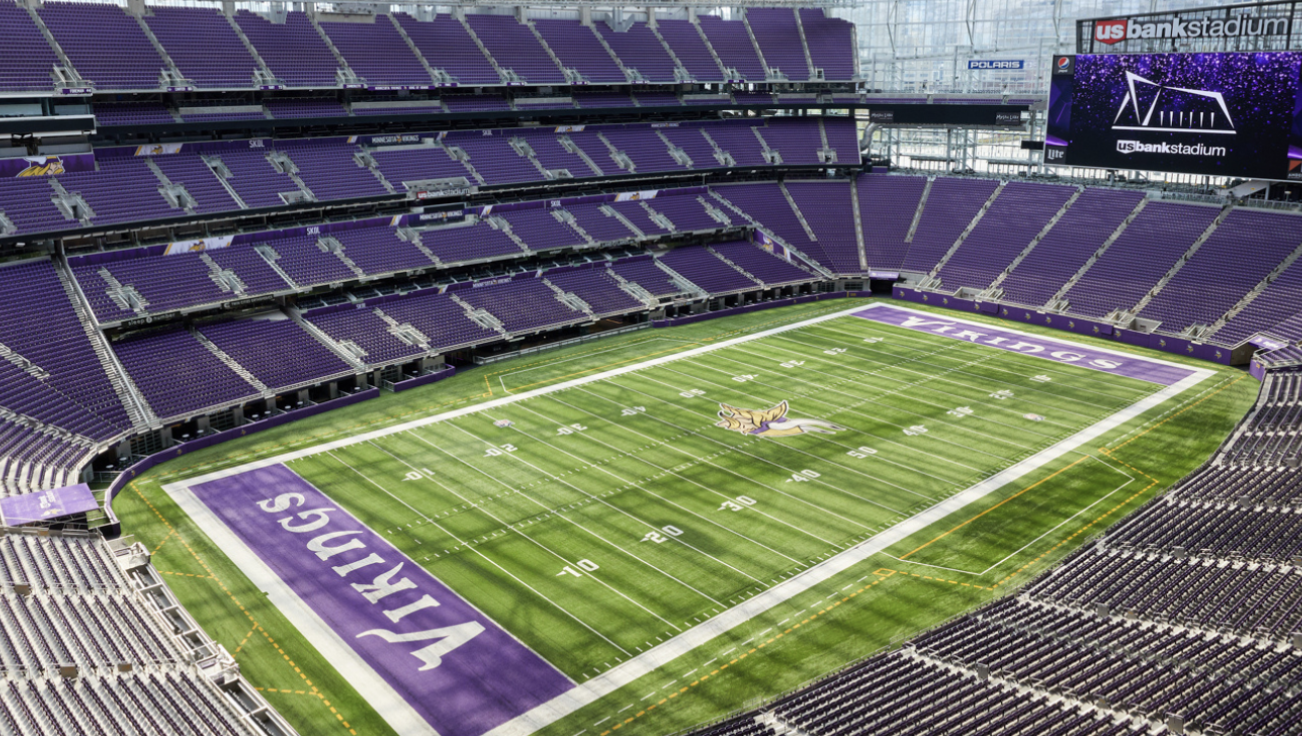
Photo Courtesy US Bank Stadium News
US Bank Stadium (Minnesota Vikings): US Bank Stadium is one of the newest and most environmentally-conscious stadiums in the U.S. It’s the only professional sports venue to earn Platinum LEED status, the highest honor the USGBC can designate. It has some of the most modern sustainability platforms known as Arc, which tracks all utilities and waste management.
Smart building management systems have decreased energy consumption by more than 10% since 2016. Electricity costs have dropped 25% as a result. The AtmosAir system filters the air of any VOCs, and A/C units have been strategically placed around the stadium to improve efficiency. LED lighting has lowered energy usage by 75%.
Perhaps the coolest feature of US Bank Stadium is the roof. Its translucent properties let in natural light, cooling and heating the building by reducing the need for artificial lighting and increasing solar light. Massive pivoting glass doors can open to let in light and air during warm days. The roof also stores solar heat to melt snow into a gutter system.
Rainwater enters a stormwater collection system that runs into the groundwater. In terms of waste diversion, 80% of trash is diverted, increasing every year since 2016. The stadium owners believe around 2 million pounds of recyclables and 950,000 pounds of compost material have been kept out of landfills. The remaining waste goes to the trash-to-energy facility.
Food packaging from concessions is composted. Filtered water coolers and reusable cups have slashed the rate of plastic bottles in the stadium. The Vikings encourage fans to take public transit to the games. There are 180 bike racks by US Bank for further alternative transportation promotion. The stadium also offsets 100% of its energy with renewable energy credits.
These efforts landed US Bank the 2018 Super Bowl, the first-ever Zero Waste Super Bowl. The NFL and its many partners sponsored several recycling programs leading up to the game.
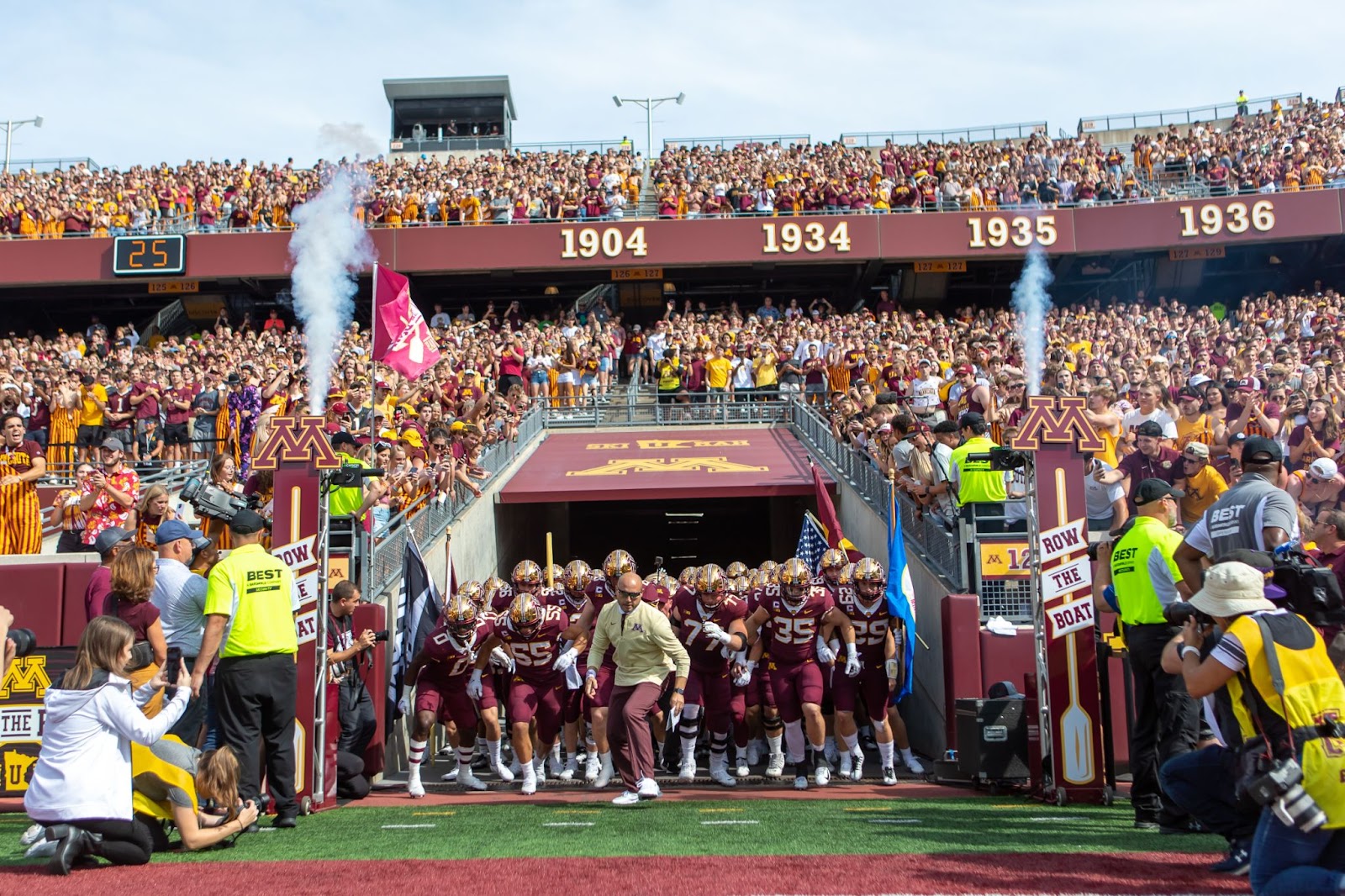
Photo Courtesy Bjorn Franke via Gopher Sports
Huntington Bank Stadium (University of Minnesota Golden Gophers): Huntington Bank Stadium was the first football stadium (college or professional) to be LEED-certified. The stadium opened in 2009, hosted its first game on Sept. 9, and won Silver LEED certification only a few days later.
The stadium was built on a redeveloped brownfield site beside a light rail line. Ninety percent of the steel used was recycled or fabricated in Minneapolis, and 98% of the construction waste was recycled.
The press box’s reflective roof lowers the amount of energy needed to heat and cool the venue. It also minimizes the heat island effect. South-facing windows let in more natural light, reducing electricity use for lighting.
Water management is top-notch, using 30% less potable water, and 50% less is used in irrigation. Low-flow plumbing makes this easier. Stormwater management systems filter rainwater and drain it to the Mississippi River. A rain garden is situated by the stadium, which won the university an award in 2009. Native plants and flowers cut down on water usage as well, only using rain to grow.
It shouldn’t be surprising that the university has been practicing sustainability this well. It has been doing it since 2004 but even had recycling programs as far back as 1998. Huntington Bank Stadium is highly energy-efficient, saving around $400,000 on energy costs and reducing CO2 emissions by 5.6 million pounds.
Missouri
Missouri has been a good place to live if you’re a sports fan. The Kansas City Chiefs currently boast one of the generational talents in Patrick Mahomes, who has led the team to two Super victories in three tries at the Lombardi Trophy. The Kansas City Royals are rebuilding after making back-to-back World Series runs in 2014 and 2015, winning it the second time. The St. Louis Cardinals have stayed competitive for over two decades, including a 2011 World Series win. The St. Louis Blues won their first Stanley Cup in 2019. Missouri has been a state of champions since the late 2010s and onward.
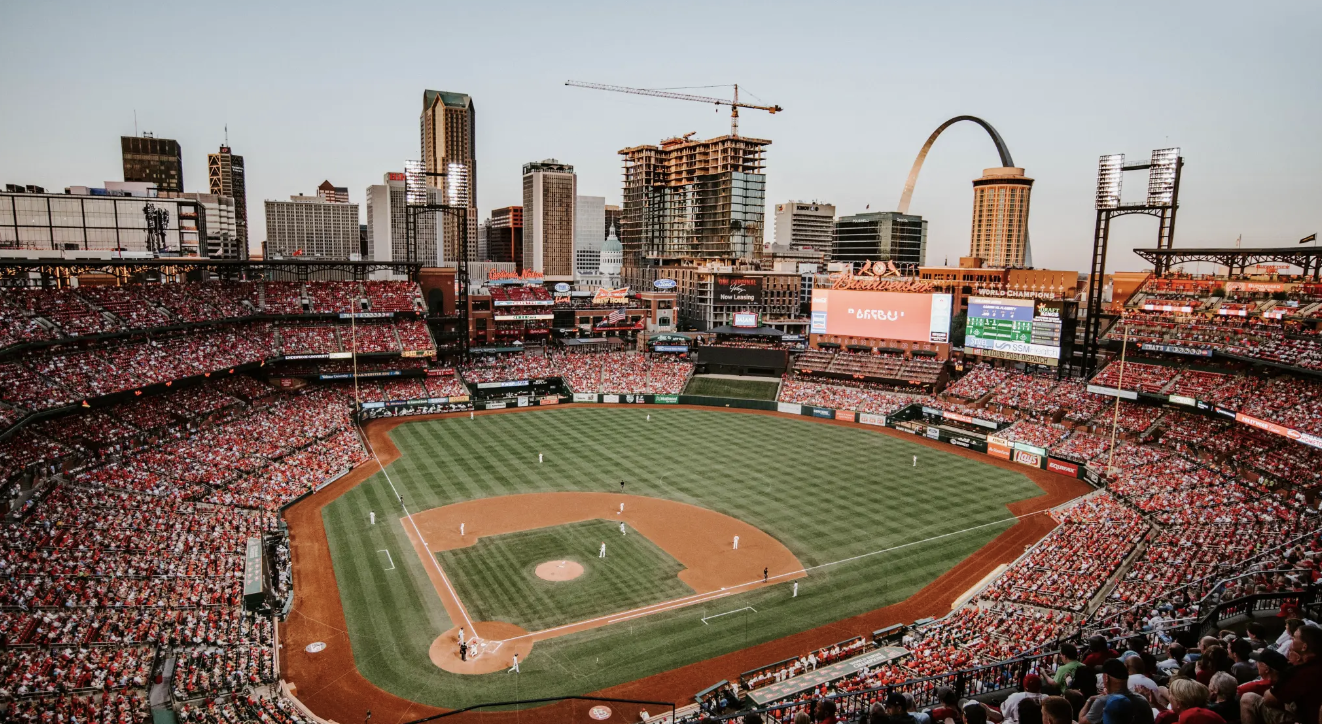
Photo Courtesy Ronni Kurtz
Busch Stadium (St. Louis Cardinals): Currently the third edition of the famous ballpark, Busch Stadium opened in 2006. For the past 16 years, it’s been upping its ecological business operations. The primary goal was energy conservation.
In 2007, the Cardinals installed EnergyStar’s energy management system, the Portfolio Manager, to track consumption and provide solutions. The club switched to fluorescent lighting, better insulation, efficient HVAC appliances, and a controlled lighting system. These efforts led to a 23% decrease in energy consumption, which is 39% better than the national average. It also saved $300,000 on energy costs from 2007 to 2010 alone.
After conducting an energy audit in 2011, the Cardinals continued to make energy-conscious choices. LED lighting replaced more than 1,000 traditional lights, saving up to 90% in demand for parts of the stadium. The controlled HVAC saved even more energy. A steam plant recovers heat from condensation, eliminating the need for 5 million gallons of water.
The same year, the Cardinals installed a 106-panel solar array above the concession and ticket area. It produces around 32,000 kWh of power per year. A 25 kW array is also above the team store. The Cardinals are doing their best to engage fans about sustainability. The 4 a Greener Game program promotes recycling at the stadium, as well as food diversion.
In 2019, 226 tons of food were diverted from landfills, while 10 tons went to Operation Food Search to combat food poverty. The EPA has recognized the Cardinals’ efforts with multiple awards and recognitions. The state of Missouri and the city of St. Louis have also lauded this historic franchise for Busch Stadium’s sustainability.
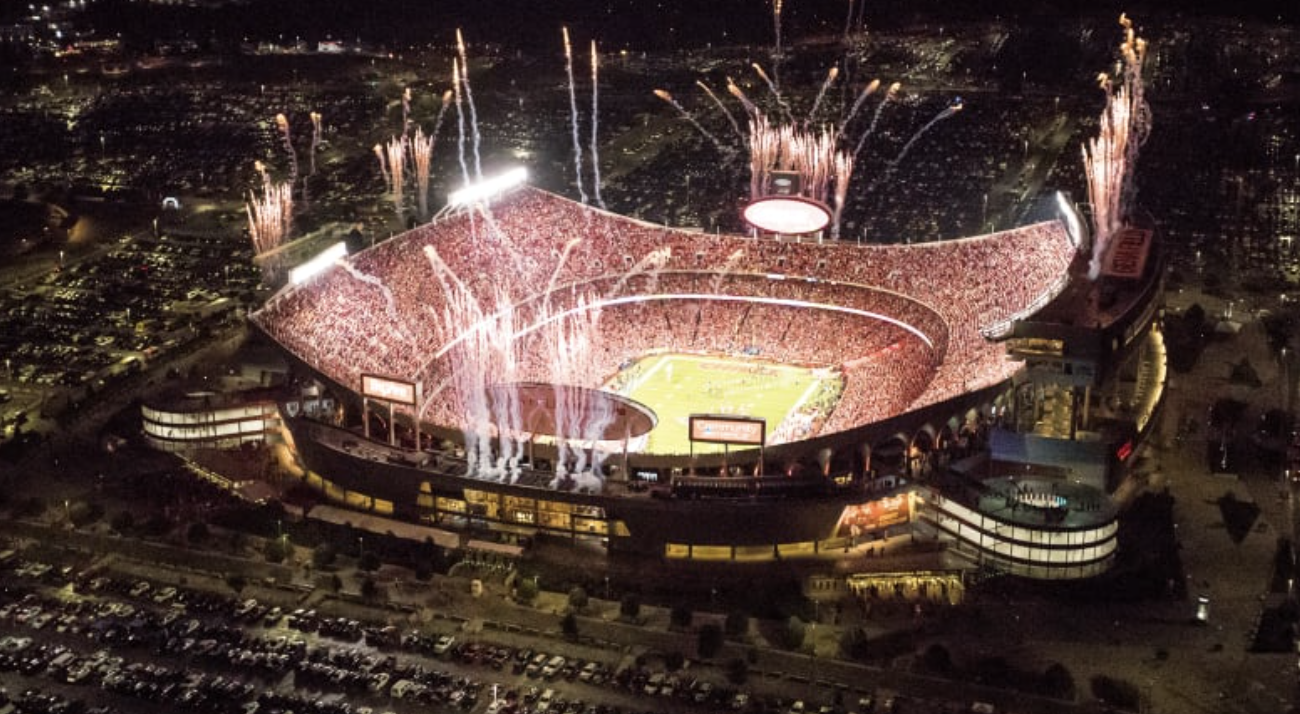
Photo Courtesy Chiefs News
Arrowhead Stadium (Kansas City Chiefs): Following their Super Bowl LVIII win, the Chiefs are winning off the field, too. As a member of the Green Sports Alliance, the NFL team began its sustainability journey with composting. The early 2010s were the formative years.
By 2019, around 95% of concession waste was recyclable or compostable, with a 50–60% diversion rate. Game day employees pass out recycling bags to tailgaters to fill them for pickup. Any leftover items in the stands are disposed of properly. The Chiefs were also the first pro sports team to sell pre-packaged peanuts in compostable bags. The bags debuted in 2017 but quickly earned accolades from sustainability consulting firms.
The EPA also honored the team for its food recovery program. The Chiefs and EPA ran a recycling drive to continue the team’s commitment to sustainability. The team is heavily involved in the Kansas City community. The Extra Yard for the Environment program has Chiefs staffers working on community events like tree planting.
The Chiefs Kingdom Food Drive collects more than 250,000 meals to tackle food insecurity. In 2020, the team teamed up with Harvester for new refrigeration units for 10 local food pantries. These pantries serve up to 2,000 families a month. Unserved concession food is given to them as well.
Arrowhead is highly efficient, using LED lights and installing EV charging stations.
In 2014, 308 solar panels were installed at the stadium and training facility. They generate around 30,000 kW of electricity, offsetting 66 million tons of CO2.
The Chiefs connected an under-used boiler to the field heating system to save more money and energy. EnergyStar HVAC appliances use automatic building management systems to adjust temperatures. The team has saved $200,000–$400,000 yearly on heating costs.
Mississippi
I don’t know much about Mississippi other than it has a river named after it, and they have a decent college football scene. Between Ole Miss and Mississippi State, the region’s college sports scene makes up for the lack of professional football and other sports. How are they doing on the sustainability front? Let’s find out.
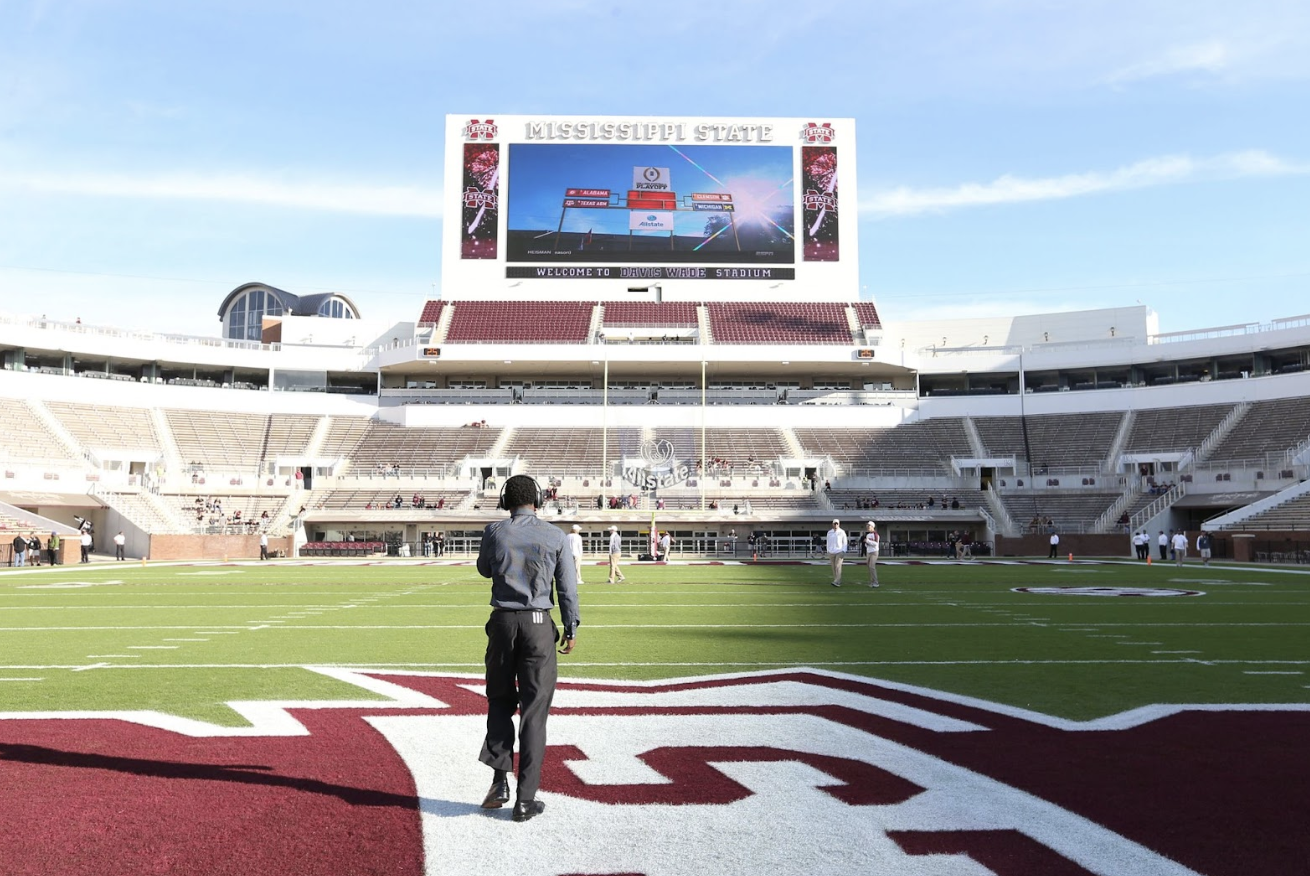
Photo Courtesy Scott Field/Davis Wade Stadium
Davis Wade Stadium (Mississippi State University Bulldogs): Davis Wade Stadium underwent a $75 million renovation in 2014, celebrating 100 years of operations. More than 800 seats were added. The construction was done with sustainable concrete.
Mississippi State University (MSU) had been researching how to create more sustainable materials. Regular concrete isn’t environmentally healthy and causes more carbon emissions. Professors combined Portland limestone cement with fly ash and slag cement. The solution has a 10% lower carbon footprint than traditional concrete, and slag cement and fly ash are recyclable byproducts.
The new cement requires less energy, raw materials, and construction costs. MSU’s invention was so popular that ConcreteConstruction.net noted more contractors were requesting it. If it can be used for Davis Wade Stadium, it can be used for houses. The renovation earned MSU accolades from contracting media outlets.
The college opted for insulated metal panel tech to improve the stadium facade appeal and energy efficiency. The panels create airtight insulation and replace thermal bridging, reducing water and electricity use. They also don’t cost much to maintain.
North Carolina
North Carolina is growing in popularity and population. As cities like Charlotte expand business avenues and more people settle in the state, the sports scene will continue to thrive. With an NFL and NBA franchise, NASCAR, UNC, and Duke basketball the household names in Carolina, people forget there are MiLB teams scattered across the city. Each franchise and college runs itself differently when it comes to sustainability.
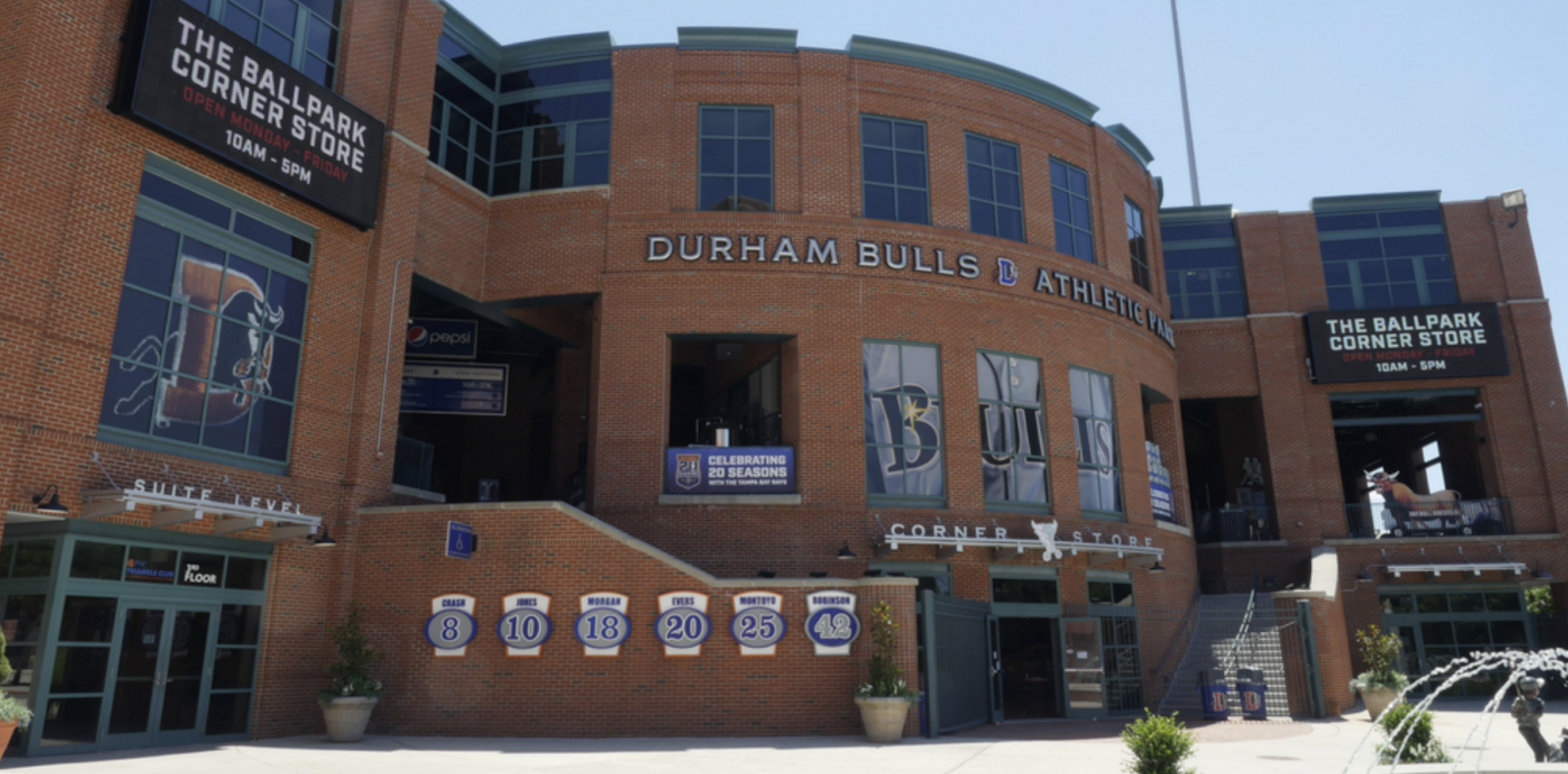
Photo Courtesy GoTriangle
Durham Bulls Athletic Park (Durham Bulls): The Triple-A affiliate of the Tamp Bay Rays, the Durham Bulls were voted “likely the single-most famous MiLB team in the world.” They played their first game more than 120 years ago. It’s one of the most successful minor league ball clubs in history.
Athletic Park is very eco-friendly, partnering with BASF Agricultural Solutions North American and semiconductor company Wolfspeed to open a pollination sanctuary in 2020. Annual and perennial pollinator plants increase the availability of bees, monarch butterflies, and other pollinators, helping beetles, moths, and birds thrive in the area, too.
The garden is essential for the global food supply chain. Over a third of the world’s crops require pollination. Flowering plants create oxygen and sequester carbon while also improving soil quality and water purity and returning moisture to the air.
The ball club also works to combat food waste. All food waste is composted. Popcorn bags are made from 100% biodegradable Eco Select Paper. The team has a good outreach program with NC Central University and Blue Cross Blue Shield to deliver lunches to the Boys & Girls Club of Durham and Orange Counties.
The Bulls advocate for alternative transportation, participating in GoTriangle’s Bike to the Ballpark events. Those who biked to games won prizes. Other outreach programs include the Durham Bulls Youth Athletic League, which teaches baseball to kids 5–12, and the Explorer Post 50, which teaches teens 14–20 TV broadcasting.
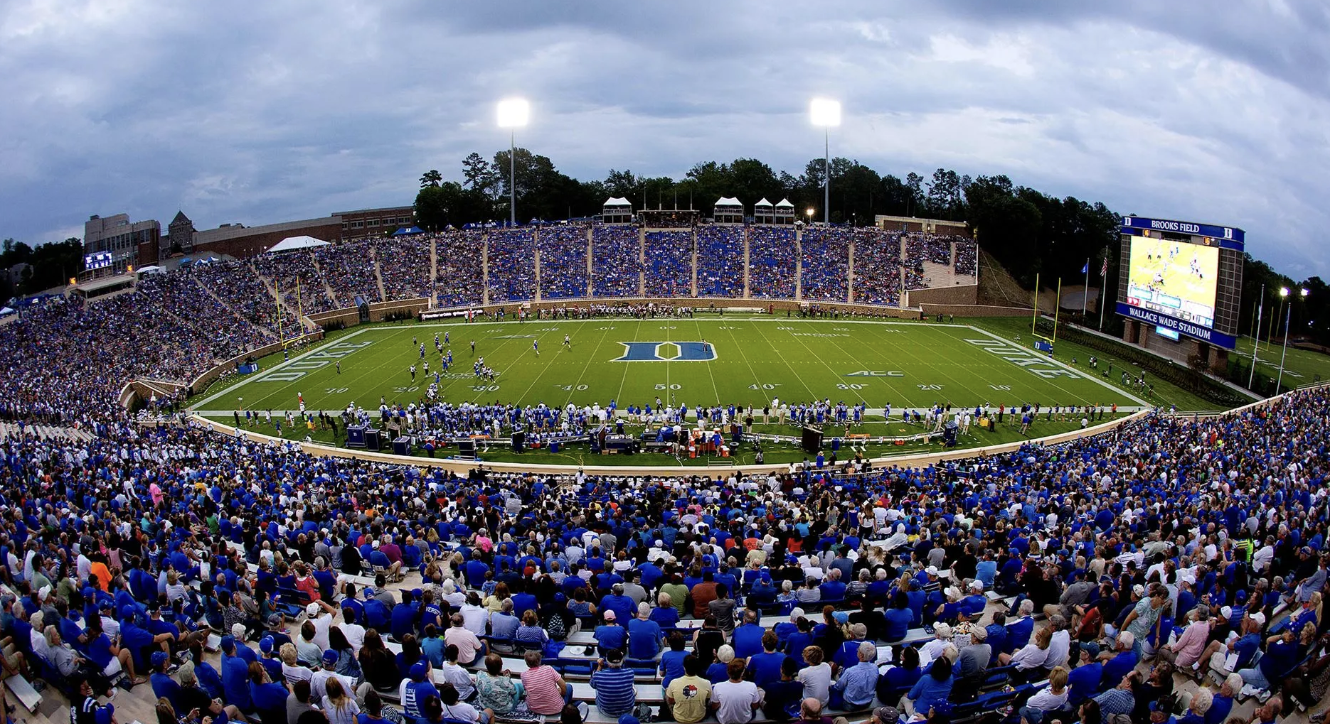
Photo Courtesy Go Duke News
Wallace Wade Stadium (Duke University Blue Devils): In 2014, Duke launched a Zero Waste Game Day Initiative at Wallace Wade Stadium, following a 2013 study that said 85% of trash could be recycled or composted.
A comprehensive waste management plan was drawn up, a collaboration between Duke’s Athletic Department, Duke Sanitation & Recycling, and Duke Sustainability. More recycling stations were set up at the stadium, allowing Duke to reach a 51% diversion rate.
However, recycling wasn’t new to the Blue Devils. They participated in the EPA-run GameDay Recycling Challenge, placing fourth amongst ACC schools.
The whole school’s diversion rate went up 65.35%. By 2015, the rate was up to 55%, and one game even posted 94% recycling rates. Duke became the first ACC school to reach a zero-waste mark.
Another Zero Waste game took place in 2016, posting a 93% recycling rate, and diversion jumped to 78%. The college credits this to student involvement. They hand out zero waste rolls with informational flyers about properly disposing of waste.
Concessions have switched to compostable silverware and cups. The football team played a role in this campaign, too. They helped prepare the waste rolls and autographed educational pamphlets for fans. 2019 was the best year for stadium waste diversion, posting an 80% rate.
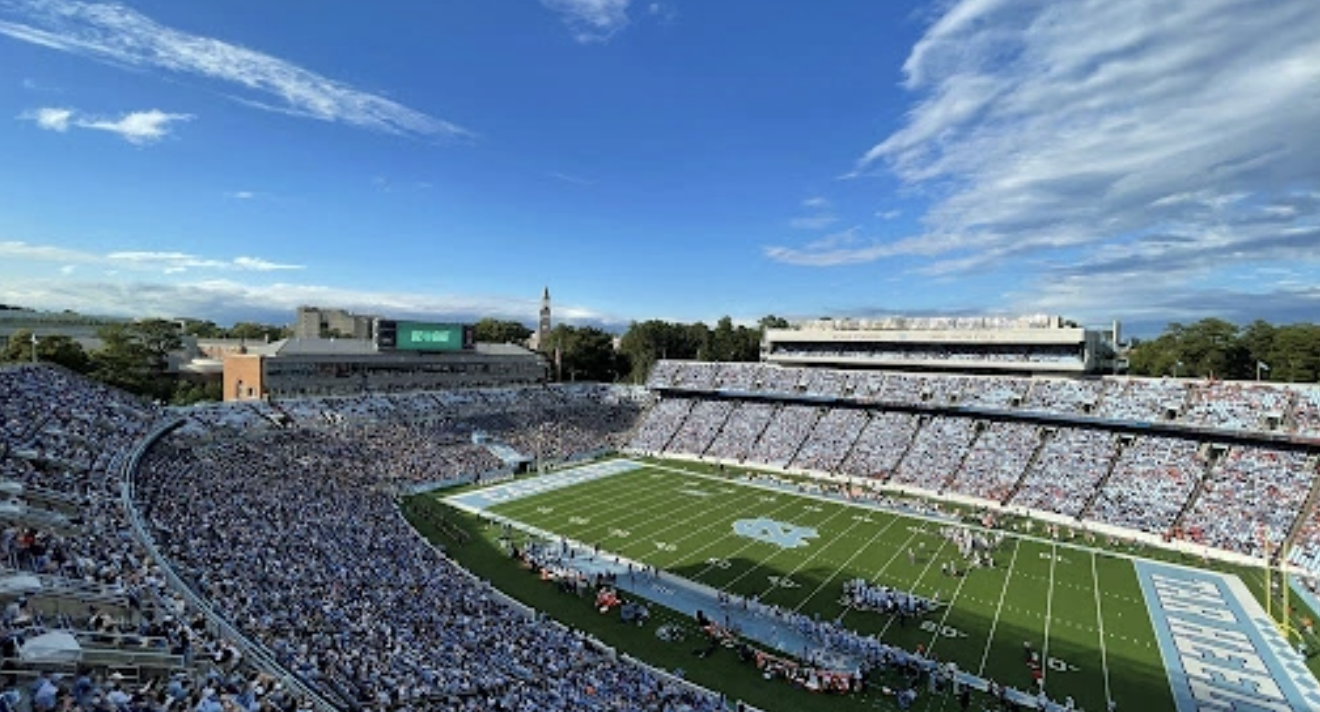
Photo Courtesy Go Heels Photo Gallery
Kenan Memorial Stadium (University of North Carolina Tar Heels): In 2016, the University of North Carolina (UNC) launched its Three Zero Environmental Initiative. The goal was to reach Net Zero Water, Zero Waste to Landfills, and Zero Greenhouse Gases by 2050.
The first step to achieving this was replacing the aluminum benches with stadium seats; the athletic department did it in the most environmentally way possible. Over 200,000 pounds of metal were sold to a recycling company. It was a “net-zero cost, green project.”
Before this, UNC began recycling programs at sports events back in 2003. Cardboard, plastic cups, and bottles were the main targets. In 2013, a sponsorship with Coke led to bottle-shaped bins being placed around Kenan. It’s part of the Rameses Recycles program directed by the school. The stadium was averaging about 2 tons of recyclables by 2018.
A year later, the program changed a bit, and fans couldn’t use plastic bags for recycling disposal. Thus, many carried their bottles and cans out of the stadium. There are water filling stations to cut back on bottled water sales. Paper products are sourced from recycled content. UNC has participated in the EPA’s GameDay Challenge since 2010.
The Tar Heels were honored by the Carolina Recycling Association for their efforts in 2011. In 2015, the school partnered with Unifi for a green football game where school merchandise was made from recycled water bottles.
Water conservation efforts also began in 2003. Working with the Orange Water and Sewer Authority, a system was created to reclaim water in Kenan that could be used in toilets and field irrigation. It saves up to 10 million gallons of water a year. Cisterns under the parking lot capture rainwater, up to 700,00 gallons. Low-flow water fixtures were also added.
In 2019, artificial turf replaced natural grass to save even more water. LED lights have been added to the stadium’s lighting fixtures.
Nebraska
The Corn Huskers are the mascot for the University of Nebraska, probably the biggest sports outlet in the whole state. Being a blue-blood college football program, Nebraska has been entering the modern era — slowly but surely. Here’s how they’re doing with stadium efficiency.
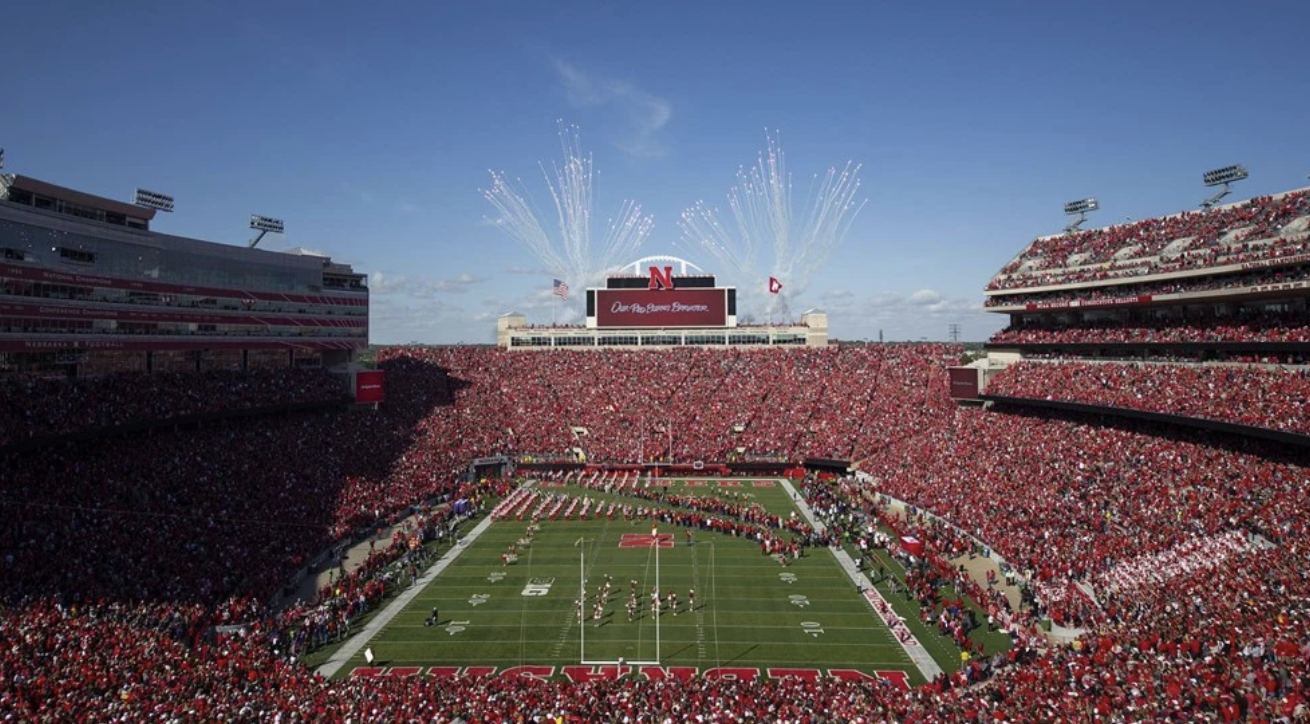
Photo Courtesy Memorial Stadium
Memorial Stadium (University of Nebraska Corn Huskers): University of Nebraksa-Lincoln’s (UNL) Memorial Stadium is a hallow college football ground. The venue has gone through significant sustainable revitalization.
In 2009, the athletic department added several recycling initiatives. Teaming up with Recycling Enterprises, waste was separated before being sent to the proper facility, and RE will donate revenue back to organizers. The Go Green for Big Red program continued the recycling efforts, where volunteers would pass out recycling bags to tailgaters before kickoff.
In 2011, Nebraska joined the EPA’s Game Day Challenge, placing second in the Big Ten conference rankings for waste diversion. By 2013, the Corn Huskers posted a 70% diversion rate. Compostable paper products helped reach this achievement. In addition, bike racks were added to the stadium to promote clean transportation.
The football team’s balloon entrance is said to use 100% biodegradable balloons. However, it ended in 2021 after more environmental concerns were cited.
Gamedays can be the biggest waste generators, so special attention is paid to gameday recycling. Stadium furniture was repurposed instead of thrown away. The lighting in the stadium was replaced with LEDs, and water sprinklers were upgraded.
In 2018, the lighting system got a massive upgrade after two decades. It operates much cooler and more efficiently than the first system. These sustainability initiatives have saved a million pounds of air pollution, 2.8 million kWh of electricity, and a 59% overall waste diversion rate.
New Hampshire
A state known for its ski hills, New Hampshire is also a big place for college sports. The programs aren’t the biggest, but they are respectable. The MiLB flourishes as well. The natural beauty of New Hampshire is enough motivation to run stadiums with eco-friendly operations.
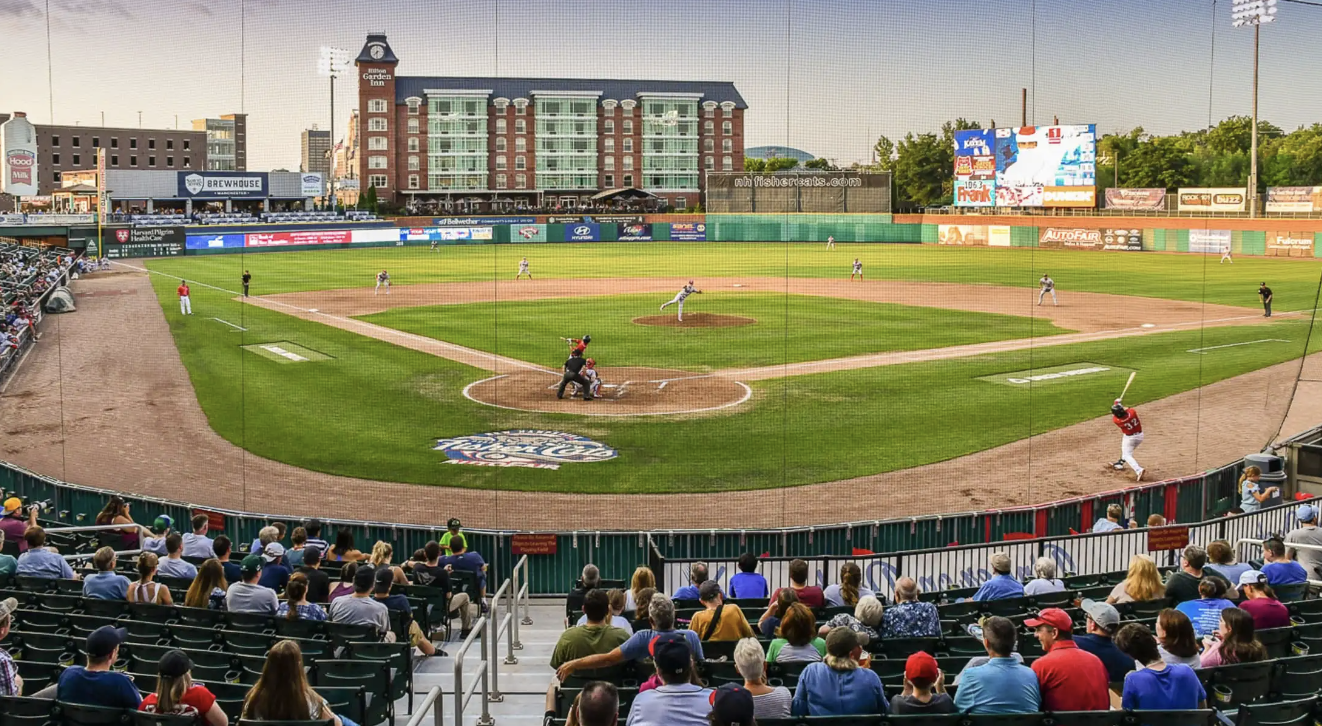
Photo Courtesy MLB
Delta Dental Stadium (New Hampshire Fisher Cats): Delta Dental Stadium is home to the New Hampshire Fisher Cats. The ballpark is the first organic playing field in professional baseball. No synthetic fertilizers or pesticides are used in the field maintenance.
The team has been conducting a “back to nature” campaign since 2018. Organization executives saw the benefits of an organic field compared to artificial turf. Fewer pesticides were perfect for keeping players and fans healthy. The Fisher Cats even invited youth players to have a catch on the field.
It wasn’t easy switching to an all-organic field. Soil tests had been done to analyze whether the land was strong enough to be self-sustaining. The ball club hoped this would inspire other teams to switch to a more climate-friendly turf.
The yogurt company Stonyfield sponsored many construction costs, especially when the benefits were presented. The new field saves 25% in materials and 50% in water usage.
In addition to an organic field, the Fisher Cats have done sustainable campaigns like handing out merchandise made from recycled water bottles. The team holds a Thanksgiving 5K yearly, raising more than $1.8 million in charity. Since the ballpark is named after a dental insurance company, the team sponsors an oral health challenge for kids.
New York
New York City is home to some of the most famous sports franchises in the world. The Yankees have serious clout across the country and beyond. The Giants and Jets have loyal followings, as do the Knicks, Rangers, Mets, and Islanders, and upstate the Bills and Sabres have the attention of Buffalo residents. Sustainability is seen as crucial in a massive metropolitan area.
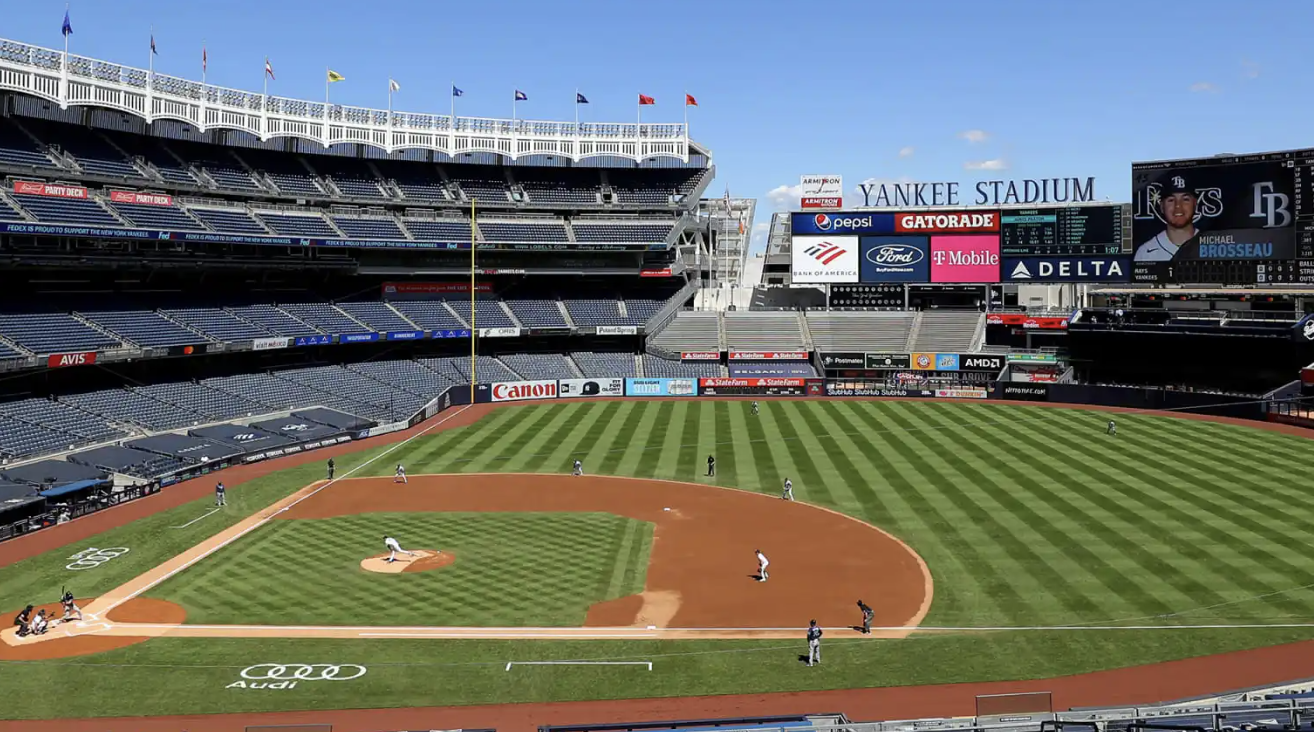
Photo Courtesy MLB
Yankee Stadium (New York Yankees): The most decorated baseball team in history, the Yankees have 27 World Series titles and 40 American League pennants. A storied franchise like this has ushered in modern stadium operations without any qualms.
In 2019, the Yankees pledged to run Yankee Stadium as eco-friendly as possible. The team hired environmental scientist Dr. Allen Hershkowitz to oversee this transformation.
When the current Yankee Stadium opened in 2009, the Great Hall architecture stood out for its eco-friendly properties. The high arches allow for natural air circulation, meaning less reliance on A/C for cooling in summer.
Air filters were installed, and in 2020, the ball club was recognized for its efforts by the International WELL Building Institute. There’s also a sophisticated energy management system in the ballpark. The team upgraded its lighting fixtures in 2016 to LED for efficiency, only the second MLB team to do so. Field lighting efficiency was up 40% and 50% brighter.
Water fixtures were also upgraded to save more water — up to 3 million gallons annually. These actions caught the attention of the New York State Department for Environmental Conservation, and the agency honored the Yankees in 2016.
When the Yankee Stadium’s third edition was being built, construction waste was diverted from landfills, and much of the material was reused or recycled. Construction vehicles used low sulfur fuel. A subway station is a few blocks from the entrance, promoting public transportation.
By 2012, biodegradable cups and a composting program reduced landfill waste by 40%. In 2014, 250 new trash bins helped waste disposal greatly. Concessions also only use compostable cutlery, packaging, and serving trays to help reach zero waste.
All uneaten food is donated to Rock and Wrap It Up, a local nonprofit, and more than 20,000 gallons of cooking oil are donated to biodiesel producers. In 2022, compostable drinking straws entered the fray. All these actions have made Yankee Stadium a very green ballpark.
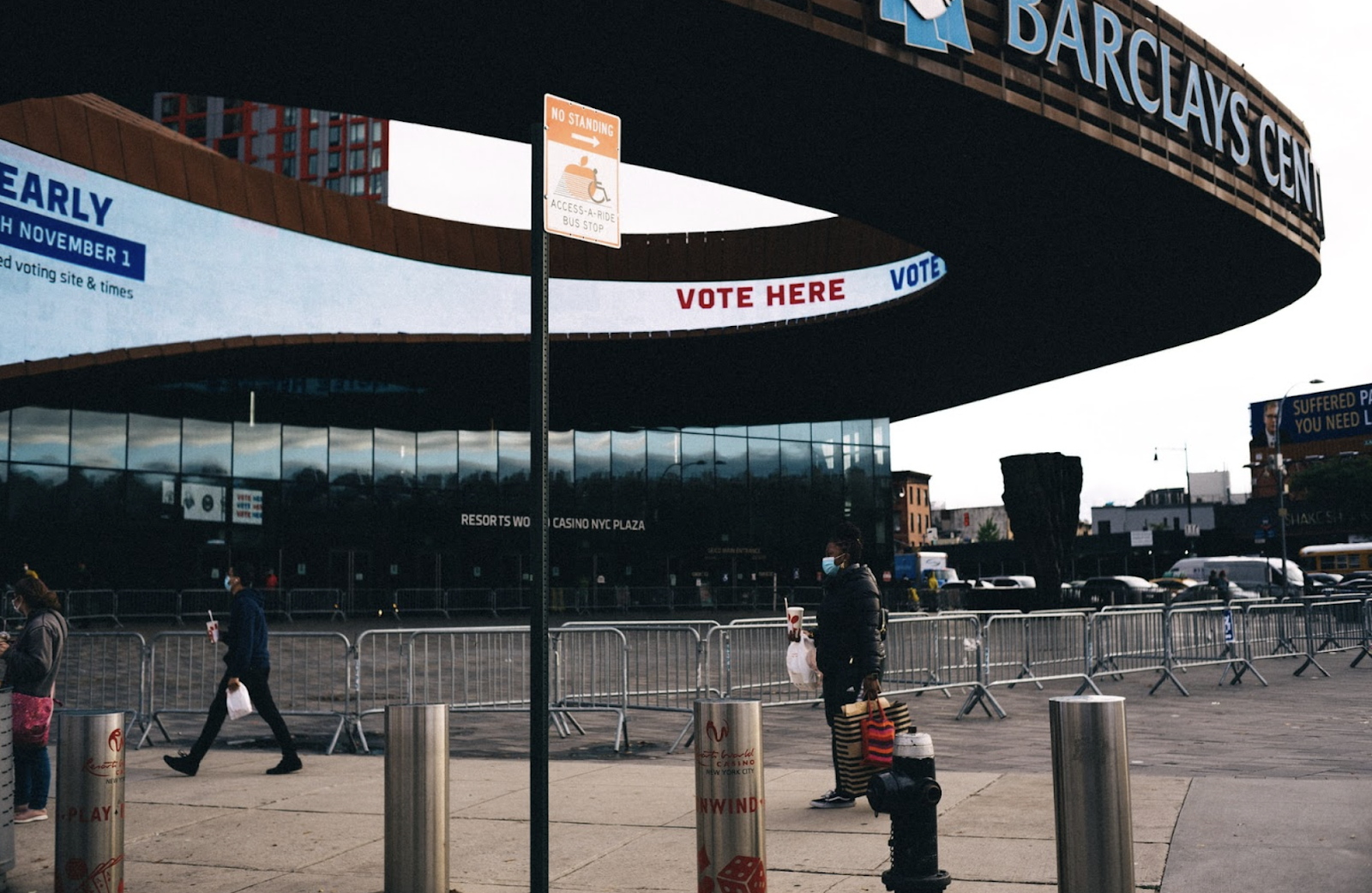
Photo Courtesy Matthew LeJune
Barclay’s Center (Brooklyn Nets): After many relocations that took them to New Jersey, New York, back to Jersey, and back to New York once again, the Brooklyn Nets settled into their permanent home back in 2012. The Barclay’s Center has been home to the Nets for 11 seasons and was the home of the New York Islanders for two. It cost around $1 billion to build, but it was done in a green fashion.
A year after opening, Barclay’s earned LEED Silver status, the first New York City-area sports complex to do so. The area was built with sustainable construction materials and methods, including 90% wood certified by the Forest Stewardship Council. Carbon emissions from construction were reduced, and 85% of construction waste was diverted from landfills.
A new HVAC system, LED lighting, and a thermal envelope cut back on energy costs. Low-flow plumbing fixtures saved around 50% more potable water than previous models. In 2016, a green roof opened, the most distinct eco-friendly feature of the venue. It lowers the heat island effect and decreases stormwater runoff by 2 million gallons.
A partnership with Recycling Track Systems in 2017 made recycling efforts better. It helped sort through cardboard, metal, glass, plastic, e-waste, and LED lighting. Old furniture and carpeting were repurposed as well. More than 1,000 tons of waste were diverted from landfills.
Uneaten concession food is given to arena staff. Some of it goes into an ORCA food digester to process food waste into a liquid used in compost. Further, electricity savings came about when a new demand response system was introduced to power certain lights and cooling systems throughout the day.
In addition, Barclay’s does a lot of public outreach, running the B GREEN program to raise awareness of environmental issues. The Nets ran a tree-planting campaign around New York City. Food insecurity was significantly tackled, with more than 7,000 people fed thanks to a food pantry drive. Sustainable measures like this won Barclay’s Building of the Year award multiple times.
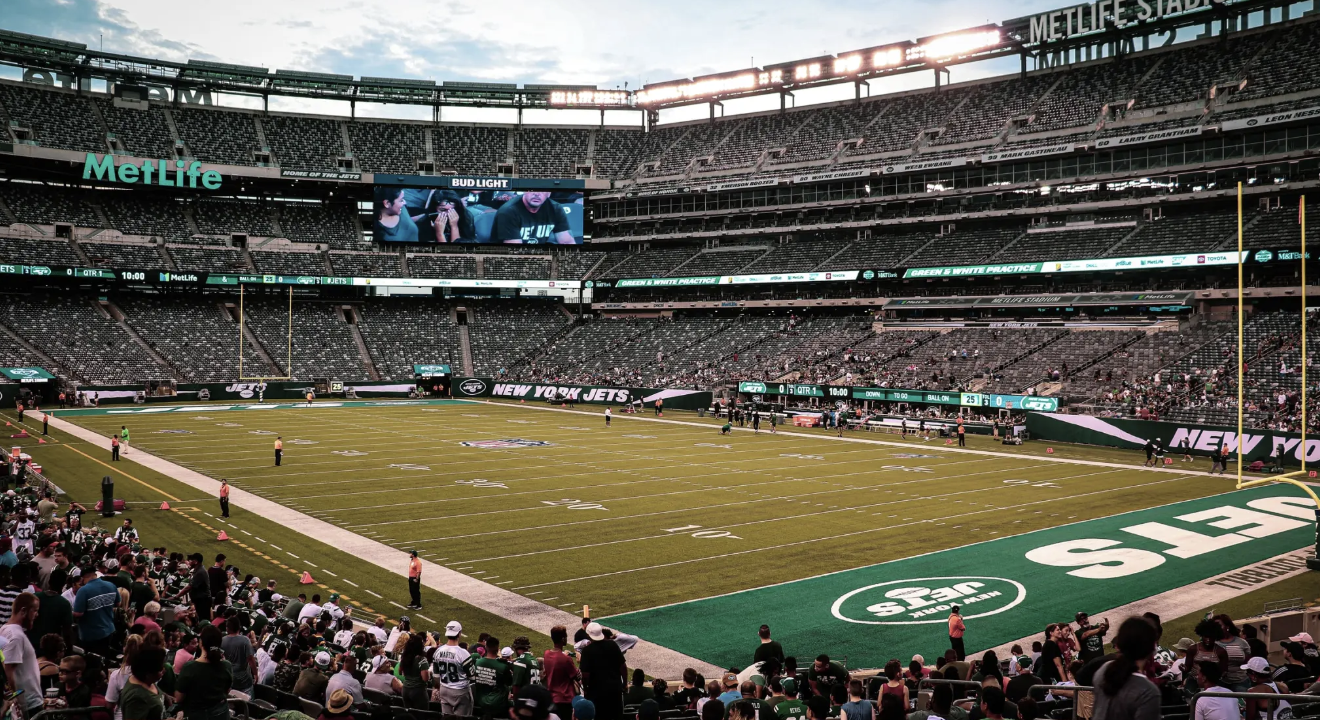
Photo Courtesy Izaac Crayton
MetLife Stadium (New York Jets/New York Giants): Although technically based in East Rutherford, NJ, MetLife Stadium is home to both the Jets and Giants franchises. Opening in 2010, a shared stadium has substantial environmental benefits. An agreement was signed with the EPA to make MetLife more sustainable than its predecessor, Giants Stadium.
The first step was building the venue on rehabilitated land. Clean diesel and low-sulfur fuels were used in construction. Recycled materials were also used — 40,000 tons of recycled steel, half coming from Giants Stadium, and 100,000 tons of concrete were repurposed. Even the stadium seats are eco-friendly, made from 20% post-consumer plastics and 80% iron.
The old synthetic turf was recycled and used again in new turf. A turf field also saves around 3.5 million gallons of water annually, thanks to no irrigation.
Even though it’s twice as big as Giants Stadium, MetLife uses 25% less water and 30% less electricity. It’s the largest NFL stadium in the country — measures like low-flow plumbing cut back on water use to achieve these percentages. Waterless urinals saved 2.7 million gallons of water alone. High-efficiency irrigation and native plants saved around 700,000 gallons.
For recycling, the Giants and Jets have many bins with guidelines on what can be recycled. Tailgaters got special recycling bags to clean up parking areas. By 2016, nearly 900 bales of aluminum and PET plastics, plus 500 tons of cardboard, were recycled.
The stadium’s food providers have hailed MetLife as one of the greenest restaurant experiences in New Jersey. The concessions only use compostable cutlery and plates. Leftover food is donated to local food banks, and cooking oil is refined into biodiesel. MetLife also has a composter on site, making removing food scraps easier. EnergyStar appliances are used in the kitchens, and a high-tech HVAC system saves even more electricity.
The stadium also has a Solar Ring lining the roof. It generates around 350kWh of solar power to run LED lights and meet the stadium’s daily demand. The teams promote taking the train to the game, with a train station nearby.
Ohio
Ohio is a massive state for sports. The dominance of Ohio State in college football, the emergence of teams like the University of Cincinnati, and the revival of the Cleveland Browns and Cincinnati Bengals are establishing Ohio as one of the biggest football hubs in the country. Don’t forget about the Cleveland Guardians and Columbus Blue Jackets, too.
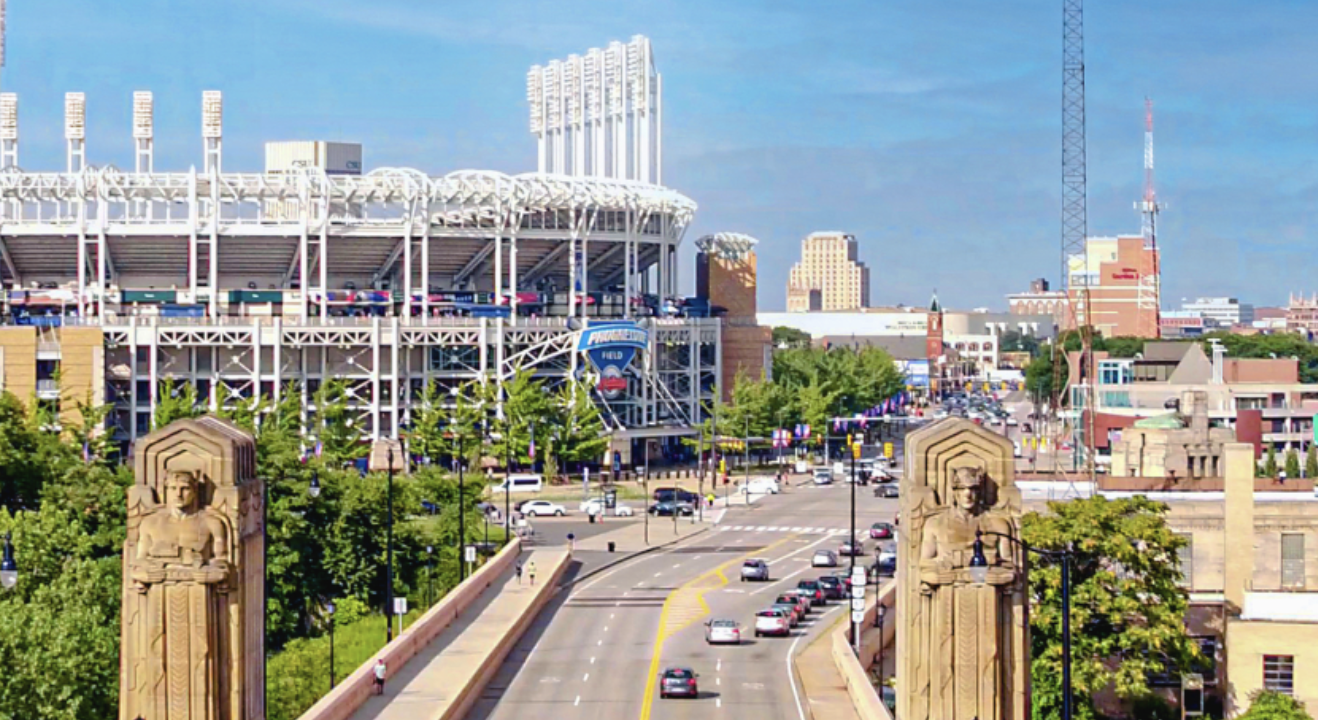
Photo Courtesy MLB
Progressive Field (Cleveland Guardians): Home to the MLB’s Cleveland Guardians, Progressive Field is named after the insurance provider, but it’s a fitting name for the ballpark. It’s been a very sustainable stadium for more than three decades.
In 1994, when it opened as Jacobs Field, recycling bins for plastic, cardboard, and aluminum were put out. Fast forward to 2007, the Guardians were one of the first teams to install solar panels onsite. That cut down on electricity use significantly, creating 8.4kW of clean power.
In 2008, the lighting was replaced with LEDs to lower CO2 emissions and energy costs. There was a small-scale wind turbine at Progressive Field, a project done with Cleveland State University students and faculty, but it was damaged and taken down in 2013.
The recycling operations are highly efficient, moving to an onsite separating process, which led to less contamination and better recyclables. A picked crew goes through trash to separate composting items and recyclables from landfill waste. These initiatives bumped landfill diversion by 22% by 2011.
The ball club has been involved in multiple sustainable initiatives. When they were the Indians, the Guardians started the “Our Tribe Is Green…Are You in the Tribe?” program in 2008 to get fans involved in sustainability. They hosted a Green Awareness Day in 2010, the first MLB team to do so. A National Recycling Day event took place in 2011.
The players’ locker rooms have composting and recycling bins inside them to promote team participation. The Guardians also have a food composter called Grind2Energy that turns food scraps into a liquid. It’s dumped into a digester and made into fertilizer and renewable energy.
Other leftover food is donated to local food banks. In 2018, 11,480 tons of food were donated, while 85 tons were diverted from landfills. The LED lights were upgraded before the 2017 season to lower electrical consumption by 50% and are 20–30% brighter. Another solar array was added behind the home plate in 2019.
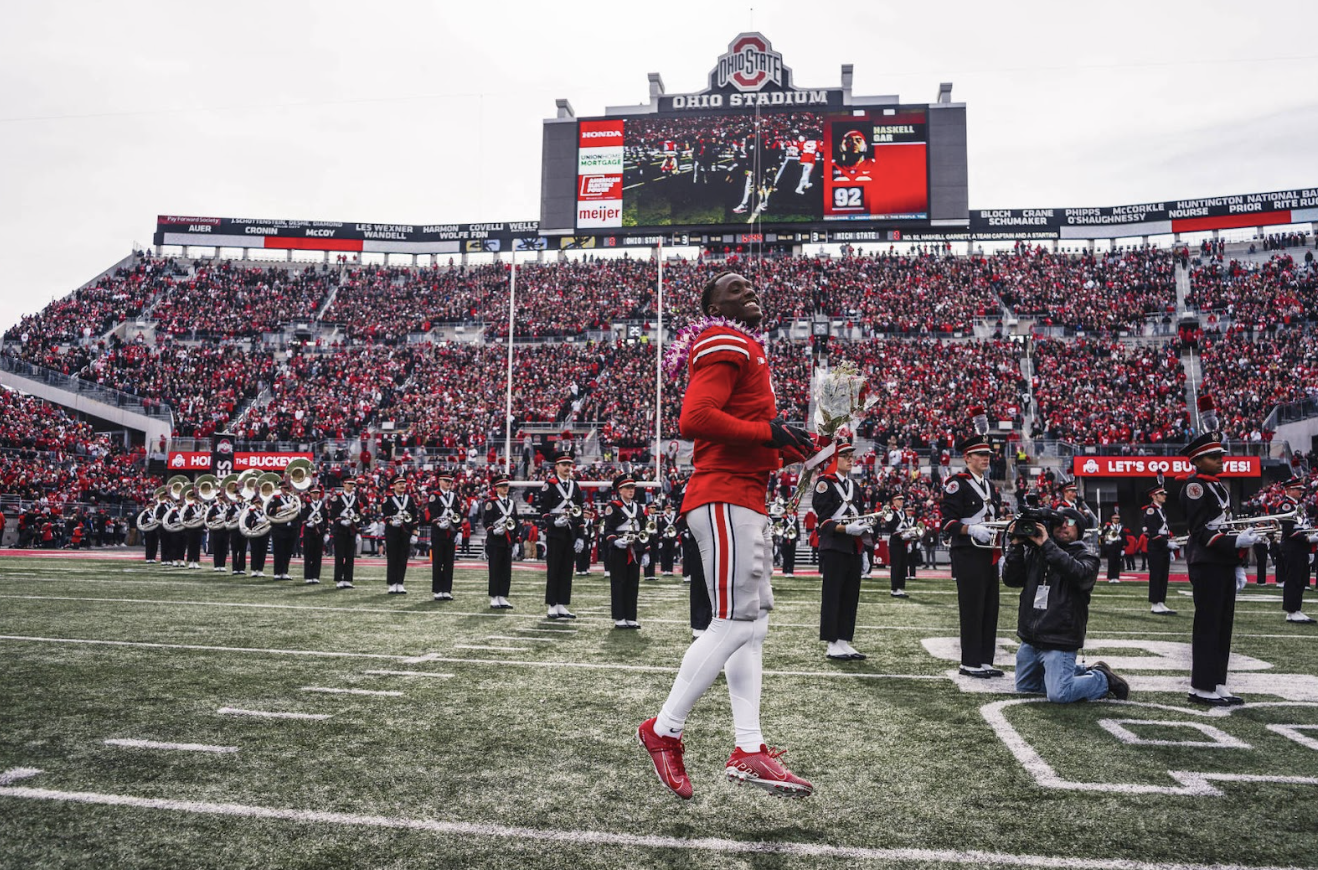
Photo Courtesy Ohio State Buckeyes News
Ohio Stadium (Ohio State University Buckeyes): With more than $200 million spent on athletics, Ohio State University (OSU) doesn’t mess around when it comes to its sports. The most successful is surely the football program, which won eight national championships. They play out of the massive Ohio Stadium, also called the Horseshoe.
In terms of eco-friendly measures, OSU’s stadium has plenty of them. In 2006, the university sustainability plan began, and in 2007, the stadium recycling program started. A comprehensive sustainability plan was developed in 2011, with the athletic department posting a 75% diversion rate in just the first year. By 2012, it was 87% and even reached 98.2% at one football game.
The Natural Resources Defense Council said the stadium’s recycling and composting has been a great model for other zero-waste initiatives on OSU’s campus. During the 2012 EPA GameDay Challenge, the Buckeyes topped the rankings for the country and, from 2011 to 2019, were first in the Big 10 Conference with a 92% diversion average.
After a multi-year renovation, Ohio Stadium was certified LEED Gold status by the USGBC. More energy-efficient light fixtures, indoor heating systems, water-saving appliances, and low-emission paints have made the stadium greener.
When it comes to philanthropy, the Buckeyes are also very involved in the Columbus community. The Athletic Department’s “I Am Change Outreach” campaign was a mentor program for local teens aged 15–19.
These members would become youth ambassadors of the Zero Waste Team.
The team comprised volunteers from OSU and the outreach programs, sorting trash to separate recyclables and compost materials. Fan engagement is a big part of the recycling program, so volunteers give out recycling bags to tailgaters. The football wears a leaf sticker on the helmets, a token to the Leadership of Environmental Athletes for Sustainability (LEAF).
Oklahoma
The sports scene in Oklahoma is not massive, but there are a few notable teams. The University of Oklahoma has been running the show in college football as of late, and Oklahoma State University has a respectable football program, too. The Oklahoma City Thunder are the only major sports team in the state, but there are a few minor league teams.
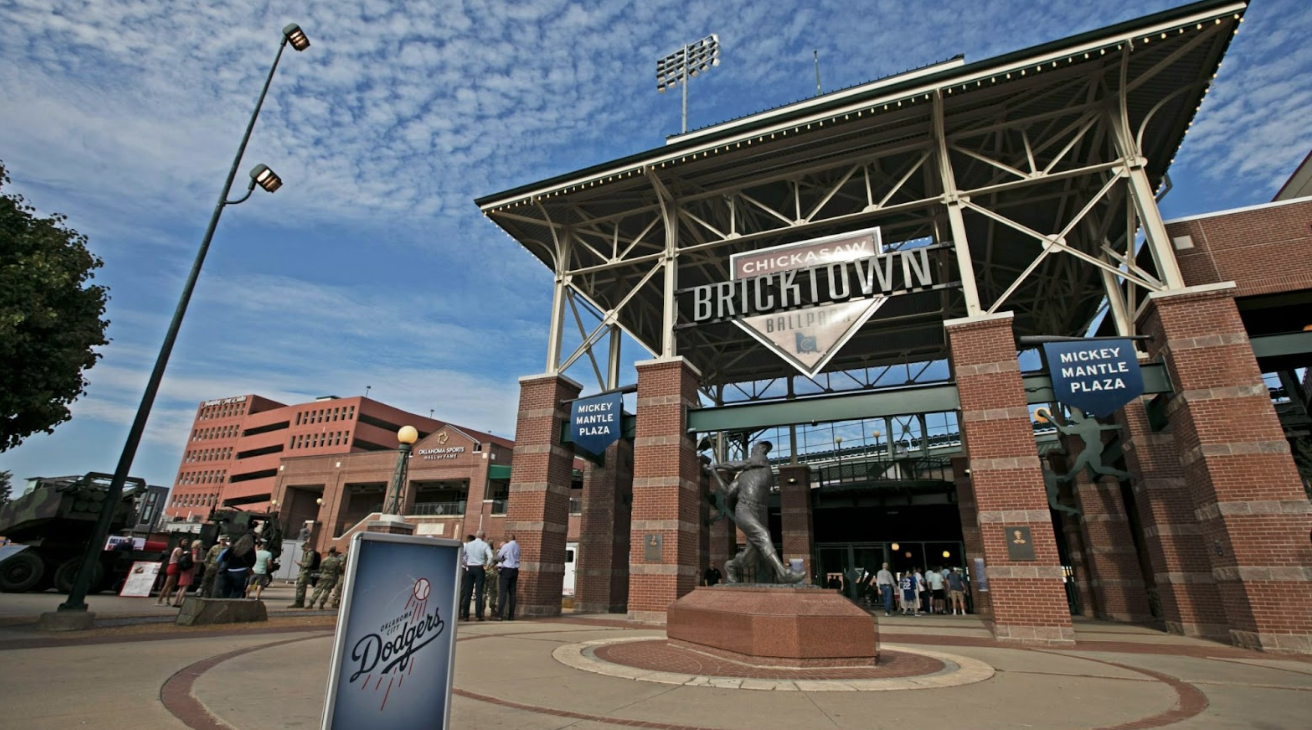
Photo Courtesy MLB
Chickasaw Bricktown Ballpark (Oklahoma City Dodgers): The Triple-A affiliate of the Los Angeles Dodgers, the Oklahoma City Dodgers have built a sense of community in the city. The team has a 90% season ticket retention rate.
Through the OKA Dodgers Baseball Foundation, the team has donated thousands of dollars to schools, churches, and libraries. It throws a fundraiser 50/50 raffle, with the jackpot being split between fans and the team, bringing in $100,000 in 2019. The OKC Dodgers Rookie League worked with local youths and parks to teach baseball and provide merchandise and equipment.
The Foundation also supports coat drives and reading campaigns for kids. There is Community Night Out, where people who can’t afford tickets are distributed through local nonprofits for families. The team and Oklahoma Fidelity Bank also donate $100 to the Our Neighborhood Empowered nonprofit for every home run hit. It’s part of the Home Run For Charity program.
In 2022, the Cielo Zul de Oklahoma City program celebrated Hispanic and Latino culture and traditions over nine games. Pack the Park Night promoted breast cancer awareness with Susan G. Komen for the Cure. Military members were honored on Heroes Military Celebration Night.
In 2015, Chickasaw Bricktown Ballpark joined the PepsiCo Recycling Program, with recycling bins put around the venue. The program supports watershed protection and Entrepreneurship Bootcamp for Veterans.
In 2018 and 2019, Chickasaw Bricktown underwent substantial renovations, with more green devices installed. Drought-tolerant sod was added to the field, and old dirt was sold for charity. The upgraded space has better rainwater capture qualities, with tanks buried underneath the ground, saving 1.9 million gallons of water yearly.
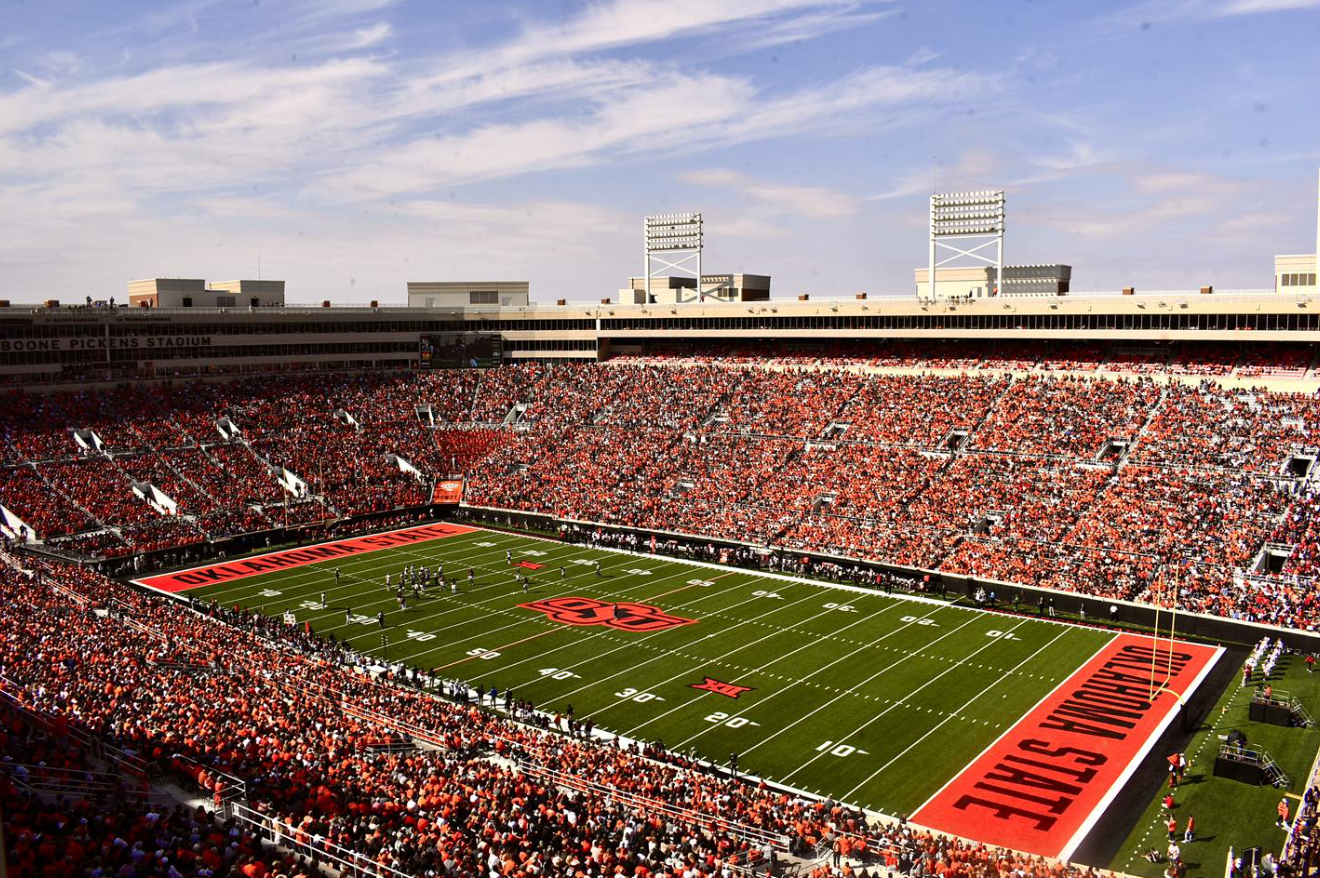
Photo Courtesy Oklahoma State University
T. Boone Pickens Stadium (Oklahoma State University Cowboys): After being peppered by extreme weather, including tornadoes, T. Boone Pickens Stadium decided to become more sustainable in case of worse scenarios.
The playing field has an AirField System made with 100% recycled synthetic drainage. It can capture 171 inches of stormwater to be stored and reused and never has to be retooled whenever the playing field needs to be replaced.
In 2005, the venue was one of two to install Desso Sport System’s Football Pro Artificial Grass Surface. In 2014, OSU switched to AstroTurf 3D, which has high-fiber density, light infill, and narrow gauge between fiber rows. In 2022, the field switched to another artificial turf, along with upgrades to areas at practice complexes. The new field has smart field technology built in.
The activity in Pickens Stadium is monitored, and insights about the playing field are made based on algorithms and data points. Known as FieldTurf, it is one of the leading sustainable turf companies. It’s the first artificial turf producer to offer a carbon offset program to customers. One of the operating plants runs on 100% renewable energy.
Off the field, the Cowboys have many green initiatives. In 2007, the Real Cowboys Recycle program started, where student-led programs canvassed tailgating areas to encourage proper recycling. Aluminum cans were donated to Habitat for Humanity’s Can for Humanity. More than 170,000 aluminum cans have been recycled through the first four seasons it was enacted.
Oregon
The Pacific Northwest is known for its wet climate, making outdoor sports a moist experience, to say the least. Oregon is no different, and its woodland topography is a big help in the fight against climate change. It’s a reason why many Oregon sports teams are named after state symbols — Portland Timbers of the MLS and Portland Trailblazers of the NBA.
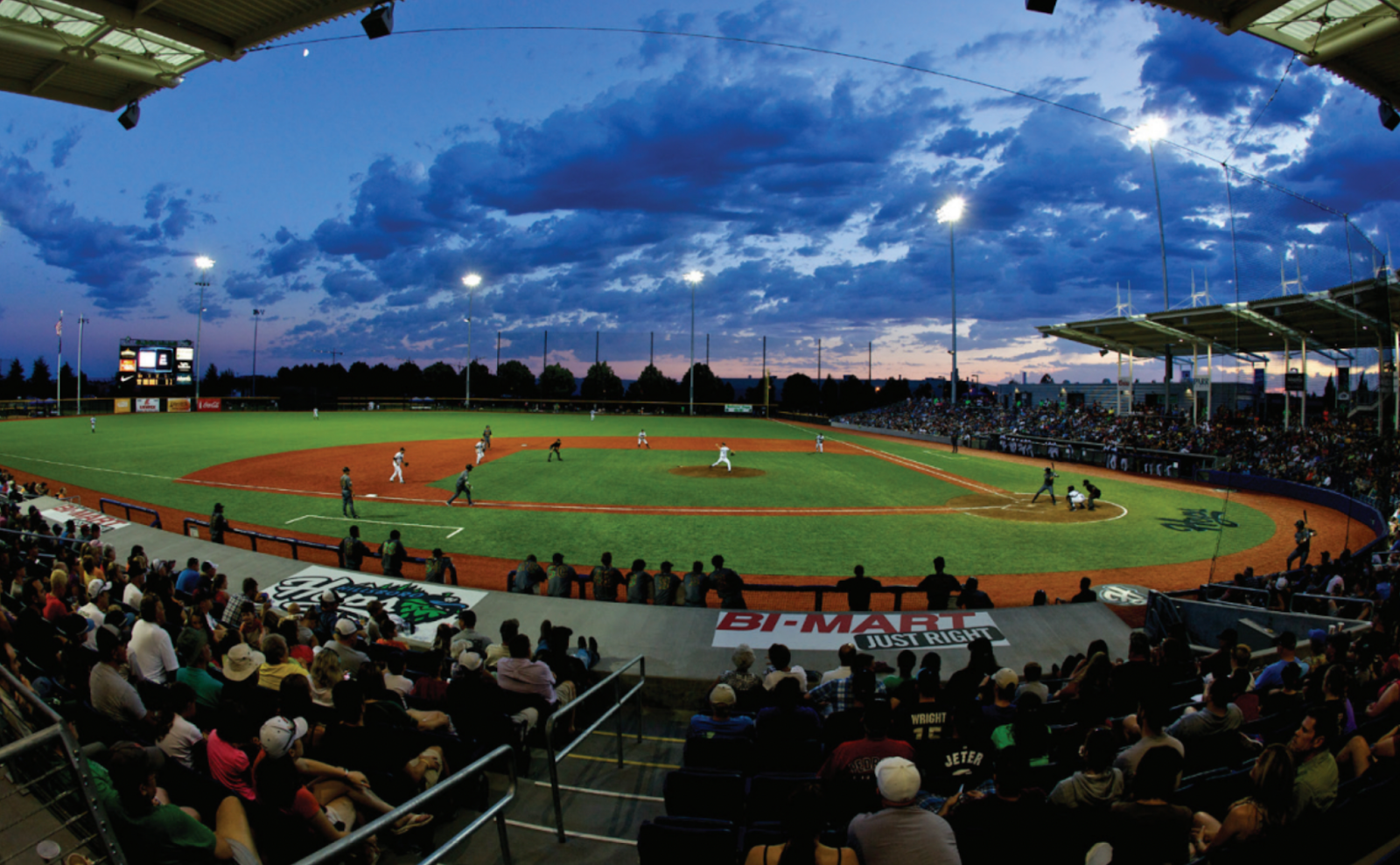
Photo Courtesy Hillsboro-Oregon
Ron Tonkin Field (Hillsboro Hops): After the MiLB left Portland in 2010, Hillsboro, OR, emerged as the next hottest location for professional baseball to return to the area. A softball field at Gordon Faber Recreation Complex was transformed into a ballpark.
Construction began in 2012, with sustainable measures such as recycling 57 tons of debris and sending 75 tons of masonry to be crushed into the structural filler. Ron Tonkin Field is home to the Hillsboro Hops, the Single-A affiliate of the Arizona Diamondbacks.
There are bins of composting, recycling, and landfill waste. Fans are encouraged to bring their water bottles to be refilled inside the concourse. Low-flow plumbing conserves water in the bathrooms, team locker rooms, and kitchens. The outfield is made from artificial turf to save even more water. The local community uses the field for games, charity events, and activities.
A shuttle service picks up fans at a nearby train station, reducing traffic on game days. ScienceTrends.com hails the Hops for successfully implementing ample sustainability measures. It coincides with the city of Hillsboro’s environmental impact plan, Hillsboro 2035. The city is the first in the U.S. to install an In-PRVTM renewable energy system.
Smart water micro-hydro processes excess pressure in the sewer system, which powers the stadium. It can create 200,000 kWh of electricity and is used in lights, concessions, and EV charging stations.
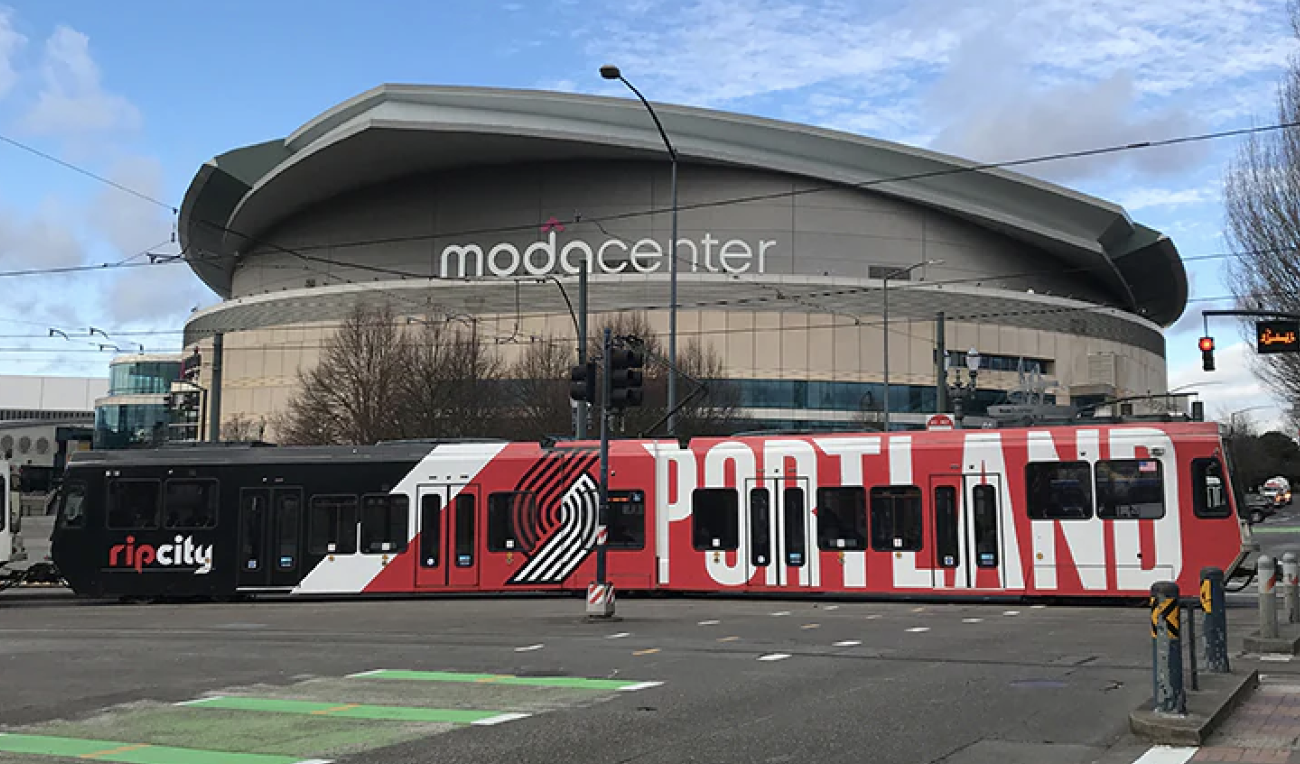
Photo Courtesy Portland Trail Blazers Media
Moda Center (Portland Trail Blazers): Moda Center earned Gold LEED Status in 2010, the first sports venue to reach such a milestone. In 2019, the arena earned Platinum status. The Trail Blazers were co-founders of the Green Sports Alliance in 2011, having its first Zero Waste Game in 2017. The team diverted over 87% of its waste from that year, with 1.5 million tons diverted annually.
GreenDrop Recycling Stations were placed around Moda Center. After every game, the Trail Blazers’ Environmental Services team sorts through garbage to separate recyclables from landfill waste. Concessions use compostable cutlery and cups that get turned into soil, along with food waste.
All toilet paper and other paper products are made from 100% recycled paper. The team upcycles old uniforms into pillows, fanny packs, neckties, and backpacks, all sold at the venue store. It’s also the first team to sell compostable thundersticks. Uneaten food is donated to families in the Portland area — 5,000–8,000 pounds. Almost half of the stadium food is provided by vendors within a 100-mile radius. There’s even a sustainable menu with eco-friendly options.
Low-flow water fixtures reduce water consumption, and drought-resistant landscaping and smart irrigation systems were added to the arena. The annual water conservation rate increased by 40%, close to 3.5 million gallons yearly.
The Trail Blazers help out the Portland community in many ways. In 2017, the team restored 1.7 million gallons to Oregon rivers and streams through its Change the Course Texting campaign. Around 30 miles of waterways have seen 500,000 gallons of water returned through water offsets. About 800,000 trees were planted around the state to help with water quality and habitat improvement. The Trail Blazers Threes for Trees campaign plants trees for every three-pointer made during the NBA season; in 2020–21 alone, 2,700 trees were planted.
Moda Center has decreased its carbon footprint by 25% each year since 2008. That’s thanks to highly efficient HVAC systems, LED lighting, and other appliances. It also purchases renewable energy credits to match 100% of the arena’s electricity use. A partnership with Energy Trust of Oregon has helped cut emissions equivalent to 7.2 million cars driving. It also offsets natural gas emissions with a tree-planting program in Africa.
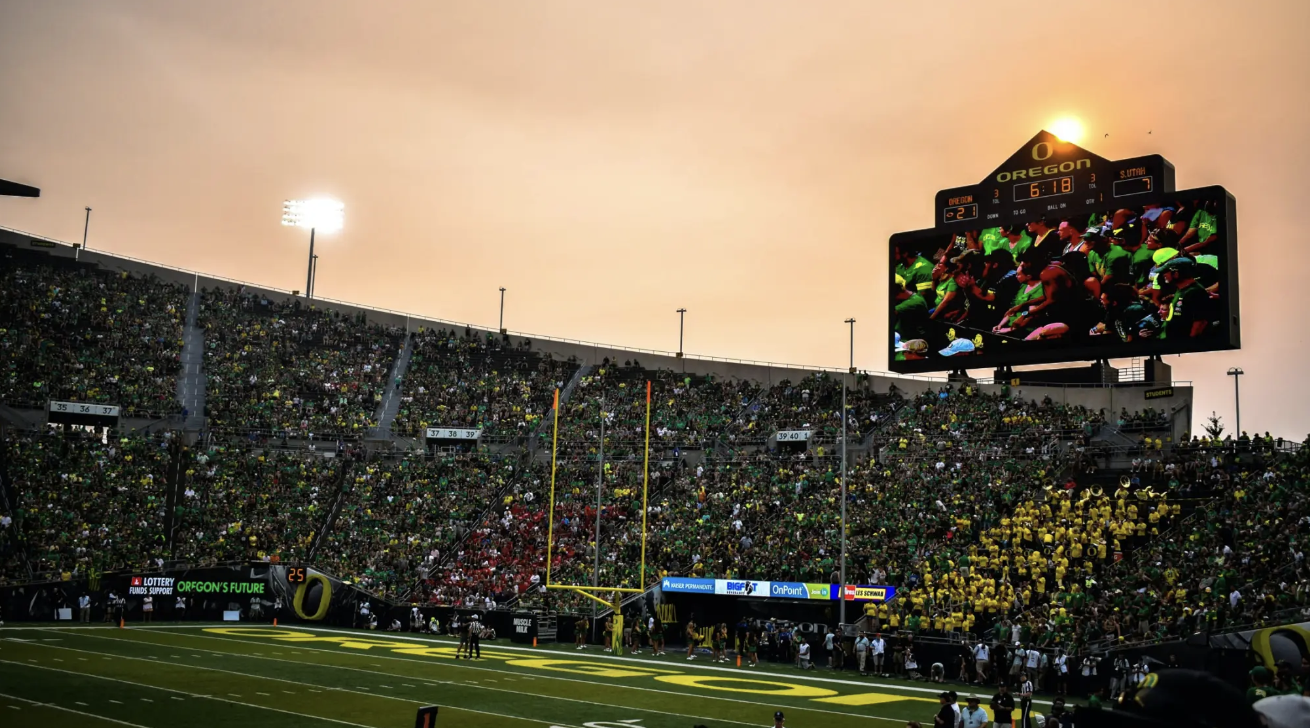
Photo Courtesy Jake Weirick
Autzen Stadium and Hayward Field (University of Oregon Ducks): The University of Oregon has been run sustainably for a few decades. The Athletic Department has played a hefty role in the sustainability programs. In 2010, the athletic department formed a sustainability committee, and Oregon was one of the first college sports programs to join the Green Sports Alliance in 2012.
In the 90s, Oregon ran a food drive with unsold concession food and collected donated canned food. The football stadium, Autzen Stadium, has recycled paper, cardboard, and beverage containers since 2004. In 2011, a three-bin collection system was posted in the stadium to raise awareness about recycling, composting, and landfill waste. Tailgaters were given recycling bags for aluminum, glass, and plastic recyclables, and the three-bin system was posted around the tailgating area. By 2012, waste diversion was up from 19% to 48%.
Cooking oil from concessions is made in biodiesel and used as a low-carbon fuel. All cutlery and plates are compostable. In 2018, excess athletic uniforms were upcycled into fan gear.
The 2015 annual rivalry game between the Ducks and Oregon State was the first college football game to receive a gold certification from the Council of Responsible Sports for its planning and communications, access and equity, resource management, and community legacy. The same honor is bestowed on Hayward Field, Oregon’s track & field complex.
In 2008, trials were run at Hayward, which promoted the complex to earn the International Olympic Committee’s Spot and Environment Award. It then received gold certification from the Council of Responsible Sports. An integrated energy plan decreased the need for mobile generators, meaning less energy consumed.
Recycling cans, paper products, and plastics reached a 68% waste diversion rate in 2008 and 78% in 2012. After the trials, 79% of plywood was reclaimed. There was a fun eco-awareness event called TrackTown Power Station, where fans generated battery power using a spin bike and, later, a human hamster wheel. The Matthew Knight Arena, Oregon’s basketball court, is a certified Gold LEED building thanks to its efficient water management, energy strategy, and building components.
Pennsylvania
Pennsylvania is home to two major sports towns, Philadelphia and Pittsburgh. The two cities have two very different sports cultures, both with a long history of success and located at opposite ends of the state. The Steelers and Penguins have delivered multiple championships to the Steel City. At the same time, the Eagles and Phillies have provided a few titles and many exciting moments to the City of Brotherly Love. The good news is both cities are shifting to sustainable stadium operations.
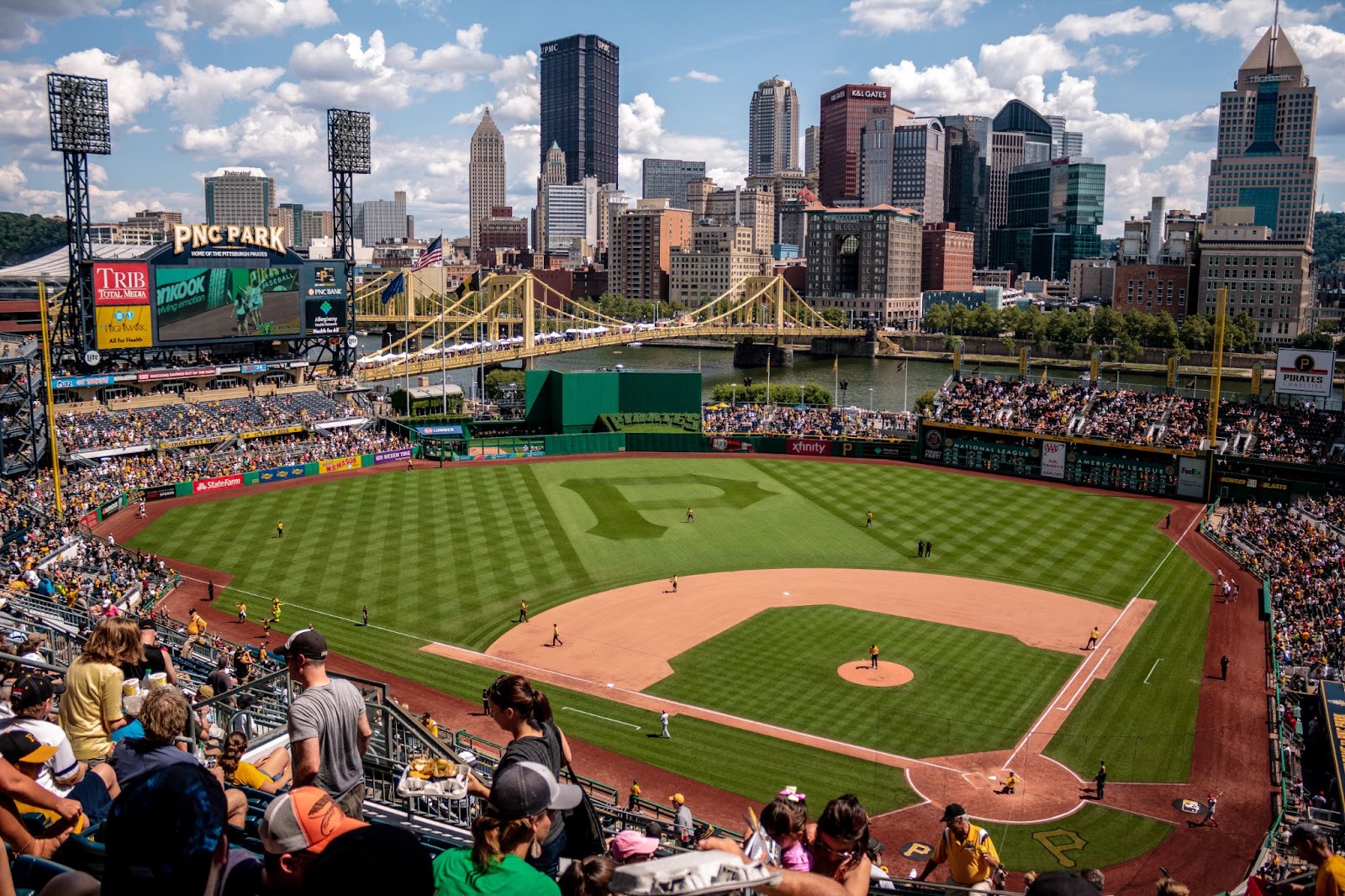
Photo Courtesy Joshua Peacock
PNC Park (Pittsburgh Pirates): In 2008, the Pirates started the “Let’s Go Bucs, Let’s Go Green” initiative to raise awareness about recycling, composting, energy efficiency, and educational outreach. Around 180 recycling bins were placed around PNC Park, and a Green Team sorts through trash to pick out recyclables after each game.
Concessions use biodegradable cups and cutlery, while the team recycles more paper in executive offices. Motion sensors were installed in lighting fixtures to reduce electricity consumption.
More than 7 million pounds of materials have been recycled since the program began. The Pirates have averaged more than 70% waste diversion since 2008. In 2020, that rate jumped to 75% and 80% in 2021. The MLB awarded the ball club the Green Glove for having the best diversion rate among NL Central division teams.
More than 8,000 pounds of food waste were composted since 2008. From 2019 to 2021, the Pirates donated nearly 19,000 meals to 412 Food Rescue, an anti-hunger nonprofit. More than 22,000 pounds of unprepared food was presented to the Greater Pittsburgh Community Food Bank. That saved a lot of GHG emissions.
In 2018, an urban garden opened at PNC Park, with more than 300 pounds of vegetables and greens grown. The soil is made from a compost mixture from stadium food waste, and collected rainwater acts as the main water source.
The ball club teamed with Pittsburgh energy provider Duquesne Light for a tree-planting campaign to give trees back to communities lacking them. These trees lessen the heat island effect and cool off neighborhoods. Pirates players have joined organizations like Players for the Planet and Project Green Schools.
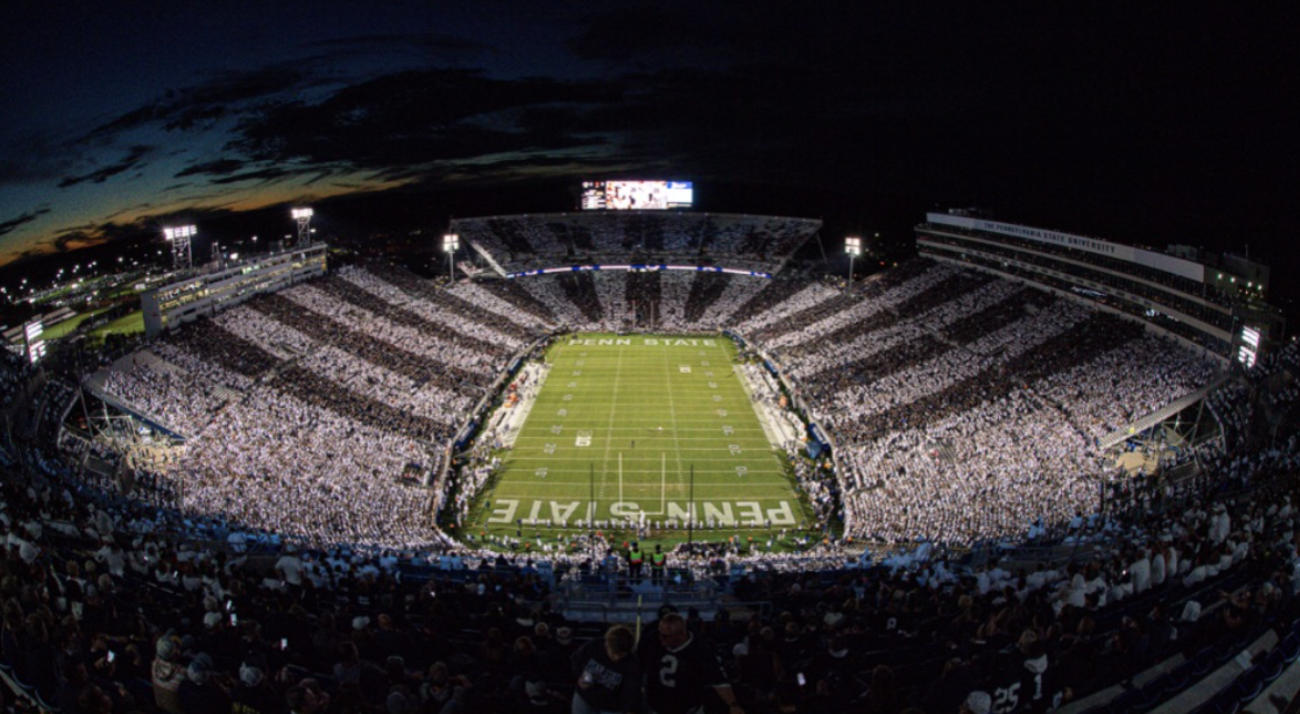
Photo Courtesy Penn State Football Photo Galleries
Beaver Stadium (Penn State University Nittany Lions): Known as Happy Valley, Beaver Stadium at Penn State has had a large recycling program since 1995. Almost 30 tons of waste was diverted in the program’s early years. Proceeds of recyclable sales went to the local United Way.
The 2000s saw a boost in recycling, with around 112 tons of waste recycled in 2008. Most recyclables come from tailgaters. The school asked if patrons would separate their trash and recycling. About 300 96-gallon carts are situated throughout the parking lots, along with 42 dumpsters. Blue carts are filled with up to 1.5 tons of recyclables every game.
More than 3,000 recycling bags and trash bags are available at the dumpsters, including 30 a-frame dispensing bags. The bags are recyclable as well. The improved recycling has resulted in 90% capture ratings, double the number of recyclables collected at the stadium. Switching to clear bags makes it easier to separate items, which is big when you factor in Penn State’s 3% or less solid waste contamination rate.
Student volunteers from EcoReps hand out blue bags at tailgates to promote green behavior amongst fans. Inside Beaver Stadium, cardboard, program booklets, food waste, glass, and beverage containers like cans and bottles are the main recycling sources. The recycling bins inside are notarized to ensure everyone understands what can and can’t be recycled.
In 2013, Prof. Judd Michael worked with Green Sports Alliance and NatureWorks to turn executive suites into a zero-waste showcase, introducing compostable cups and cutlery for concession. That same year, Penn State boasted a 100% waste diversion rate.
When ESPN’s College GameDay visited State College in 2019, Prof. Michael helped organize the student clean-up efforts, along with a food diversion program that sent uneaten food to local shelters. These efforts at the football stadium prompted more eco-friendly measures at the baseball stadium and hockey rink. That also included using less electricity.
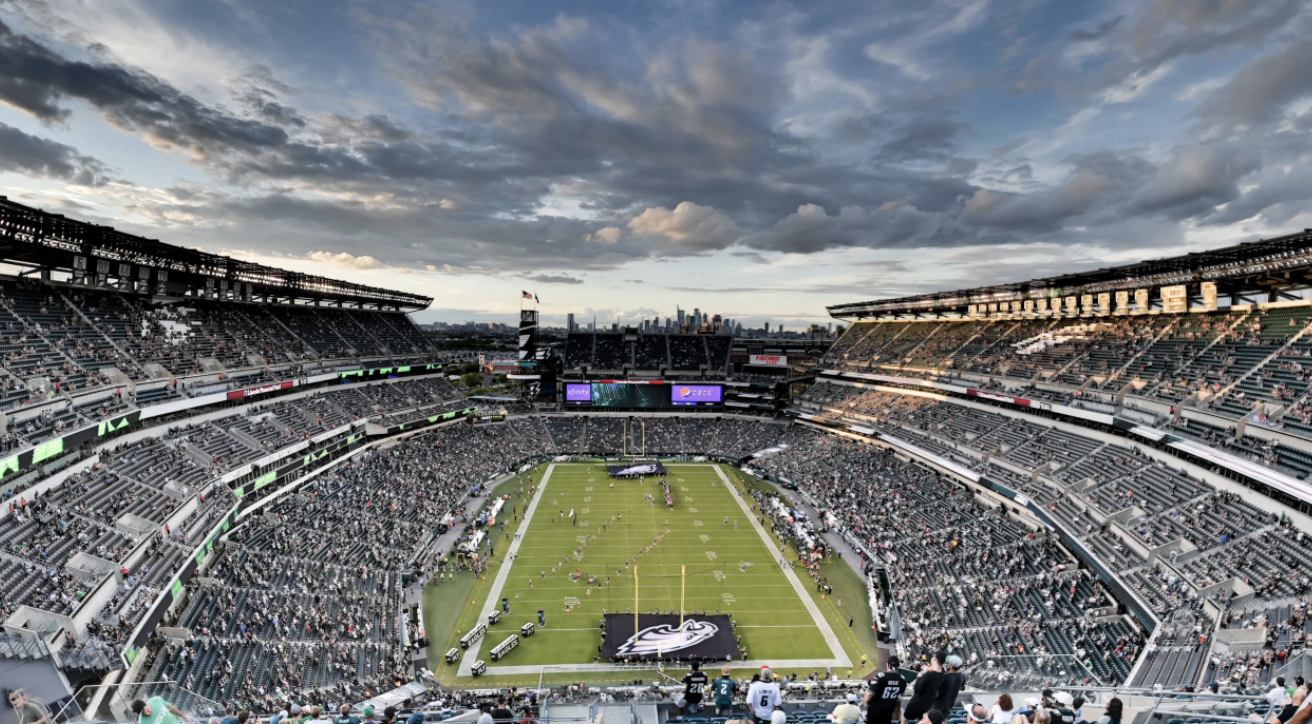
Photo Courtesy Philadelphia Eagles
Lincoln Financial Field (Philadelphia Eagles): Coming off their run to the Super Bowl in 2023 and the team’s first Super Bowl win in 2018, the Philadelphia Eagles are going “green” again. In June 2021, the Eagles were the first pro sports team to achieve ISO 20121 certification for successfully integrating sustainability practices.
In December 2021, the team earned Gold LEED certification, being upgraded from Silver. The Go Green program was launched when Lincoln Financial Field opened in 2003. Basic recycling has evolved into energy conservation, water conservation, and composting. The team has spent around $100 million on sustainability programs.
The stadium operates on 100% clean energy, diverting 99% of waste from landfills. After each game, 75 trash sorters collect waste and pluck out recyclables from garbage bags. Shrink wrap is saved and turned into drywall. A closed-loop recycling program repurposes everything from stadium seats to bread trays. An 8-foot-tall Vince Lombardi replica trophy was built out of recycled bottle caps, and city park benches were made from plastic cut-outs used to fill seats during the COVID-19 season.
In 2020, 3.5 tons of plastic were recycled by the Eagles. More than 25 tons of pre-consumer food has been composted, either in a contract composter or goes to one of the stadium’s on-site biodigesters. The residual slurry is treated at a wastewater facility and turned into energy.
Kitchen oil is also converted into biodiesel to fuel stadium appliances. Concessions use wood cutlery, corn-based straws, corn-based cups, and no plastic.
Over 40,000 pounds of plastics are kept out of landfills. Water filtration fountains were installed at The Linc in 2015. Beer is served in aluminum cans, and the team bales its aluminum, earning $800–1,200 per ton.
Electricity use is down by more than 33%. The Eagles pointed out how the Dallas Cowboys use more energy in one game than the Eagles all season. LED lights and motion sensors cut consumption greatly, and a highly efficient HVAC system does, too. A microgrid of 10,500 solar panels creates 40% of the stadium’s energy. The remaining renewable energy comes from selling RECs linked to solar or wind across the Philadelphia region.
The Eagles have worked on ocean conservation, tree-planting, and carbon sequestration programs throughout the years.
South Carolina
Having gone to college in South Carolina, I know how wild a sports state it is. Since there aren’t many big cities in the Palmetto State, it’s unsurprising to hear they don’t have any major professional sports. The state makes up for it with its decorated college sports scene, especially in football. Clemson has won two of the last nine College Football National Championships, reaching the big game four times. The University of South Carolina has one of the country’s best women’s basketball teams. There are also a lot of eco-friendly stadium operations.
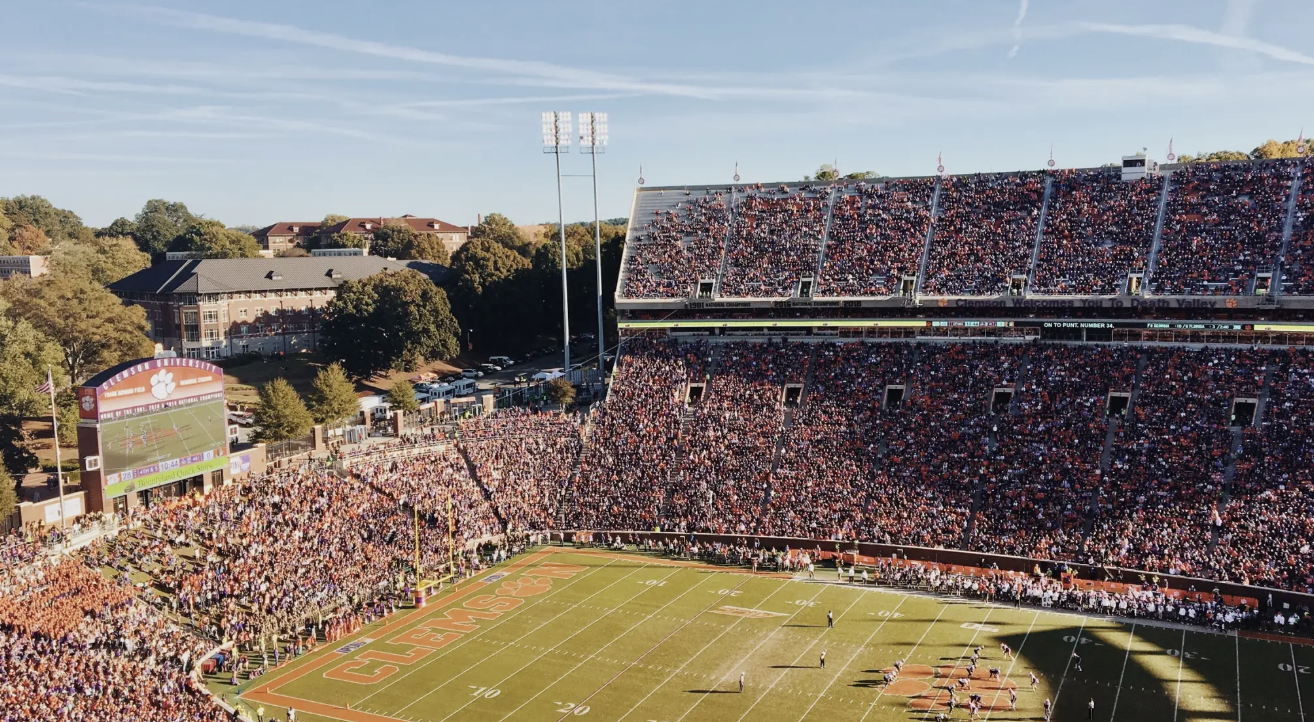
Photo Courtesy Erin Doering
Clemson Memorial Stadium (Clemson University Tigers): Two national championships and four title appearances later, the Clemson Tigers are rolling. They’ve participated in the GameDay Recycling Challenge over the same course of time. They’ve won this competition in 2014 and 2018. More than 123,000 pounds of materials were recycled in 2013, and 60,000 pounds were collected in 2014.
The recycling program took off thanks to a partnership with Coca-Cola in 2009. The company donated 100 bins to Memorial Stadium, also known as Death Valley. The waste diversion rate rose from 20% to 52% by 2016. Volunteers hand out recycling bags to fans during tailgates. The Solid Green group handles most of the sustainability awareness campaigns for fans.
Since 2006, they’ve held Solid Green Day to promote more awareness. In 2021, a month-long campaign to recycle more plastic bottles took place. Memorial Stadium got a sustainable renovation in 2015, with variable refrigerant volume (VRV) technology installed in luxury suites, press areas, coaches’ boxes, and other parts of the stadium. VRVs can increase energy efficiency and control the HVAC system better.
Clemson earned a Silver LEED certification for its Reeves Football Complex, with 86% of construction materials diverted from landfills. New plumbing and electric systems reduced potable water consumption by 40% and a 25% reduction in energy consumption. The Grounds Staff recycle grass trimmings and repurpose sod from football fields for intramural fields.
Clemson’s new Tennis Center was built with green features and tech, like LED lighting and drought-resistant landscaping, and made on an east-west axis for more natural light. The Soccer Complex is also built sustainably, earning honors from Green Globe. Memorial Stadium, Reeves Football Complex, the Tennis Center, and the Soccer Complex are just a few of the 21 LEED-certified buildings at Clemson.
Tennessee
The Volunteer State is another area with heritage in college football. However, the rise of Nashville and Memphis as cities have opened the door for more major professional teams in the state. Tennessee has a proud sports fanbase between the Grizzlies, Titans, Predators, and a few minor league teams.
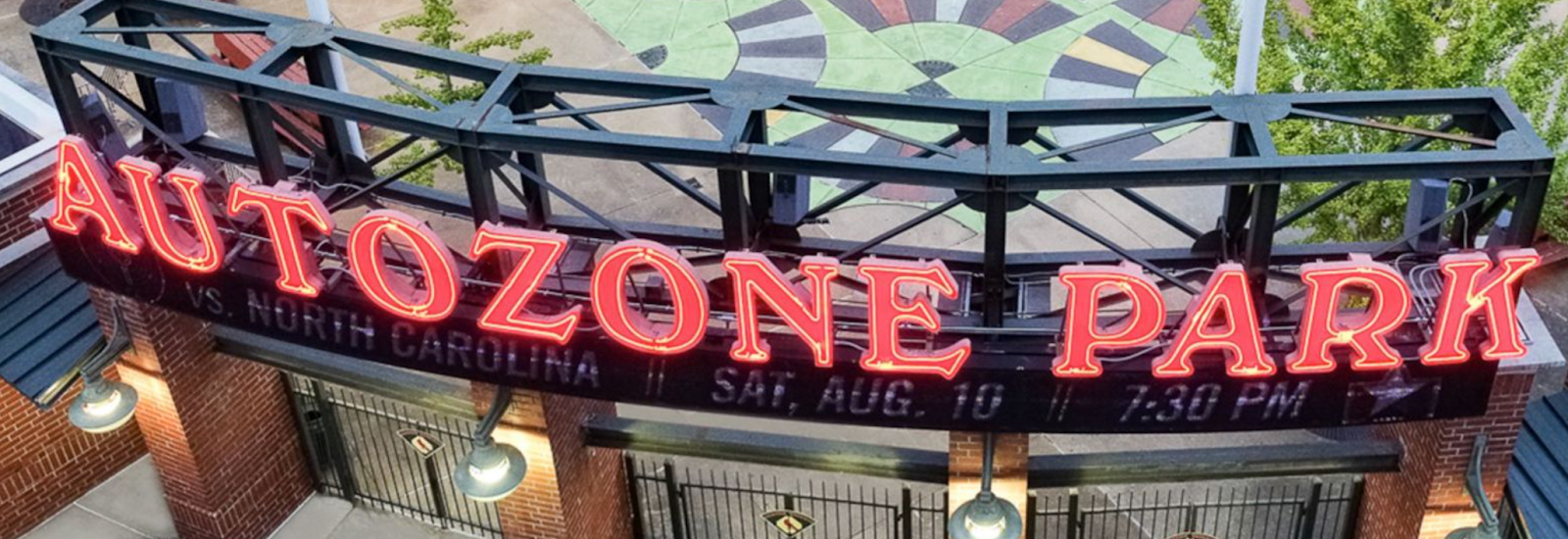
Photo Courtesy MiLB
AutoZone Park (Memphis Redbirds): One of the most expensive MiLB stadiums in the country, AutoZone Park opened in 2000. In 2009, it earned the Baseball America’s Minor League Ballpark of the Year title. It has also helped revitalize downtown Memphis.
The Memphis Redbird Foundation runs the team, the first time a charity has ever done something like this. They support multiple local youth organizations such as Returning Baseball to the Inner City and Sports Teams Returning in the Public Education System. These help kids improve their athletic skills.
The ballpark served as the site for MLB’s inaugural Civil Rights Game in 2007, between the Cleveland Guardians and St. Louis Cardinals.
The Foundation redistributes donations and team funds for youth baseball programs. The Memphis Little League received a large portion of funding thanks to a home-run-hitting fundraiser by the MiLB. The Redbirds partnered with The Hartford Insurance Company for a Junior Fire Marshal program to teach kids about fire safety.
In 2017, the team became the first Minor League one to open an urban rooftop garden. The garden is located on AutoZone Park’s third level on the southwest side of the stadium, where the most natural light is. Each bed contains more than 80 cubic yards of soil, and vegetables like broccoli, carrots, lettuce, and onions are grown. It’s an educational opportunity to teach youths about local produce and nutrition.
Texas
The Dallas Cowboys own the state of Texas. If you don’t believe me, take a ride down through Texas and count how many Cowboys flags or memorabilia are in a person’s yard. Everything is bigger in Texas, including its stadiums. Between the Cowboys and Texans of the NFL; U-Texas and Texas A&M in college football; the Mavericks, Rockets, and Spurs of the NBA; the Rangers and Astros of the MLB; FC Dallas, Houston Dynamo, and Austin FC of the MLS; and the Stars of the NHL, there’s no way you can go to Texas without catching some kind of sporting event.
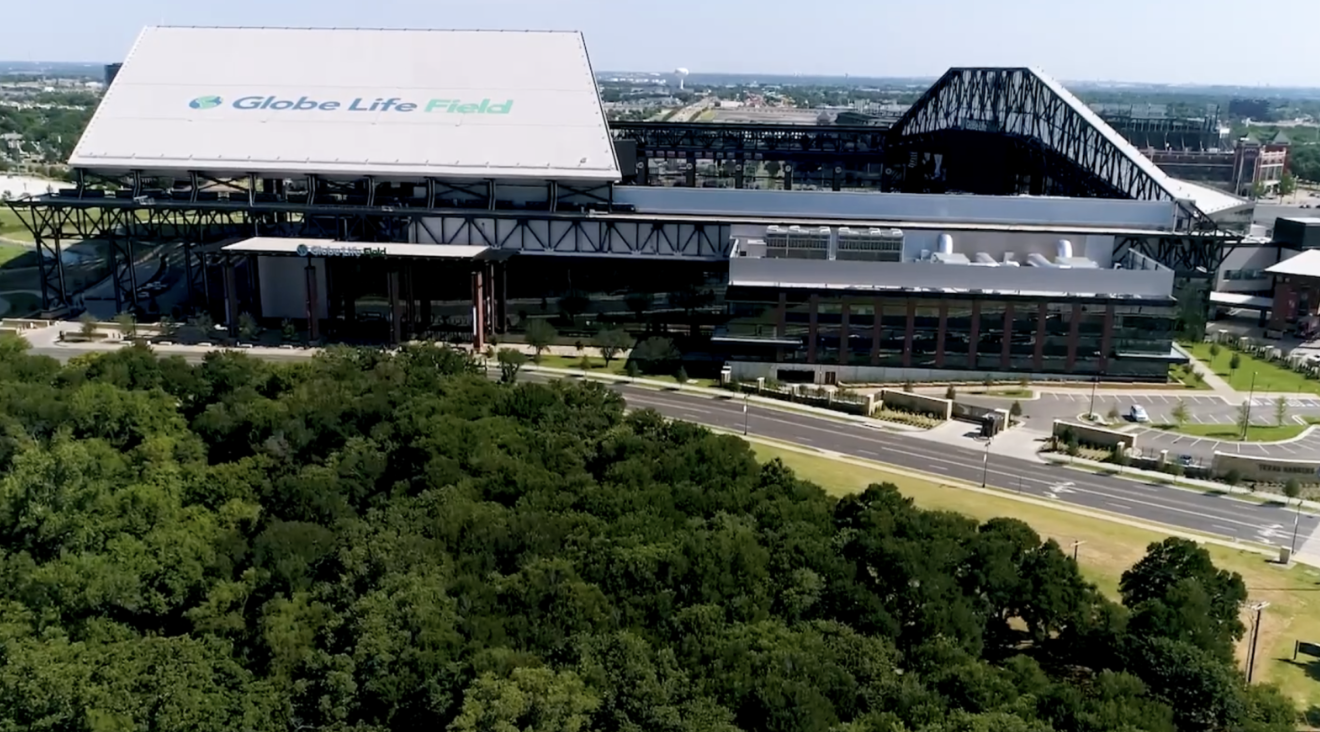
Photo Courtesy Globe Life Field
Globe Life Field (Texas Rangers): The newest professional baseball stadium, Globe Life Field, opened in 2020. However, the Rangers have been acting sustainably since 2006, when the Commissioner’s Initiative on Sustainable Stadium Operations and Team Practices was launched.
Several green programs followed, starting with 110 recycling bins placed around the stadium for proper trash disposal. Team offices shred paper and compact cardboard. Lighting was switched to fluorescent instead of incandescent.
In 2010, a recycling program run by volunteers occurred during the Rangers’ World Series appearances. The club partnered with Scotts to clean up three fields in West Dallas through the Rangers’ Reviving Baseball in Inner Cities program. By 2020, more than 2,000 kids participated in baseball or softball programs.
The new Globe Life field has various modular approaches to waste management. Items were recycled and reclaimed during construction. A real-time energy analytics system was added to the old stadium, and the new one has automated building management tech. The system monitors lighting, energy consumption, air quality, and catering operations.
A new synthetic playing field cuts back on water consumption. The infill is made from fibers and coconut husks rather than rubber pellets. Irrigation is now mostly used for exterior landscaping, where native plants minimize water use. A retractable roof can shade the stadium without extra A/C, thanks to the lightweight plastic polymer used in the paneling. LEDs and timed lights cut back on electricity in parking lots.
The club also tracks soap, paper towels, and toilet paper usage. Low-flow toilets also promote water conservation. The new stadium collects kitchen grease for biofuel and continues to recycle plastic, carpeting, e-waste, and rubber tires. Uneaten concession food is given to local food banks in Arlington, TX.
During the 2022 season, the Rangers and Anheuser-Busch partnered up for the National Recycling League initiative, where recycling hawkers collected bottles and cans for proper disposal. The prize was a round of beer for all fans at the park one game day.
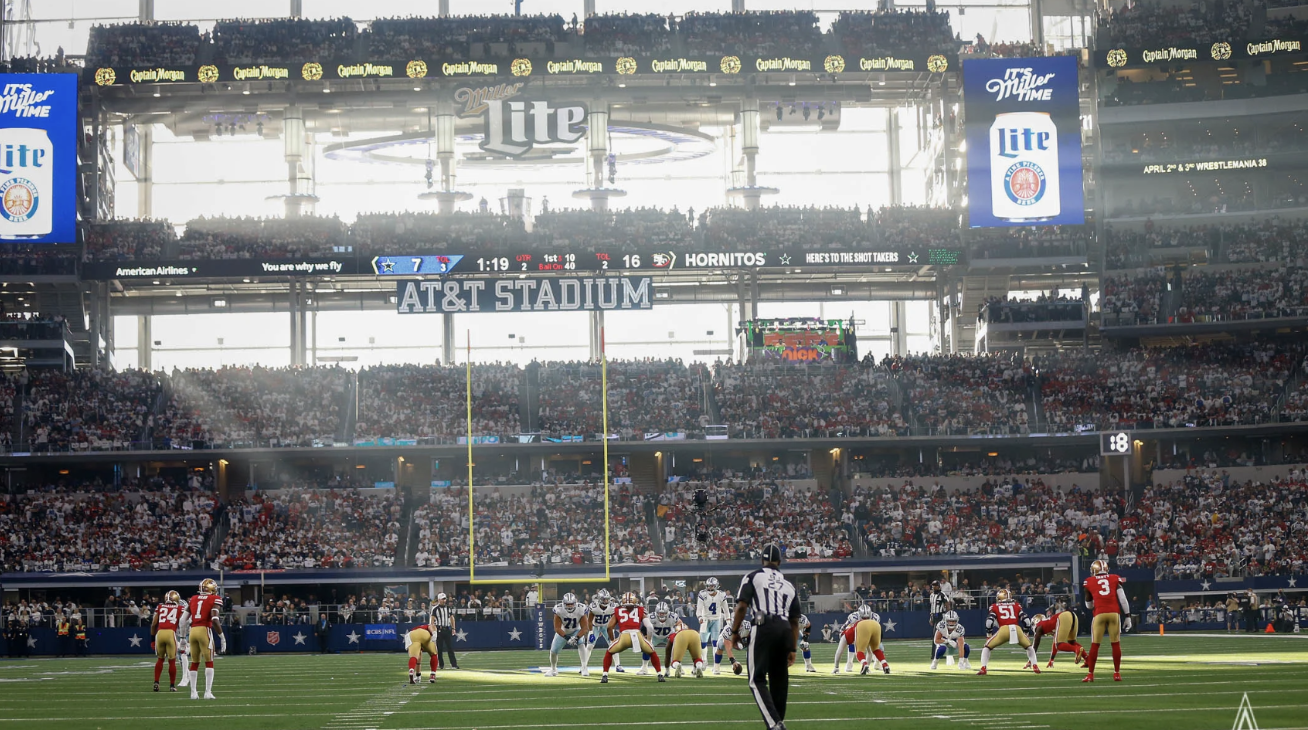
Photo Courtesy Dallas Cowboys Media
AT&T Stadium (Dallas Cowboys): Being the world’s largest domed stadium, AT&T Stadium has the biggest videoboard and massive retractable windows, proving everything is bigger in Texas. The roof and windows are designed to let in natural light and air to lower heating and cooling costs.
Paper, steel, concrete, and construction materials were recycled during stadium construction. All parking lots were made with permeable pavement for better stormwater runoff. Surrounding creeks are buffered from the stadium grounds.
Energy and water conservation were at the forefront of the Cowboys’ sustainability plans. Low-flow plumbing fixtures and energy-efficient systems were installed during construction. A permanent recycling program has been in place for years. The stadium’s escalators can send energy back to the power grid. Lighting was updated in 2015 to LEDs, decreasing consumption by 76%, and improvements to HVAC systems saved more energy, about $1 million each year.
The Cowboys were the first American sports team to install an Orca Green Machine, a bio-composting reactor. It uses microorganisms to convert food waste into nutrient-rich greywater and then safely discharges it into the wastewater system. Around 85,000 pounds of food get diverted from landfills each year.
The stadium’s high-tech tracking system includes when fans buy food and drinks. The Green Sports Alliance says AT&T Stadium has one of the best sustainable food systems in pro sports. Organic produce is also sourced for vegan, vegetarian, and gluten-free meals, and most of the meat and eggs come from Texas-based suppliers. Any leftover concession food is donated to the Dallas food bank and nonprofit Rock and Wrap It Up. The Cowboys also do a lot of outreach in Dallas, like tree-planting campaigns.

Photo Courtesy Texans Photos
NRG Stadium (Houston Texans): NRG Stadium opened in 2002 when the Houston Texans were admitted to the NFL. The venue, named after an energy supplier, is an example of the company’s sustainability goals.
The first makeover of NRG Stadium was switching to LED lights, the first NFL team to have them. The new lighting saves around 60% more energy than previous systems. They’re also programmable, can change color, and integrate with the stadium’s audio system. Motion sensors control office and restroom lights and motion-activated toilets and sinks.
The stadium has an EV parking lot with six charging stations. A retractable roof was installed to combat the Texas heat. Thermal-controlled switches installed in stadium fans regulate interior temperatures. Around 600 solar panels were installed along the pedestrian bridges and main entrance canopy. They generate enough electricity to offset about 22 households in the Houston area.
At NRG Park, where the stadium and surrounding venues are located, 25,000 solar panels save up to 1.1 million kW of energy.
It also saves 806 metric tons of CO2. Around the stadium are 250 waste bins, and the Texans diverted glass, plastic, and cardboard from landfills. Excess food is donated to local shelters.
The team also uses chemical-free cleaning solutions at NRG Park. Thirty acres of green space with over 2,000 trees and two permanent water installations sit in the complex. During Super Bowl LI in 2017, the NFL set up my recycling bins at NRG Stadium. More materials like carpet, fabric, and building decorations were donated to Houston outreach organizations.
The Texans are also heavily involved in the Houston community, running sports equipment and book donation events for low-income families. The NFL worked with NRG and Reliant Energy on green projects like a tree-planting campaign in Bastrop County.
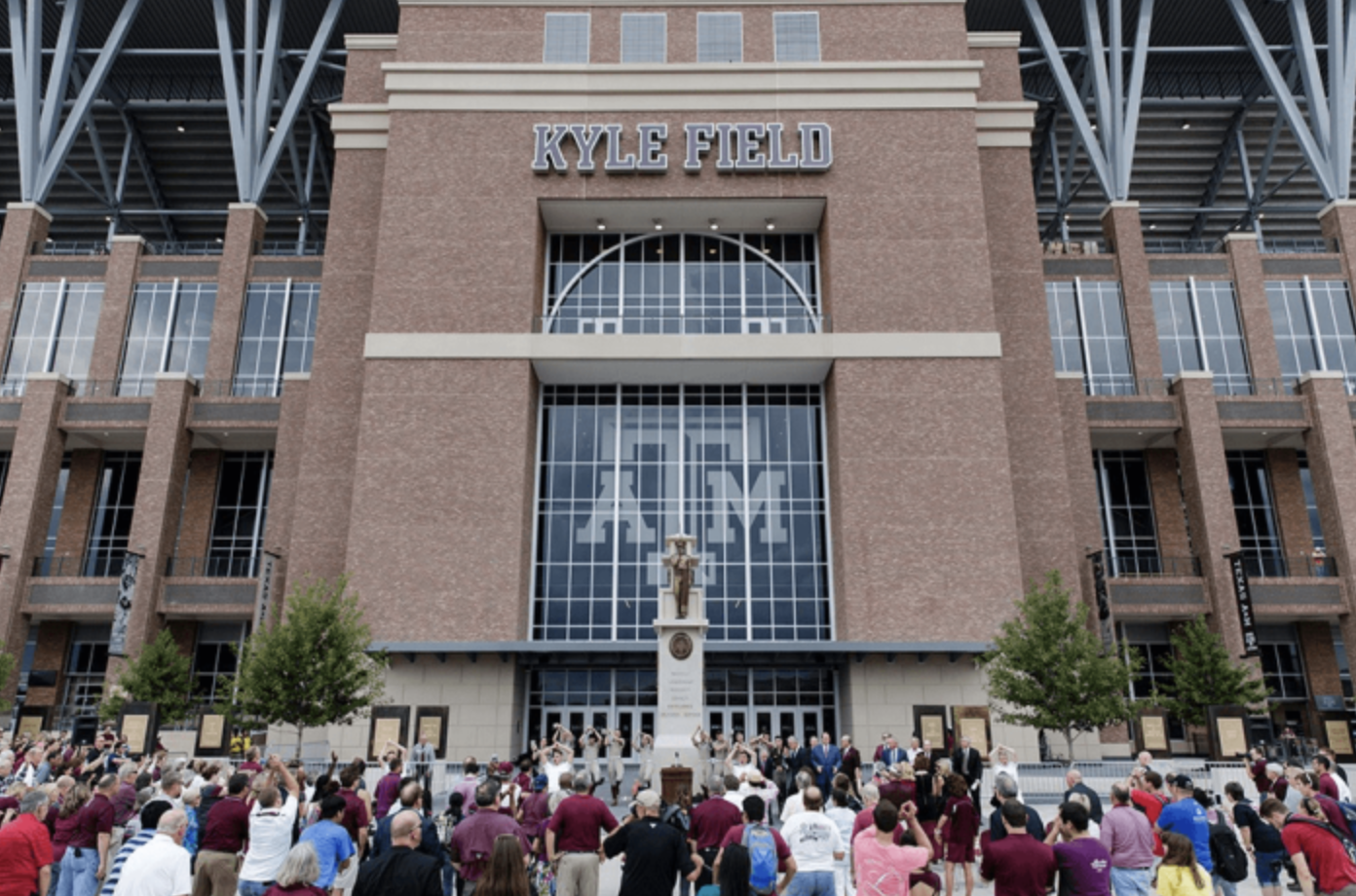
Photo Courtesy Texas A&M University
Kyle Field (Texas A&M University Aggies): Kyle Field is considered one of the scariest places to play football. It’s also one of the five greenest college arenas in the country and ranks sixth out of 10 for Most Energy-Efficient College Football Stadiums.
An old stadium, Kyle Field underwent serious renovations in 2013–2015. Energy efficiency was improved with new elevators, escalators, and lighting systems. Over 200 recycling receptacles were placed around the stadium. Compostable materials are sold throughout the venue. Students pick up trash after home games, 70% of which gets recycled. The school recycles up to 45 tons annually.
Automated systems were installed to regulate heating and cooling as needed. Large canopies were installed to shade fans from the sun rather than use A/C. From April 2019 to March 2020, the Aggies saved more than $500,000 on energy costs.
The initiatives at Kyle Field encouraged further sustainability at Texas A&M. The school ranked first in Texas for sustainability in 2020 and 63rd overall in Sierra Club’s listings of Cool Schools. It’s also the most eco-friendly school in the SEC conference. Even the history of Texas A&M is rooted in nature conservation. The stadium site was a repurposed campus lot used for horticultural studies.
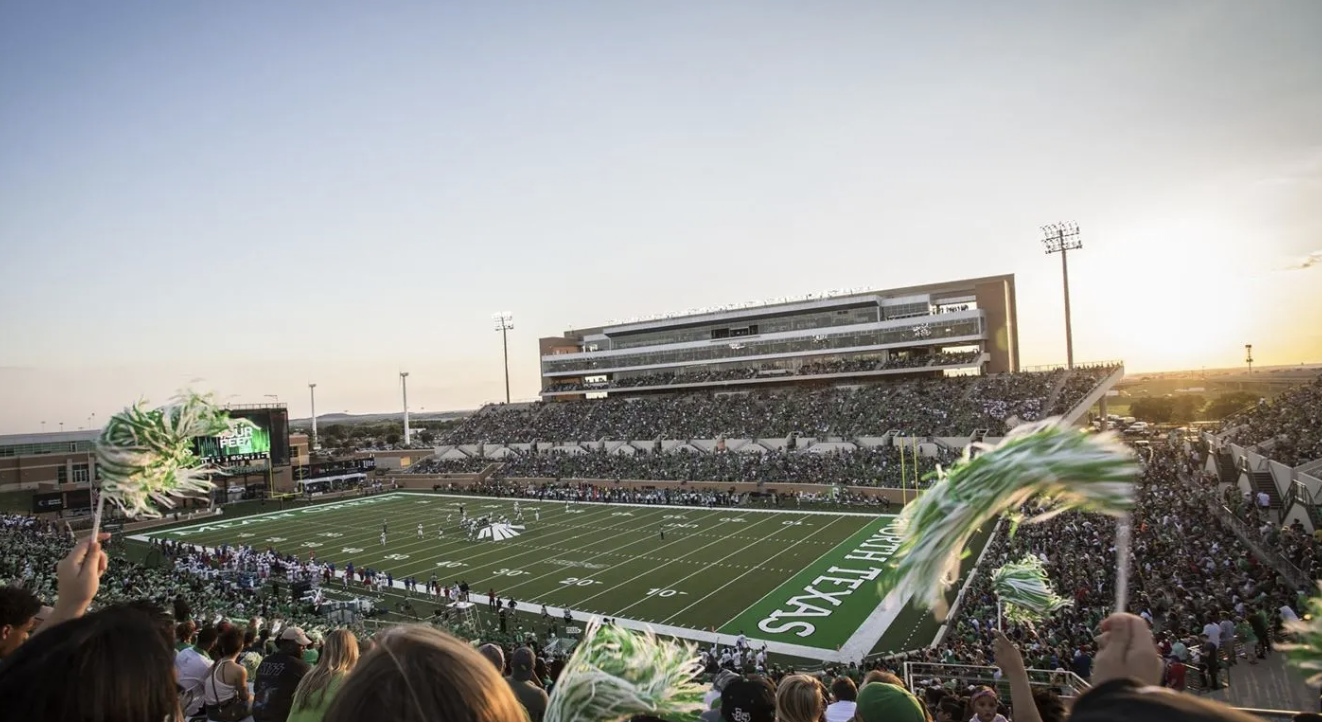
Photo Courtesy Mean Green Sports News
Apogee Stadium (University of North Texas Mean Green): Apogee Stadium is the home of U-North Texas’ football team. In 2008, North Texas became the first large Texas university to pledge carbon neutrality by 2040 as part of the ACUPCC plan. Apogee Stadium opened in 2011, receiving Platinum LEED certification, the first college stadium to achieve it.
In 2012, three large wind turbines were installed near the stadium to generate 500,000 kWh of renewable power. The turbines provide a third of Apogee’s energy. When the stadium isn’t in use, the turbines power the Eagle Point campus with about 6% of its energy.
Apogee was the first new college stadium to utilize on-site renewable energy. A Building Automatic System increases energy efficiency with automated adjustments for HVAC systems. The electric and plumbing equipment can be reduced when the stadium isn’t in use. Energy use is down by 25% as a result of these innovations.
Low-flow plumbing has contributed to 50% less water usage than similar-sized buildings. The stadium’s design enables more natural light and outdoor views across 90% of the venue. Sustainability was also considered during construction, using 20% recycled materials and diverting 80% of construction waste. Low VOC materials were used to improve the air quality.
Around Apogee’s grounds, Post Oak trees cover part of the landscape, with native Texas plants covering over half. Permeable ground and retention ponds lessen the heat island effect and stormwater runoff, lowering potable water irrigation by 75%. North Texas now has six LEED-certified buildings, with annual energy savings of $3 million. In 2017, the college switched to 100% renewable energy.
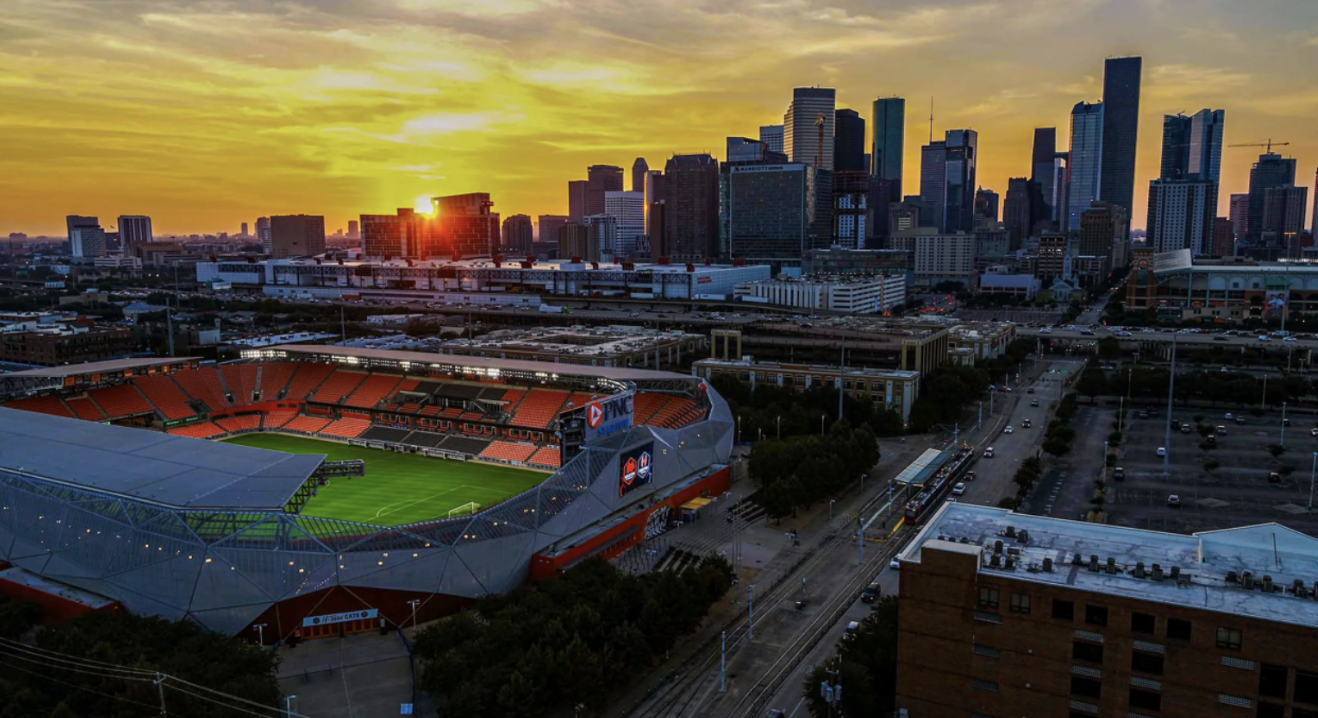
Photo Courtesy Houston Dynamo News
PNC Stadium (Houston Dynamo): In 2022, the Houston Dynamo of the MLS and Houston Dash made Shell Energy their official team energy provider. Both teams play out of PNC Stadium, one of the growing number of soccer-specific stadiums in the U.S. Shell plans to update PNC’s HVAC systems, install LED lights, and set up EV charging stations.
In the next five years, Shell aims to reduce the teams’ carbon footprint. The company will serve as the main shirt sponsor for the Dash. The sports deck was renamed to Shell Energy Sports Deck, and the northwest entrance is now the Shell Energy Gate.
2022 was the 10th anniversary of PNC Stadium receiving Silver LEED certification for its sustainable construction and design. During the building phase, emphasis was placed on using low indoor air contaminants for healthier air.
Construction materials were sourced, recovered, or manufactured within 500 miles of the stadium. All wood materials were FSC-certified, and over 85% of construction waste was diverted from landfills.
A partnership with GreenStar Recycling made recycling easy and accessible throughout the arena. The Dynamo also purchases post-consumer and pre-consumer content to reduce landfill-bound waste.
Preferred parking spaces for low-emission vehicles are scattered throughout the lots. Energy-efficient roofing and aluminum panels reduced energy consumption by 20% and increased airflow. New water-efficient fixtures reduced water usage by 41% and eased strains on local supplies.
The Green Sports Alliance honored the arena with Environmental Innovator of the Year in 2016 for its ongoing green business practices. Shell and theme joined the Trees for Threes campaign, with the difference being trees are planted for every victory the Dynamo or Dash earns. Another campaign, Free Kicks for Food, provides free meals to Houston charities, and Corner Kicks for Kids also tackles child hunger. Both the Dynamo and Dash have played charity matches for Houston nonprofits.
Utah
Another mountainous state known for skiing, snowboarding, and wilderness excursions, the Salt Lake City area has boomed in popularity. While there aren’t as many pro sports teams in Utah as in Colorado, the Jazz of the NBA and Real Salt Lake of the MLS have captured the attention of sports fans in the state. The University of Utah also has a respectable football program, adding to the sporting culture of the state.
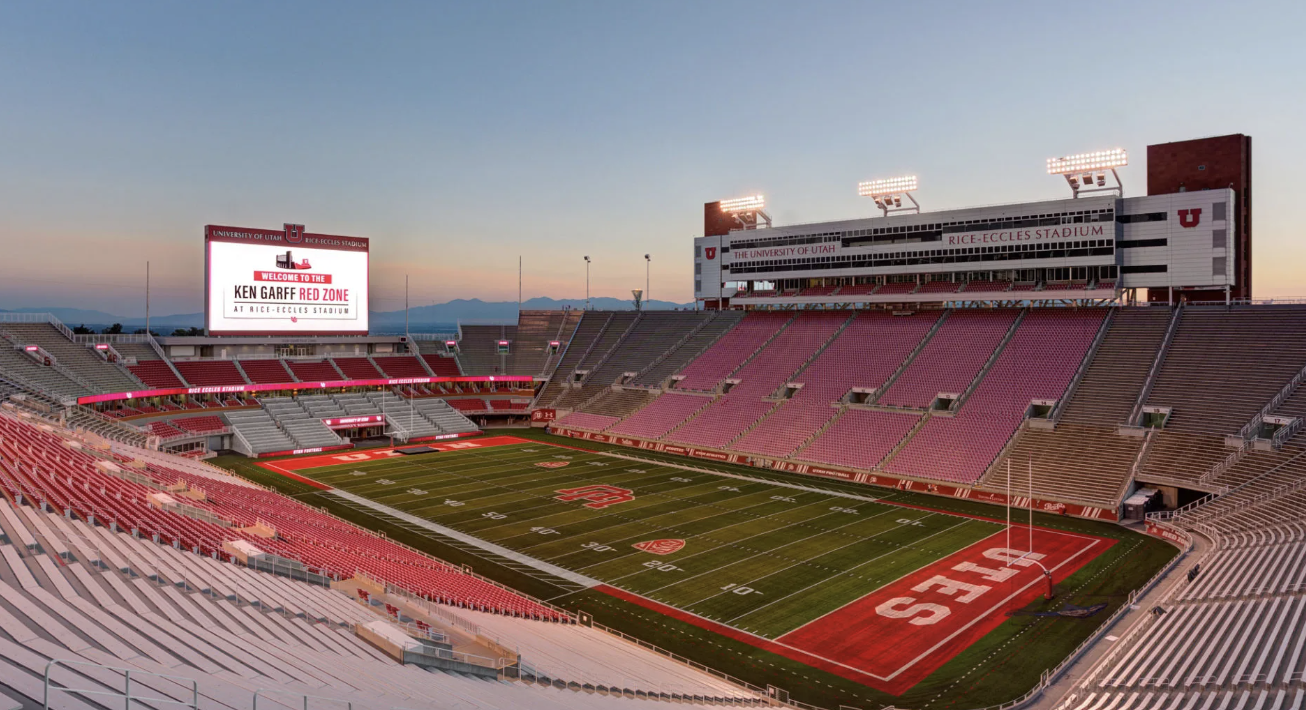
Photo Courtesy Utah Stadium News
Rice-Eccles Stadium (University of Utah Utes): In 2011, the University of Utah (U of U) joined the PAC-12 conference and the Green Sports Alliance. Since then, it has been a very sustainable school. The school earned a Bronze rating for the STARS program for its sustainability measures. By 2021, STARS upgraded Utah to Gold.
The green initiatives began with the Recycle Rice-Eccles program at the stadium. Three hundred students volunteered to give out t-shirts and raise awareness about environmentalism. More than 35 tons of recycled materials and a 25% waste diversion rate were some of the first accomplishments. Bikes were used to ride around and collect trash from tailgate spots, called the RecycBike Brigade.
Football games, men’s basketball, and gymnastics generate the most waste among Utah Athletics. During the PAC-12’s Zero Waste Challenge in 2012, football and basketball games served as awareness drives for water conservation, pollution reduction, and waste diversion.
Utah won the Fan Engagement Award for the 2017 challenge. Fans were urged to bring personal water bottles to cut down on plastics. A partnership with the Utah Transit Authority allowed fans to use game tickets for free public transportation rides to the stadium — 140,000 fans chose these options. All tickets are paperless now.
More sustainability measures were enacted with the opening of the Huntsman Basketball Facility, the first Utah athletic complex to earn Gold LEED status. Around 25% of construction materials were recycled, and 10% came from local sources. Most of the waste was diverted from landfills, around 85%.
Rice-Eccles Stadium was renovated to meet Silver LEED requirements, adding a more efficient hot water heating system and a well-water-cooled heat pump chiller. The Eccles Football Center, the practice facility, was already Silver LEED-certified.
Virginia
Being situated so close to Washington, D.C., most of Virginia’s professional sports allegiances fall within the District’s teams. However, the deeper you go into Virginia, the more support for local college teams you will find, along with a few minor league teams.
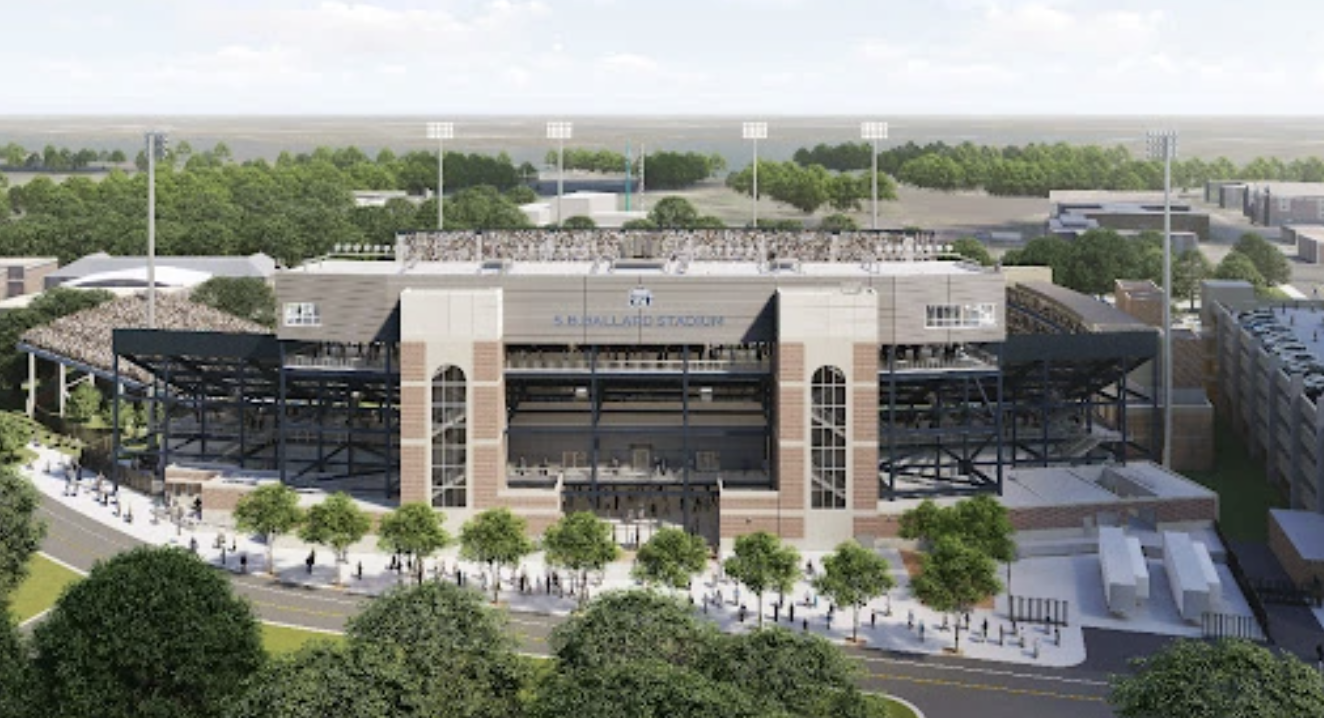
Photo Courtesy Old Dominion University
Kornblau Field at S.B. Ballard Stadium (Old Dominion University Monarchs): Being an 80+-year-old venue, Old Dominion University’s (ODU) S. B. Ballard Stadium was built from the ground up again after Foreman Field was demolished. Seats were moved closer to the field, concessions were modernized, and a larger video board was added. It only took nine months and was built with sustainability in mind.
Open-air sites and eco-friendly features were incorporated into the design, improving water and energy efficiency. ODU was honored by the USGBC with a LEED certification for its efforts. No composite wood made with formaldehyde was used; more than 25% of the building materials came from recycled content, and 80% of the construction waste was diverted from landfills.
More efficient plumbing reduced water usage by 30%. Drought-tolerant landscaping eliminated the need for permanent irrigation. Exterior lighting decreased light pollution, and mechanical systems cut energy use by 373,000 kBtu a year.
The new video board is made from LED lighting, along with two ribbon boards. In the parking lot, fans can park in low-emitting and fuel-efficient vehicle spots. Concessions now use air frying to make fried foods, while one stand only serves plant-based items.
Washington
The Seattle area is the home of most Washington state sports. The Seahawks, Sounders, Mariners, and new NHL franchise Kraken have put the Pacific Northwest sports scene in the limelight. The Seahawks and Sounders have endured a lot of success, winning multiple championships between the two teams. The Kraken made the NHL playoffs for the first time in just two seasons of operating, and the Mariners are building a World Series contender.
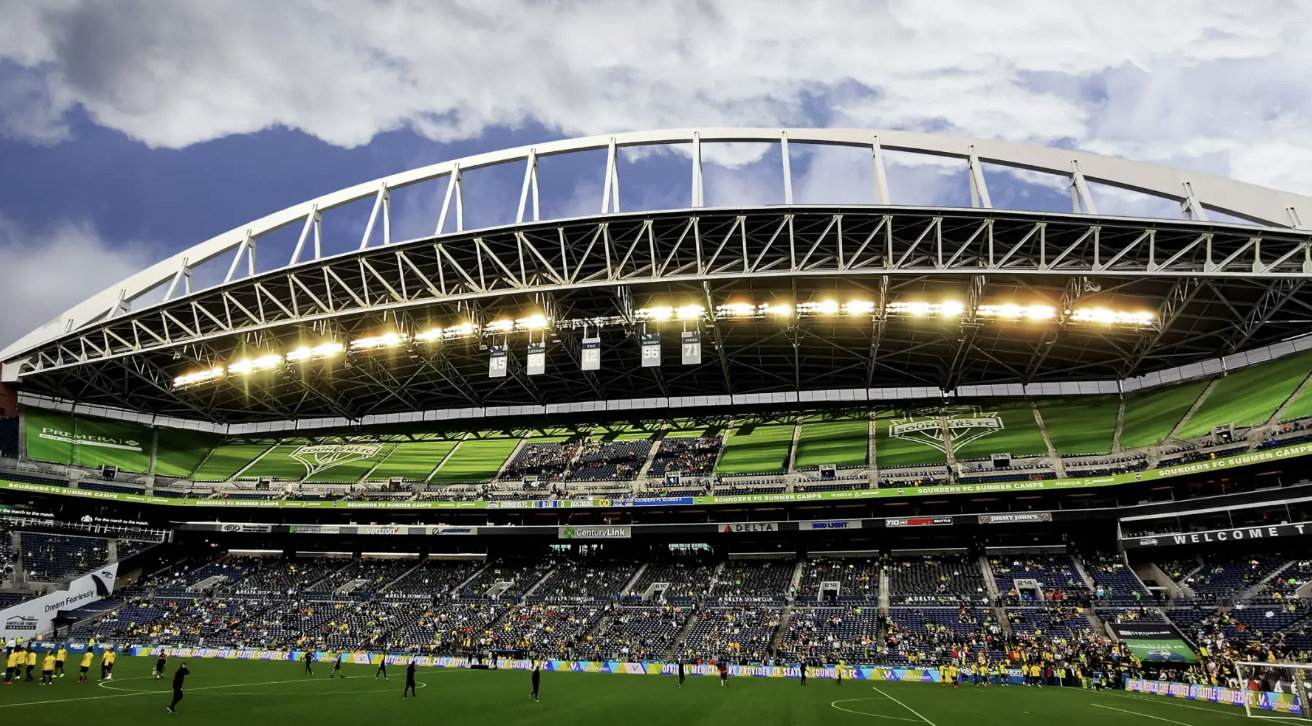
Photo Courtesy Frantzou Fleurine
Lumen Field (Seattle Seahawks & Seattle Sounders): Lumen Field opened in 2002 and has evolved into a very sustainable sports venue. Multiple publications and environmental activist groups consider it one of the best stadiums.
Lumen was built with the recycled concrete of the Kingdome, with 97% of concrete recycled locally and over a third used in development. Owned by First & Goal Inc., the company established a Green Team in 2006 to think of long-term energy reduction strategies.
The first major initiative was a recycling program that installed 75 bins around the stadium. A system can track 17 recyclables disposed of, and 200 more containers were put up in 2007, along with a cardboard baler. By 2016, Lumen reached 97% diversion rates.
Since 2010, the stadium has compostable service ware and post-consumer paper products, and since 2017, ocean-degradable straws. Concessions changed from serving fountain drinks to beverages in recyclable bottles.
Composting programs help turn over 16 tons of food per game into fertilizer, using it to grow organic vegetables served in the stadium. Unused prepared food is donated to local food banks and nonprofits. Almost all concession food is sourced locally, including 93% of seafood. Beer and wine even come from around Seattle.
LED lights and point-of-use lighting controls have saved energy by 25%. The venue added a 2.5-acre solar installation on the roof, one of the largest in Washington state. It generations 830,000 kWh, accounting for 15% of Lumen’s electricity. A “cool roof” was added to reduce heat absorption, lowering annual energy costs by 21%.
Luman is next to subway, train, and bus stops to reduce personal vehicle emissions. The Seahawks and Sounders have participated in many local sustainability campaigns, such as Blue Is Green, a partnership between Puget Sound Energy, Seattle City Light, and First & Goal Inc.
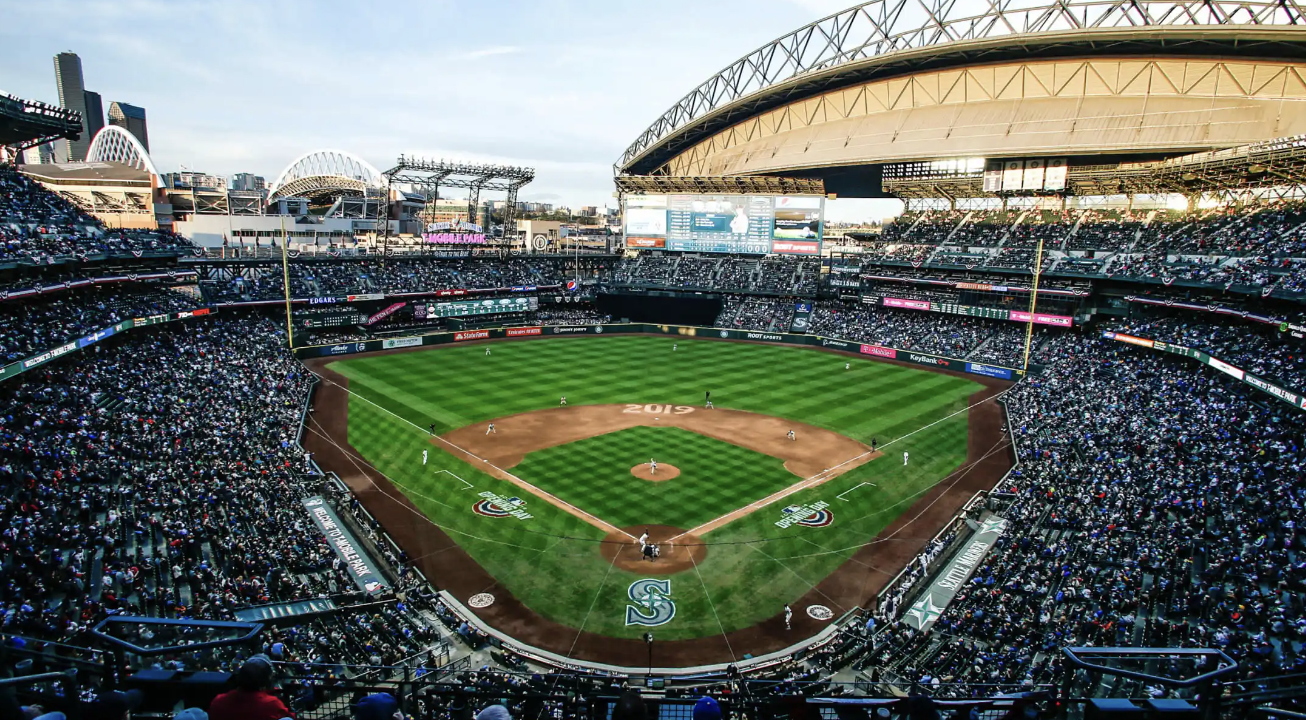
Photo Courtesy MLB
T-Mobile Park (Seattle Mariners): The Mariners are a founding member of the Green Sports Alliance. T-Mobile Park is a pretty new stadium, but the team carried over many sustainability measures it was already implementing.
Recycling was a big focus for the team, and the ballpark was one of the first MLB venues to overhaul its waste management program. Recycling bins were placed around the stadium, with educational posters close by.
There were composting videos, and two mascots were made to teach children about recycling. The team banned most non-compostable items from the stadium and phased out Styrofoam, adding utensils and cups made from potato leftovers and corn resin.
By 2010, over 85% of the Mariners’ waste was diverted from landfills. Everything from paper to grass clippings is recycled, around 3 million pounds of organic matter, and 16 zero-waste stations only offer landfill-bound waste containers. Sodexo Live has helped reduce waste by donating 100 tons of food to local food banks since 2011.
The Mariners were among the greenest MLB franchises for 10 years, winning the Green Glove award in 2017 and tying the San Francisco Giants in 2020. Low-flow plumbing cut water consumption in half. Greywater systems filter recycled municipal wastewater to use for watering the field.
LED lights were installed in the scoreboard, and compact fluorescent lights replaced incandescent bulbs. The Mariners were the first MLB team to use LEDs in 2015. A Panasonic HIT Double solar panel array on the sky bridge connects the stadium to the parking garage.
The team hosted the first carbon-neutral MLB game on Earth Day in 2008. Level 2 EV chargers have been installed recently. These sustainable upgrades cost around $200 million to implement.
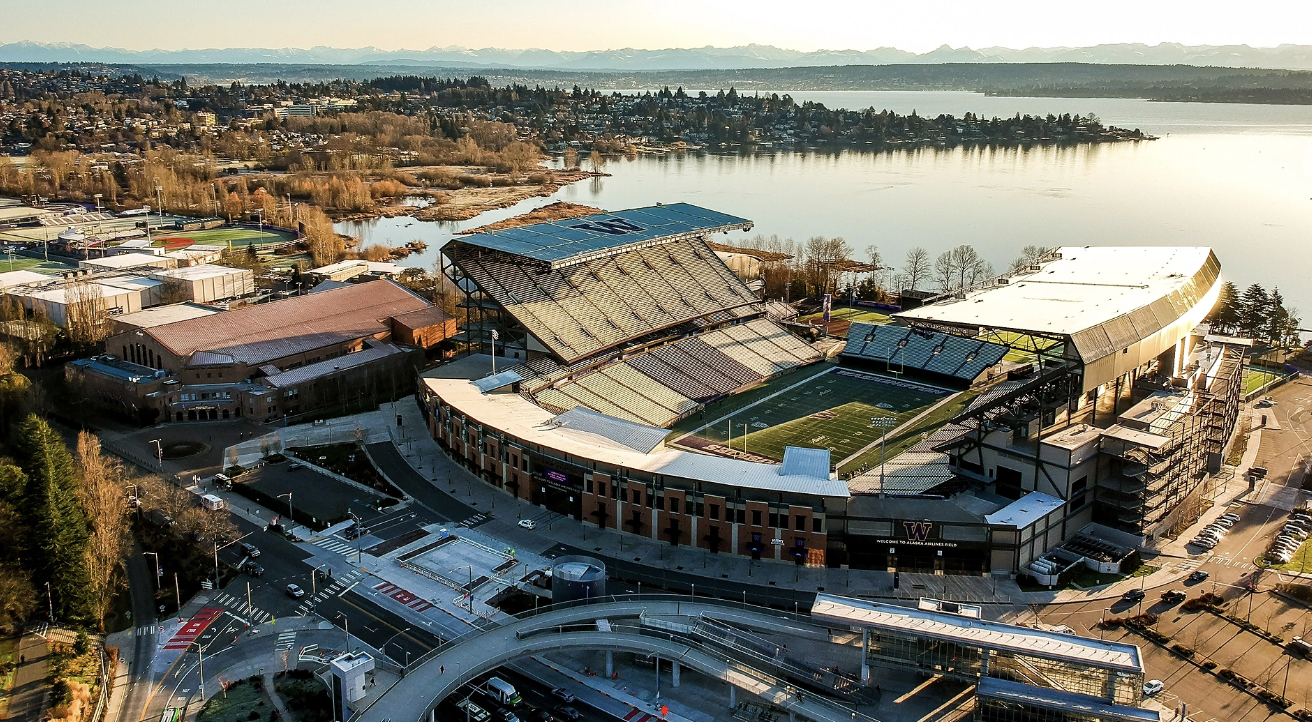
Photo Courtesy GoHuskies.com
Husky Stadium (University of Washington Huskies): With views of Mt. Rainier and Lake Washington surrounding it, Husky Stadium is one of the best college football venues in the country. A $280 million renovation made the arena more eco-friendly in 2013. By 2015, Husky Stadium was already Silver LEED-certified.
The stadium was built in 1920 but has been updated extensively. Pollution capture, stormwater cleansing, construction pollution reduction, and maintaining a green infrastructure buffer were priorities on the college’s docket. Two temporary retention ponds were built to filter construction wastewater. Trucks were cleaned before leaving the building site to reduce pollution.
Trees and shrubs were replanted on-site after being moved temporarily. Native plants filter rainwater, earning the Huskies a Salmon-Safe Certification from the Pacific Rivers Council.
The venue repurposed metal bleachers as decorative elements at the entrance gates. Most building materials were regionally sourced, with 95% of construction waste being recycled or reused.
Concession food containers were switched to ones made from 100% compostable or recycled material. The video board comes with LED lighting. Motion sensors were installed in the stadium to save energy. Low-flow water fixtures were installed in restrooms and locker rooms. An energy tracking system was installed during renovations, making adjusting the lighting throughout the day easier.
Windows can open and close to lower air-conditioning and heating costs. Elevators were replaced with spiral ramps to save electricity. The Natural Resources Defense Council hailed the Huskies for its sustainability measures, saying the school was a model for other college athletic programs.
Wisconsin
Known for the Packers, its harsh winters, and the dairy industry, Wisconsin is the epitome of united by sports. The state has enjoyed some great success recently, as the Packers have continued to be a solid force in the NFL, and the Bucks captured an NBA championship in 2021. It gets the citizens through winter, and that’s why we love sports.
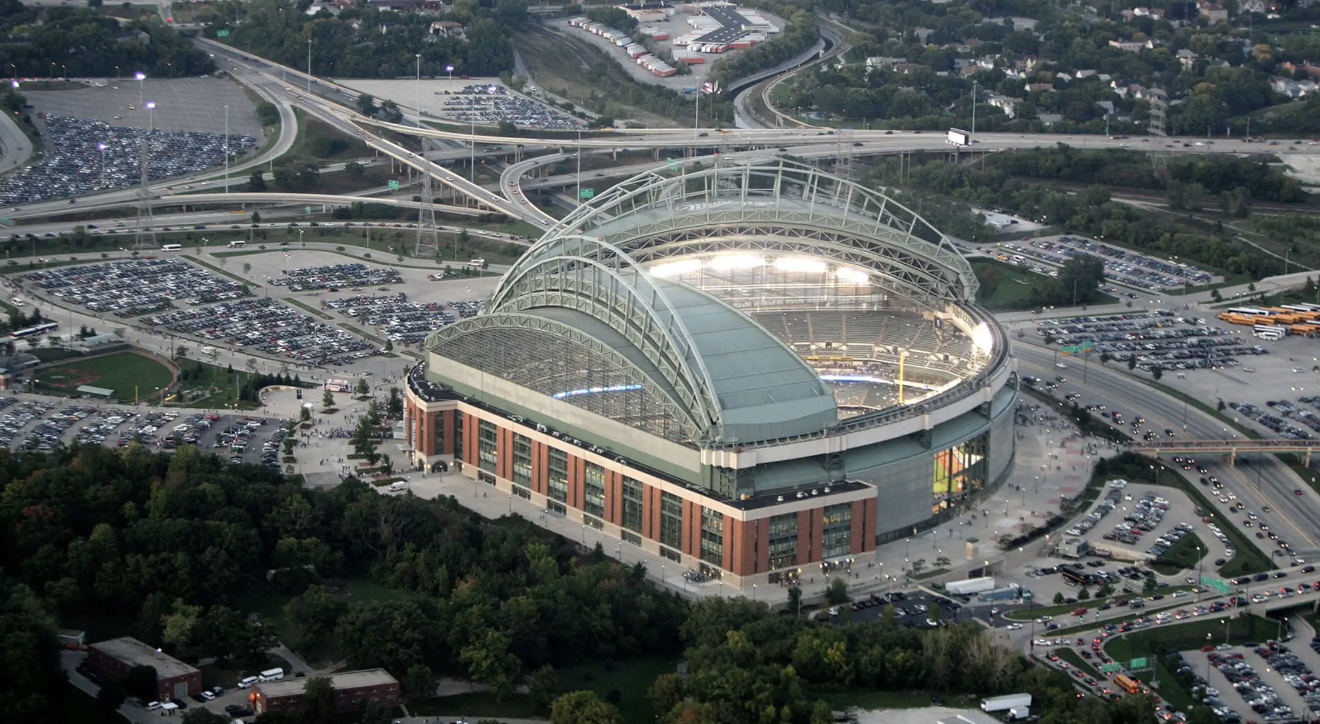
Photo Courtesy MLB
American Family Field (Milwaukee Brewers): In 2012, American Family Field earned Silver LEED status, the first stadium with a retractable roof to achieve this honor. Most stadiums like this have trouble overcoming the energy consumption it takes to open and close the top.
The Brewers have highly efficient HVAC, climate controls, and ventilation systems to counter-act the roof’s energy demands. A hi-def scoreboard replaced the old one, which uses less than half the energy. Low-flow water fixtures saved 3 million gallons of water a year. In total, GHG emissions decreased by 1,153 tons.
Recycling has improved, with more than 100 containers placed around the ballpark and more than 40 in the parking lot. The Brewers recycled up to 10 tons of waste per game, reaching a 35% diversion rate. Uneaten concession food is donated to local food banks.
A partnership with SC Johnson cut down on plastic cup waste with special bins for them. The cups were made into Scrubbing Bubbles packaging later on. It was the first time a pro sports franchise implemented a closed-loop recycling program. Players are getting involved in sustainability initiatives, too.
In 2019, pitcher Brent Suter started Strike Out Waste to reduce plastic waste among his teammates, fans, and team executives. He also helped SC Johnson and the Brewers donate to Players for the Planet every time Suter records a save. Suter is on the Brewers Sustainability Council to offer advice and improve sustainability practices. The team uses reusable water bottles instead of plastic ones.
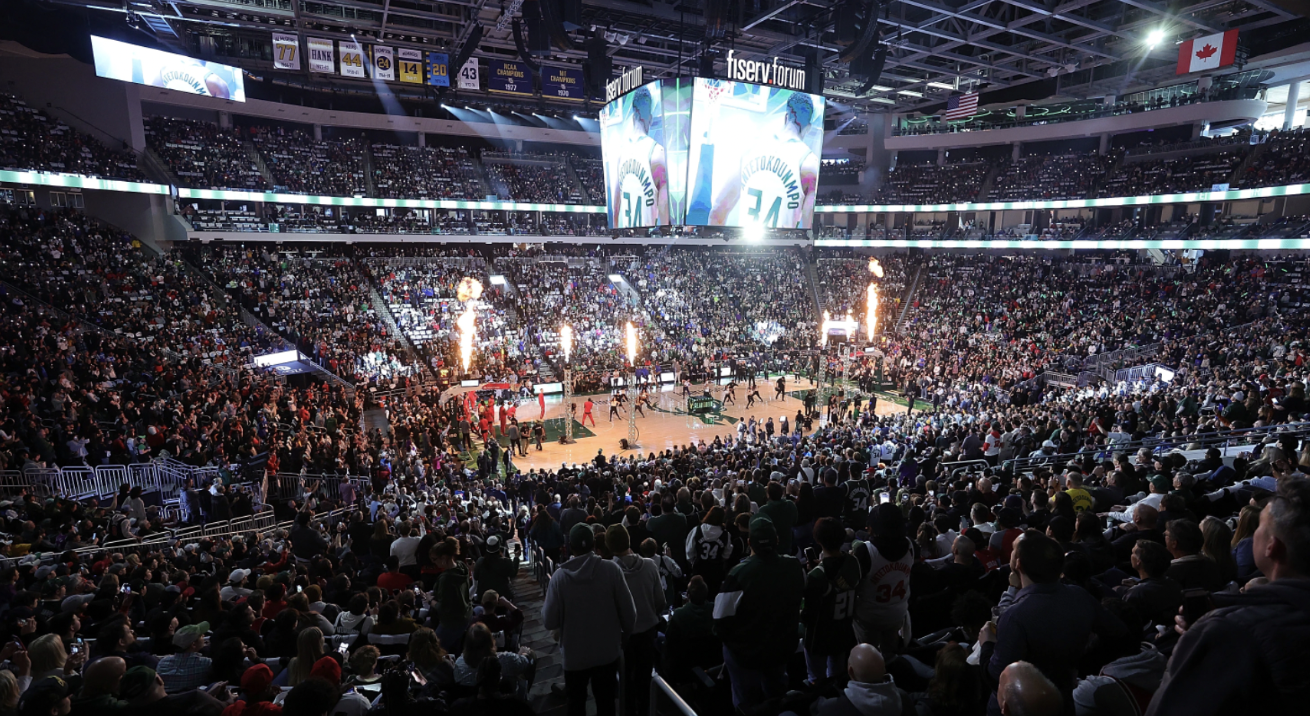
Photo Courtesy Bucks News
Fiserv Forum (Milwaukee Bucks): When Fiserv Forum was in planning, the local organization Bird City Wisconsin wanted it to be safe for birds. In 2018, Firserv became the first bird-friendly sports venue. Around 5–10% of bird deaths are caused by collisions with buildings, affecting seed distribution, pollination, and other natural cycles. A ceramic coating was added to the glass panes to keep birds from colliding with the windows. It’s visible to birds but not humans.
Arena lights are pointed downward to make the arena invisible to birds. During migration season, the lights are turned off at night. The ceramic coating and lighting choices reduce energy consumption as well.
During Fiserv’s construction, construction materials were sourced locally. Partnerships with Wisconsin Urban Wood utilized local white oak in the main and upper concourses.
Repurposed wood was used in the BMO Club, and a heat recovery system cut heat use by 12%. Low-flow water fixtures decreased water consumption by 30%. Native plants also cut down on outdoor water use.
The parking lot features EV charging stations and carpool spaces for lower GHGs. The Bucks have been recycling, including compostable packaging and a plastic straw ban. In 2019, Fiserv earned Silver LEED status. That makes it the first Wisconsin sports arena to achieve this honor. The Bucks have partnered with Greenwood Consulting Group to develop a tracking system for energy use, water use, transportation, and human experience.
In 2021, SC Johnson partnered with the team to improve the recycling and hygiene of the stadium. Cups were recycled and turned into packaging for Scrubbing Bubbles products. In 2022, USGBC upgraded Fiserv’s LEED status to Gold, and platinum was almost achieved.
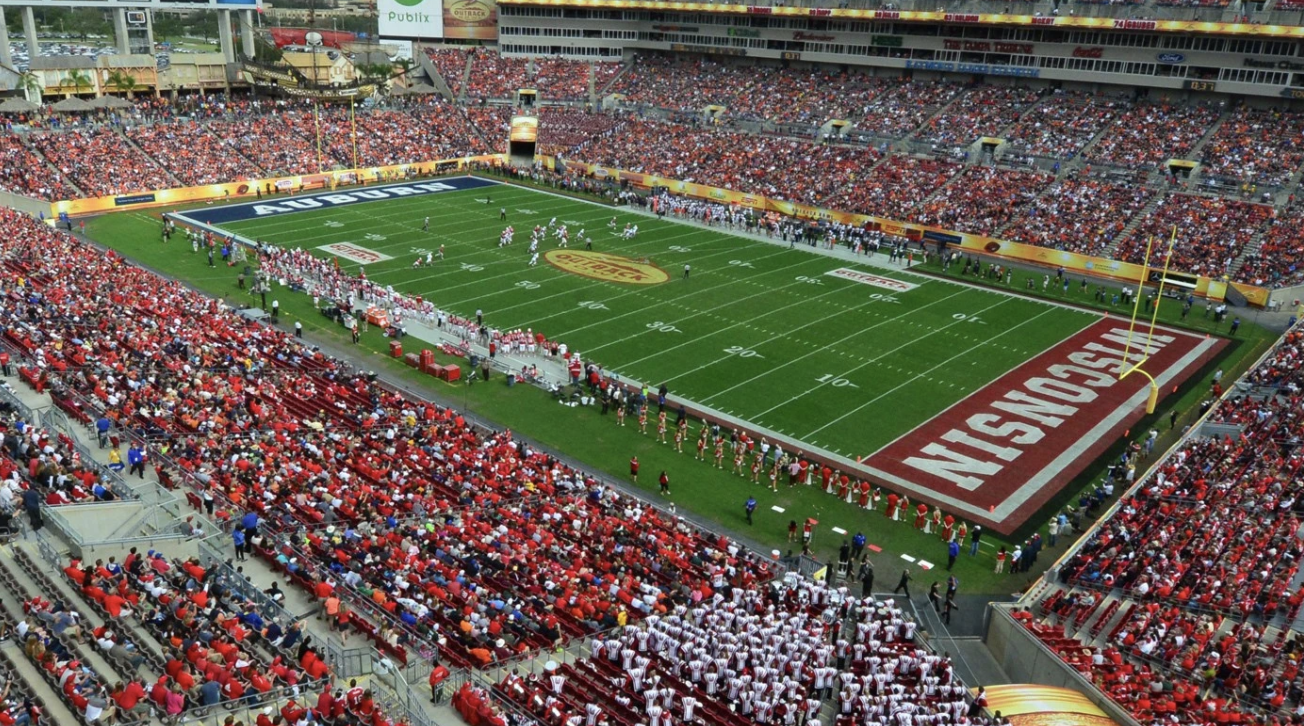
Photo Courtesy University of Wisconsin Badgers News
Camp Randall Stadium (University of Wisconsin Badgers): Camp Randall Stadium was the site of the first carbon-neutral Big 10 football game in 2008. To do this, the university planted thousands of trees on nearby farmland. The school also purchased carbon credits to offset their emissions on game day.
The Wisconsin Athletic Department and ReThink Wisconsin started the Wear Red, Think Green, Badgers Recycle campaign to get students and fans to recycle better. Student volunteers went around the stadium to urge recycling in newly-placed blue containers. Around a ton of waste was collected by mid-season, even before the carbon-neutral game. The entire 2009 season was carbon-neutral after a success in 2008. A partnership with Madison Gas and Electricity offset even more carbon emissions.
In 2012, Camp Randall Stadium upped its recycling efforts, disposing of 43,000 pounds of cardboard and comingled recyclables, and more than 40% of gameday was diverted from landfills. The Badgers placed 24th nationally during the 2014 GameDay Challenge but were second in GHG reduction and third in waste diversion in the Big 10.
That same year, the stadium became a Zero Waste facility, with trash cans replaced with recycling and composting bins. Concession stand cutlery is made from compostable or recycled items. Food was composted as well.

